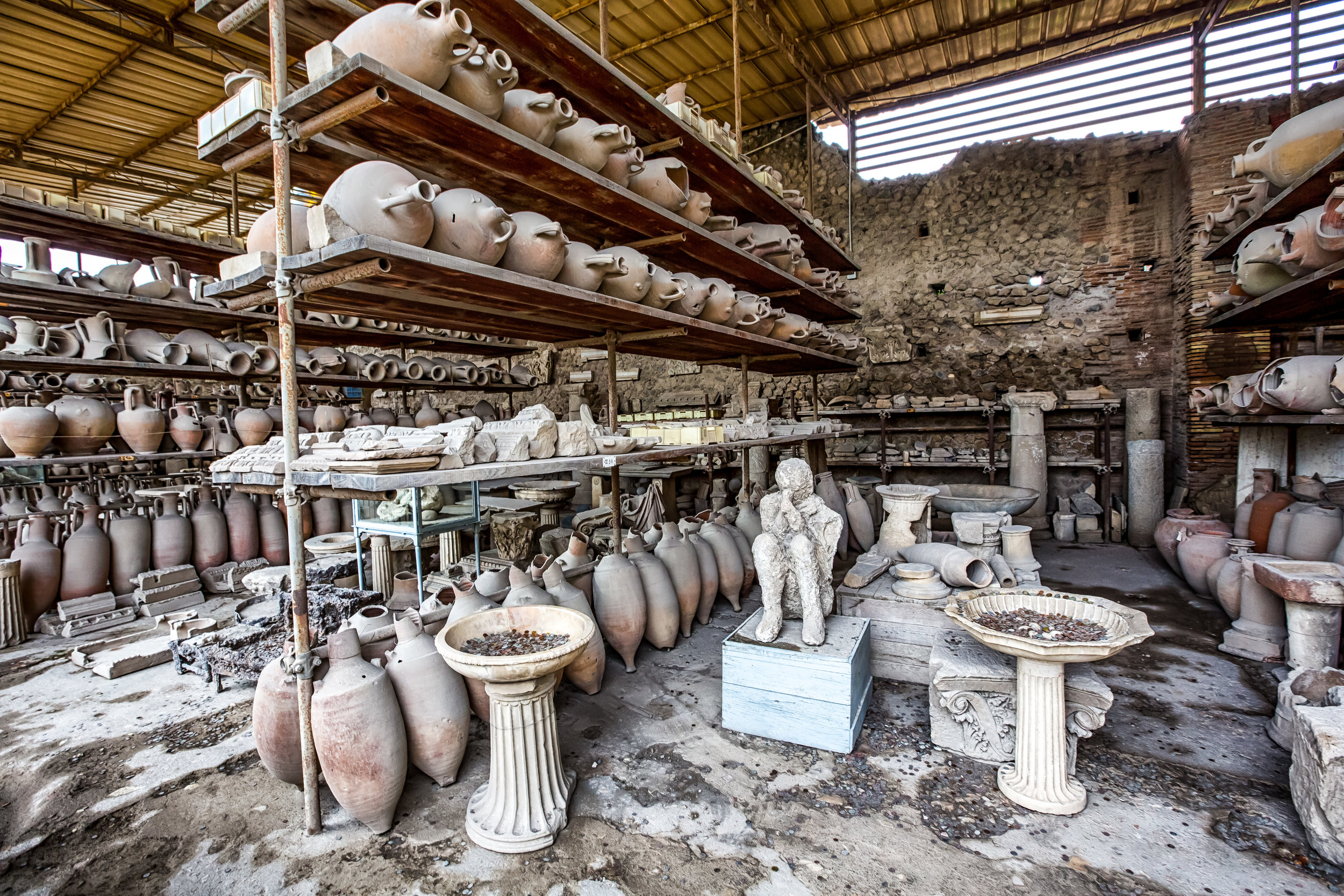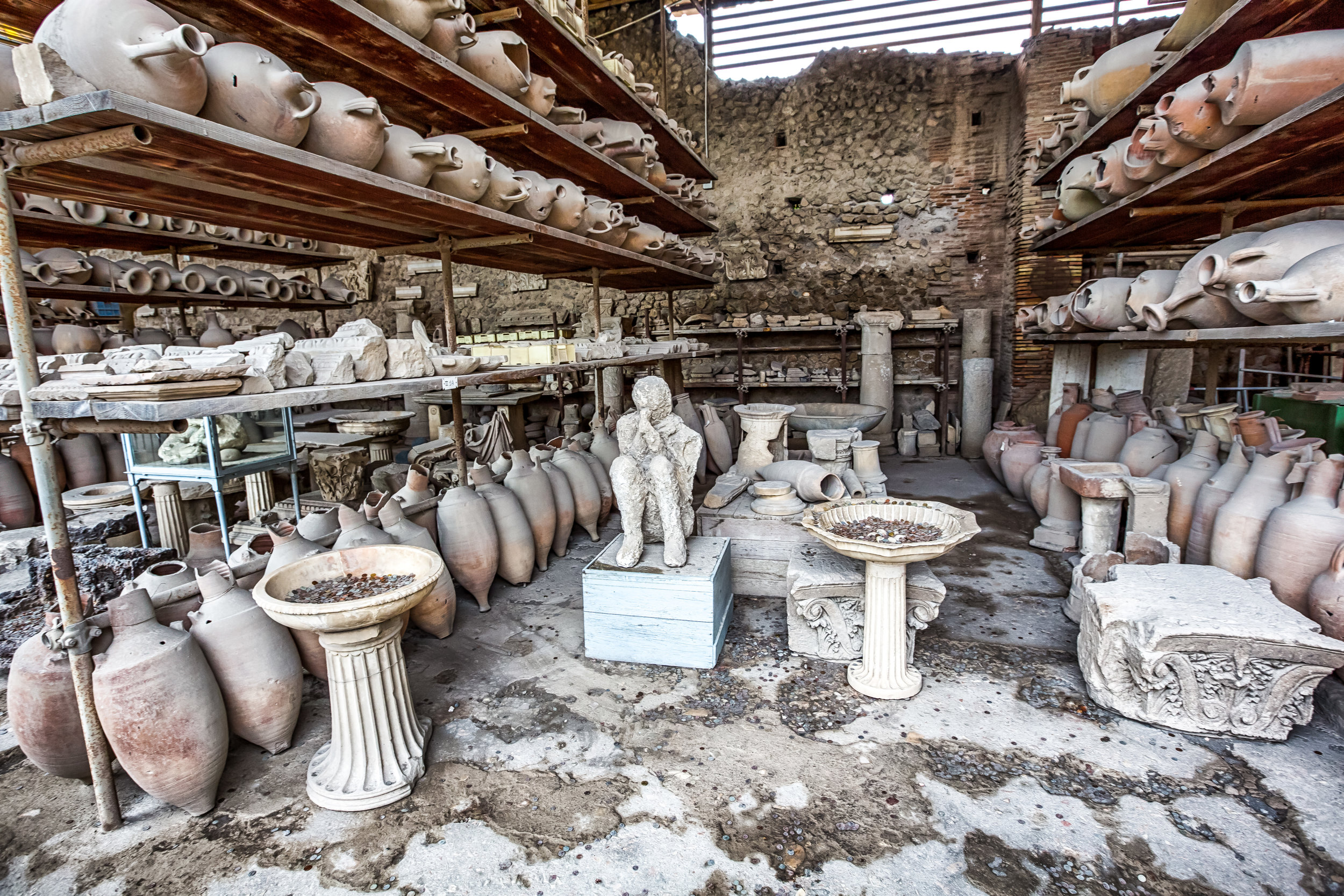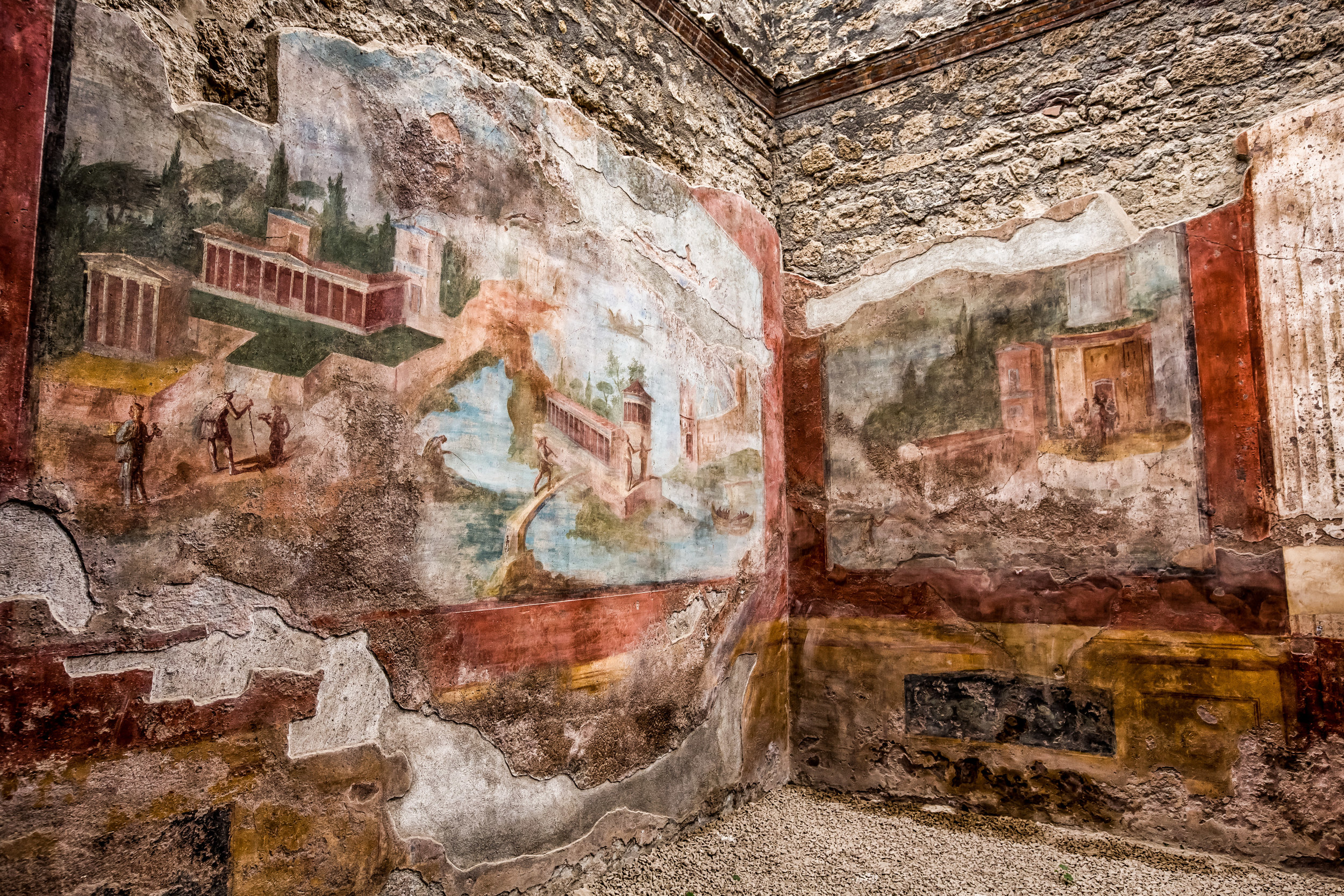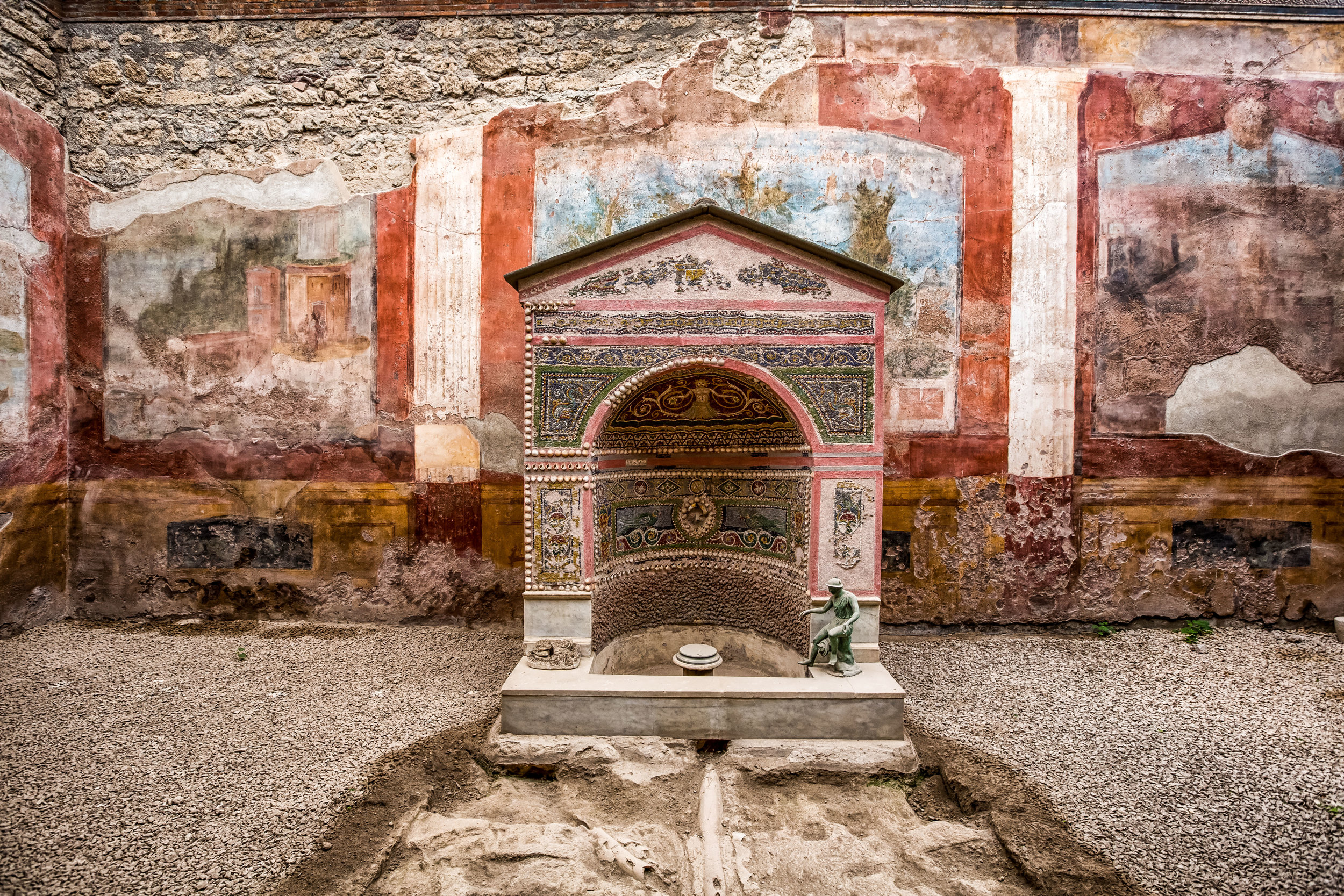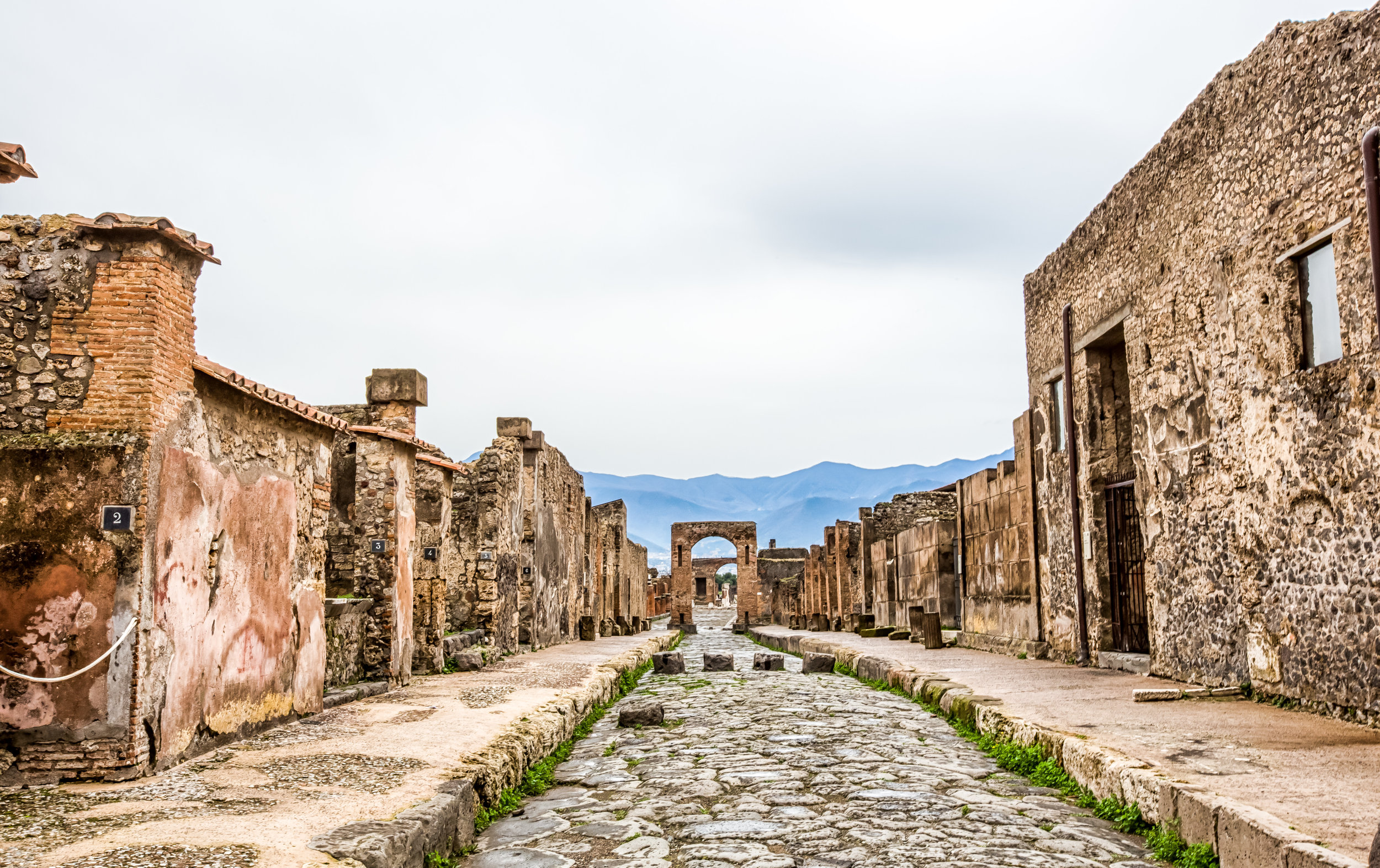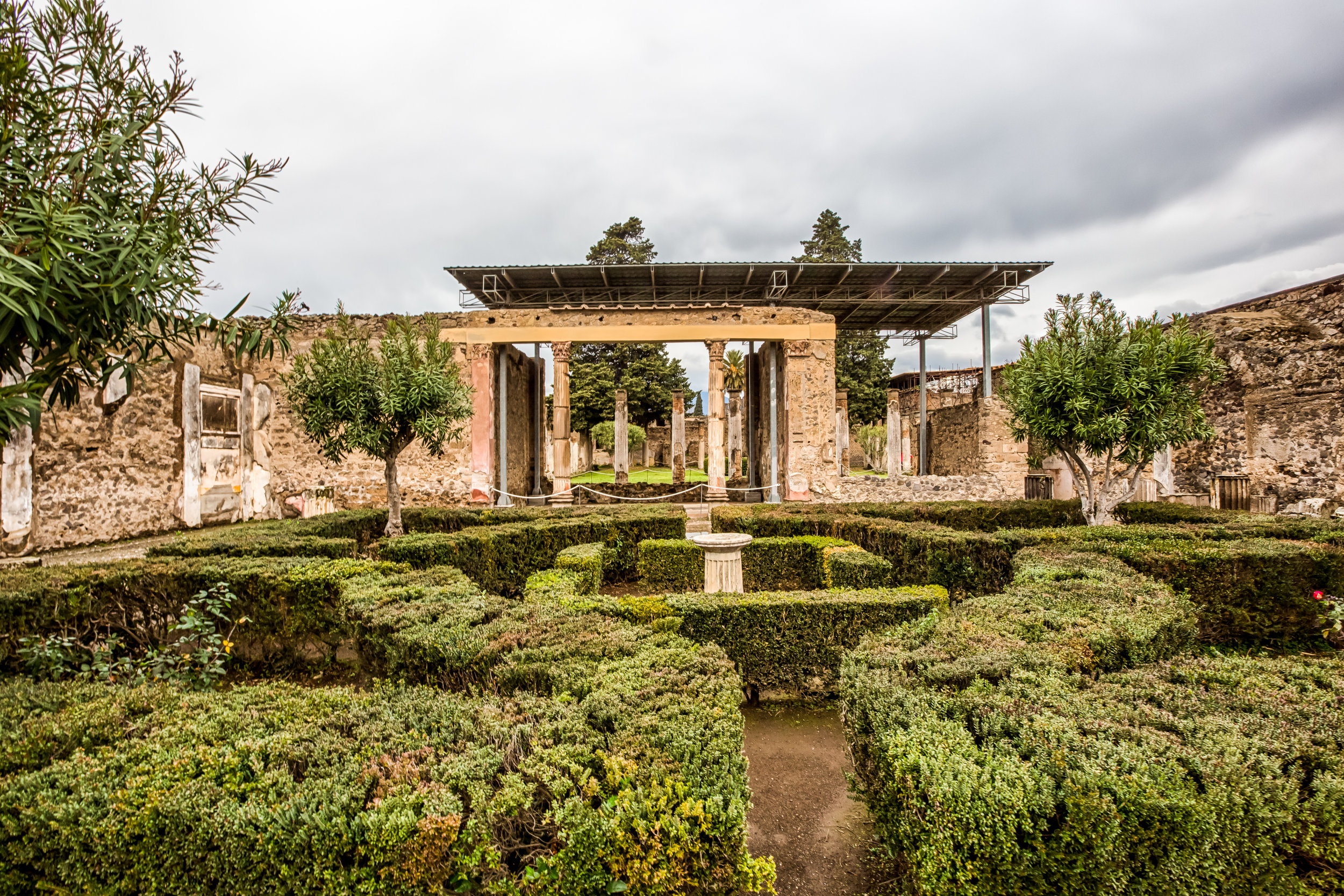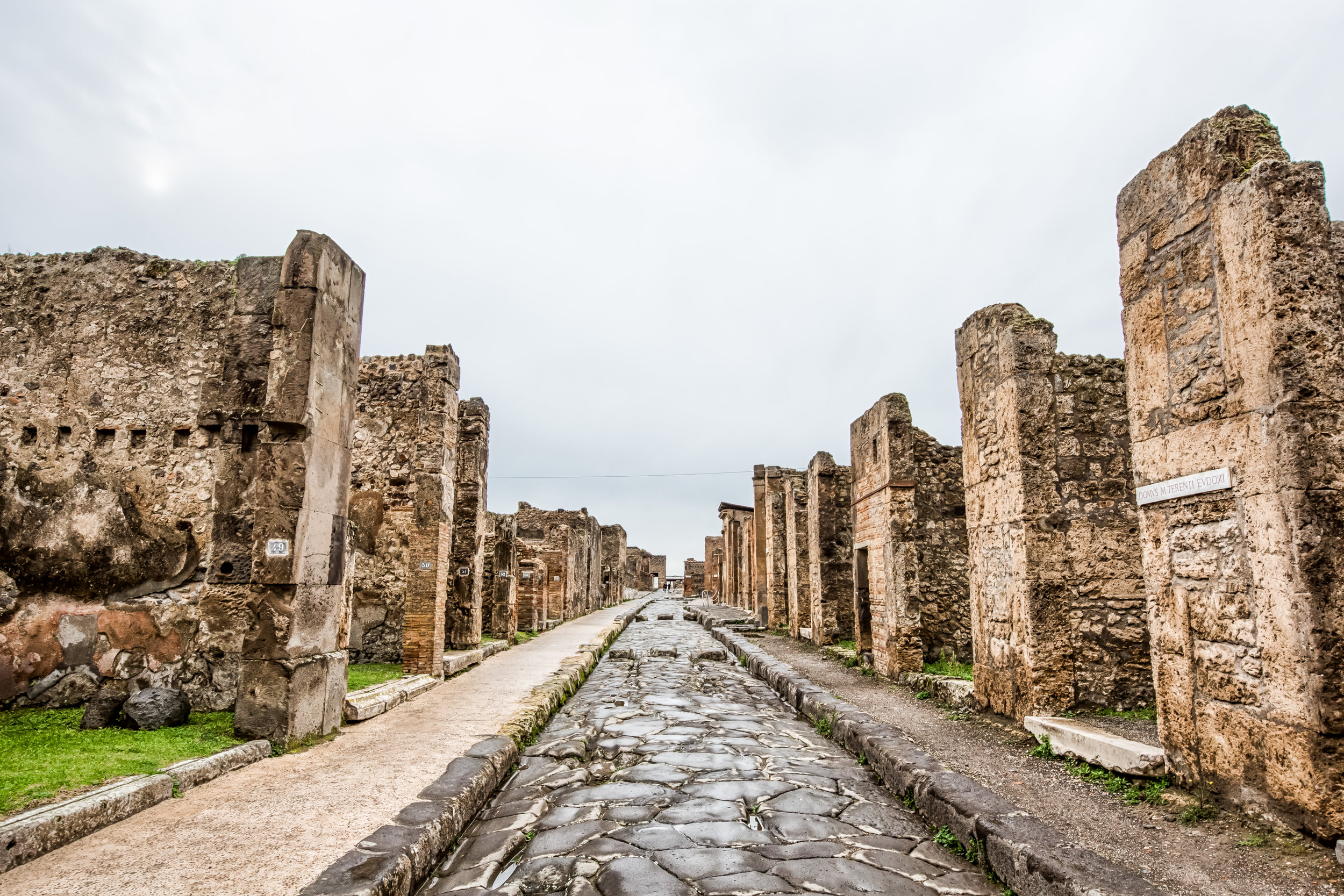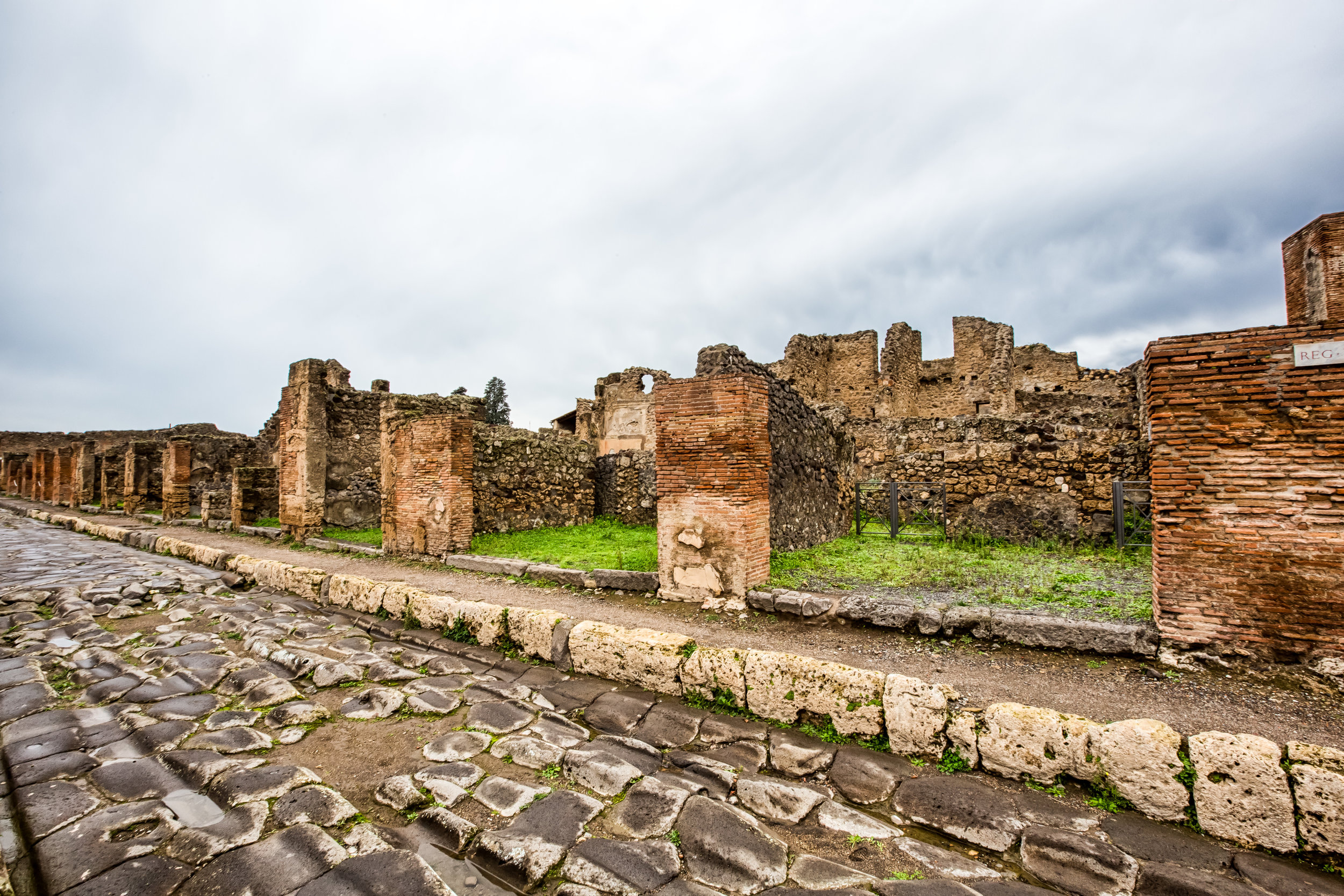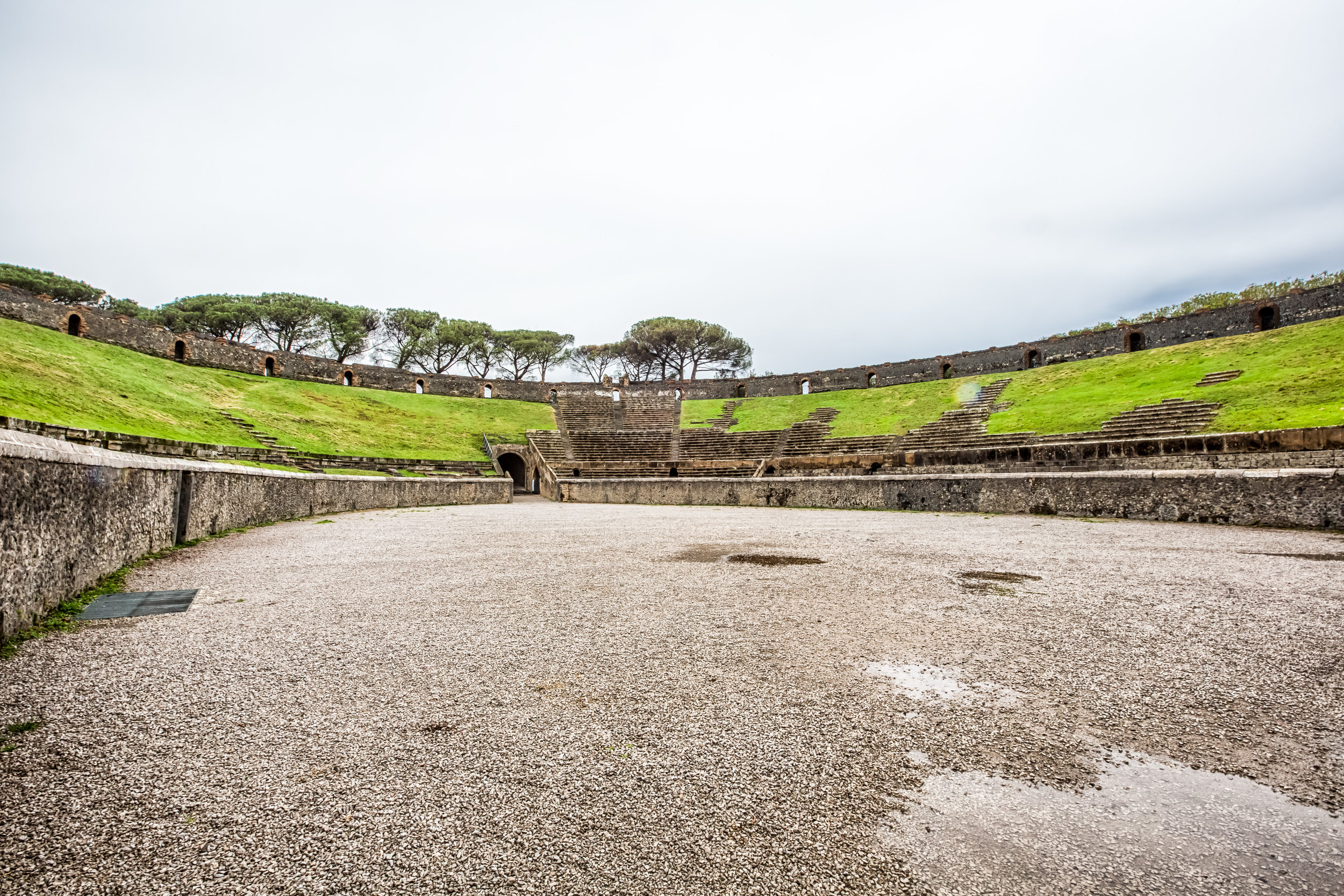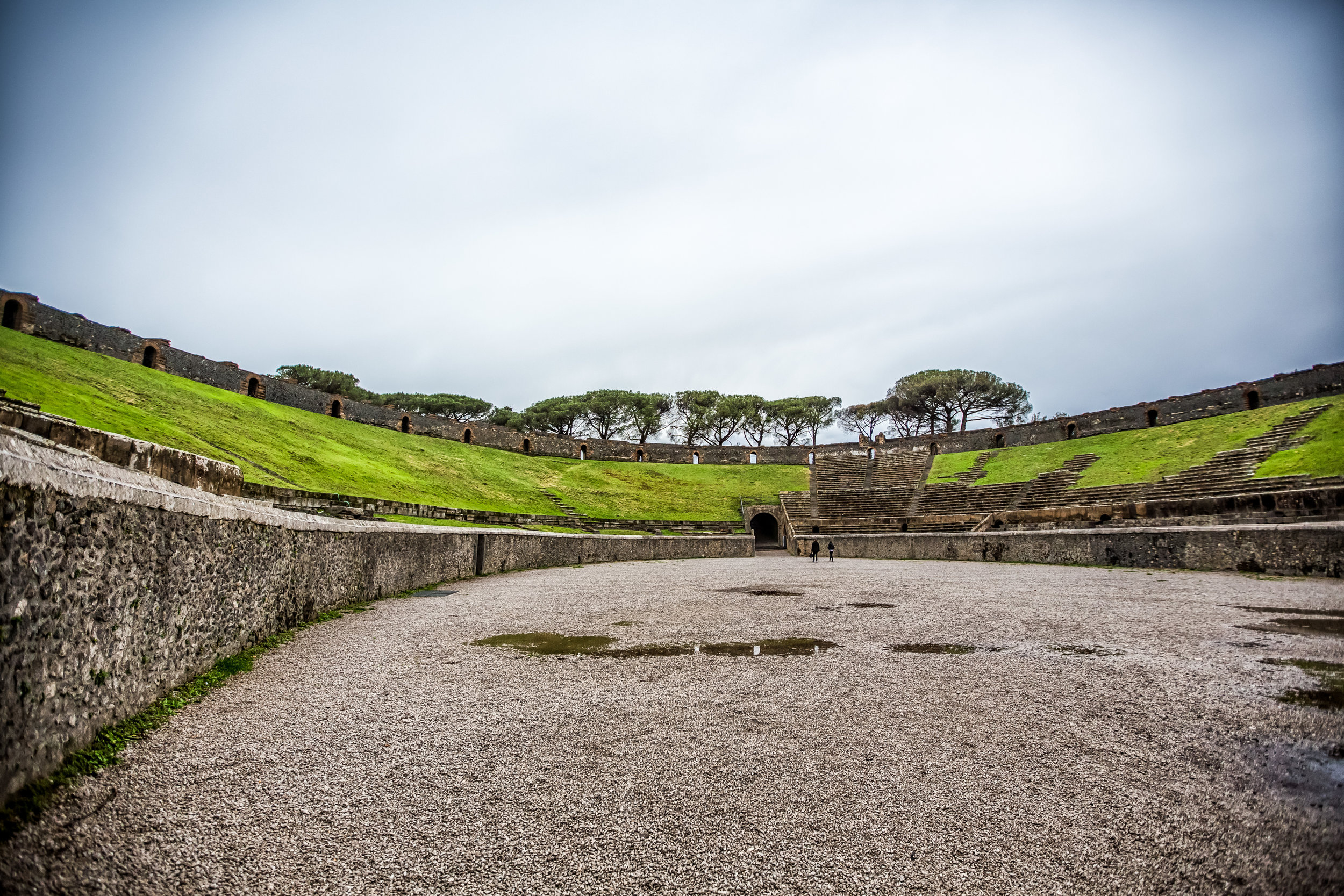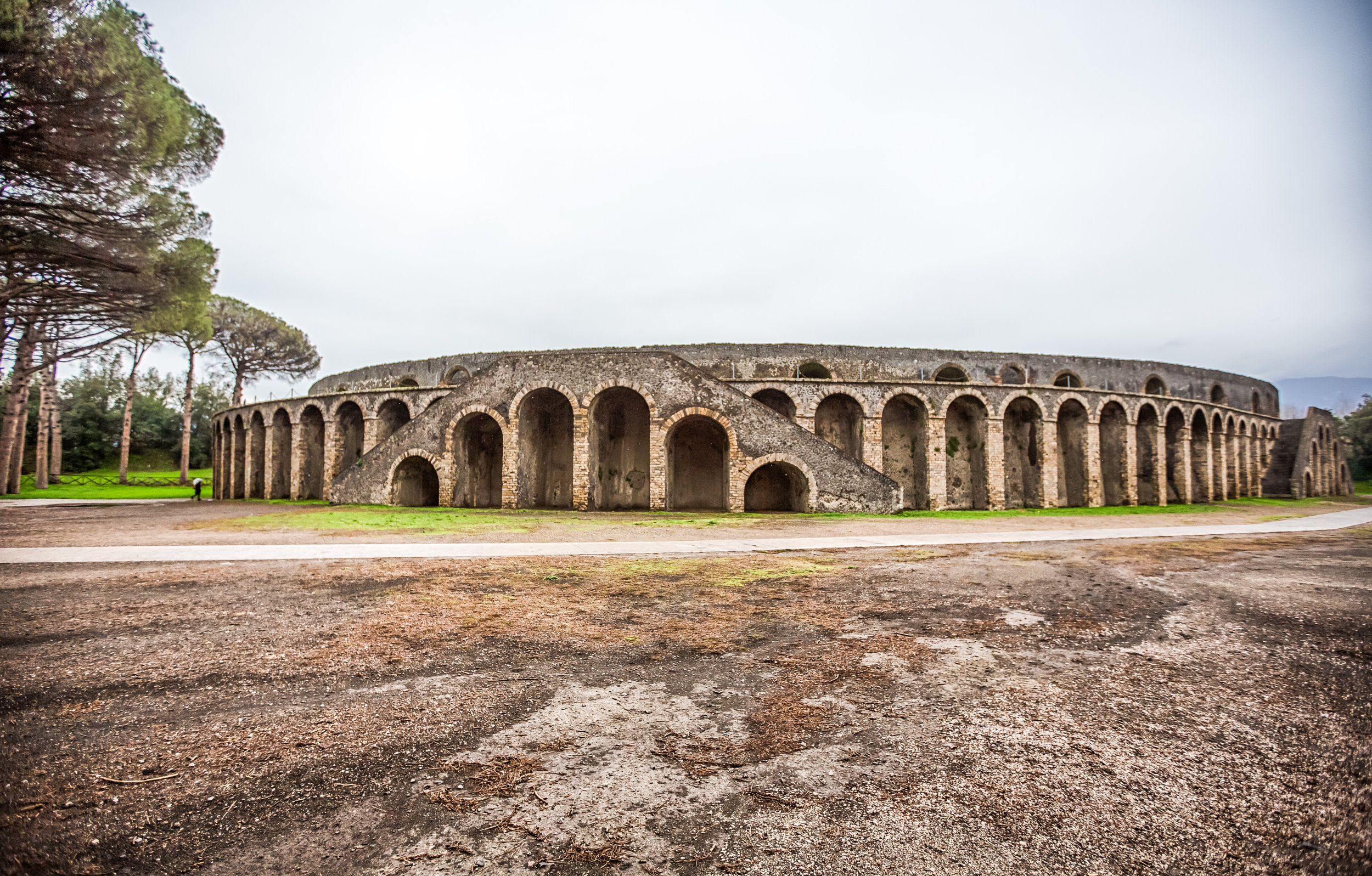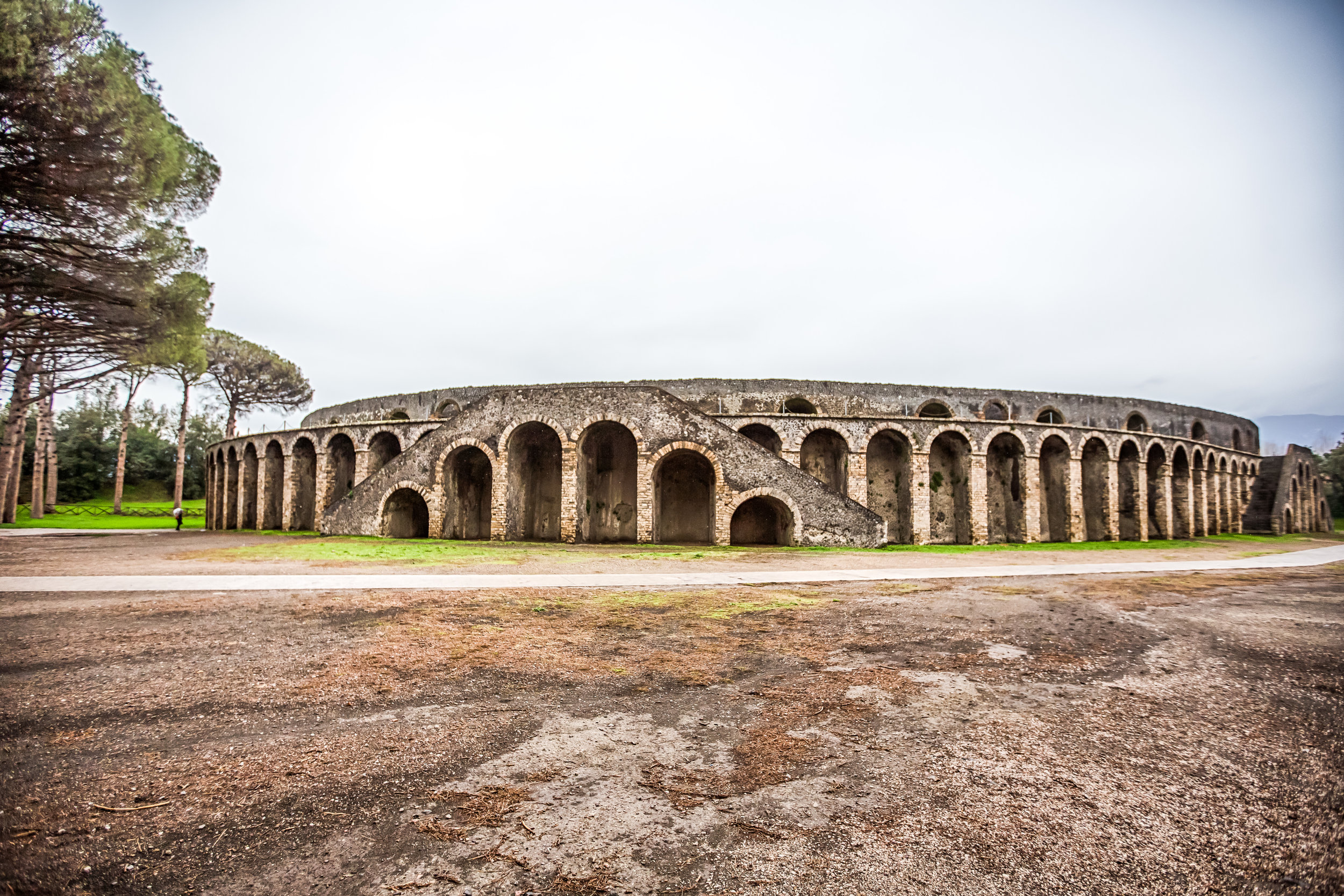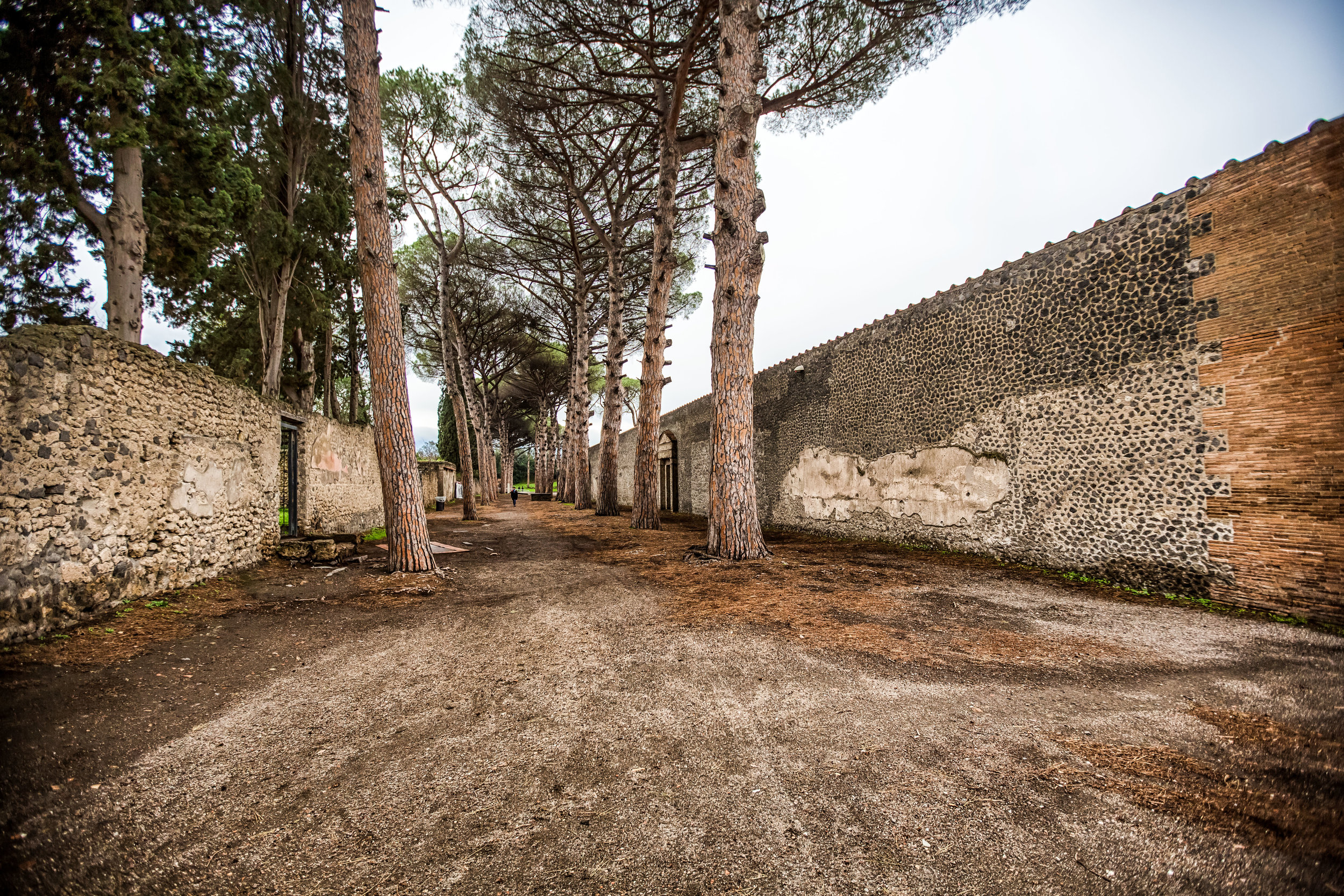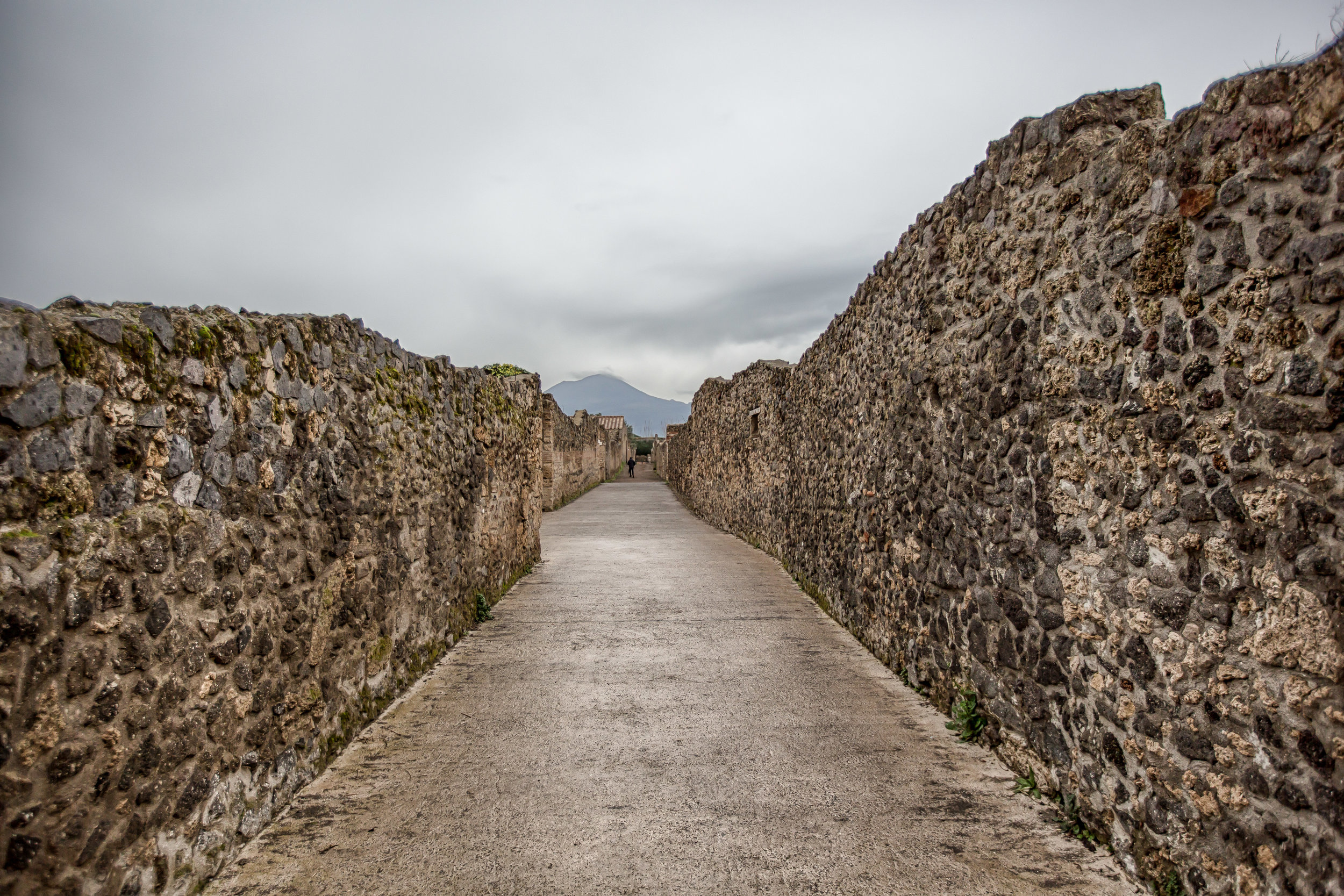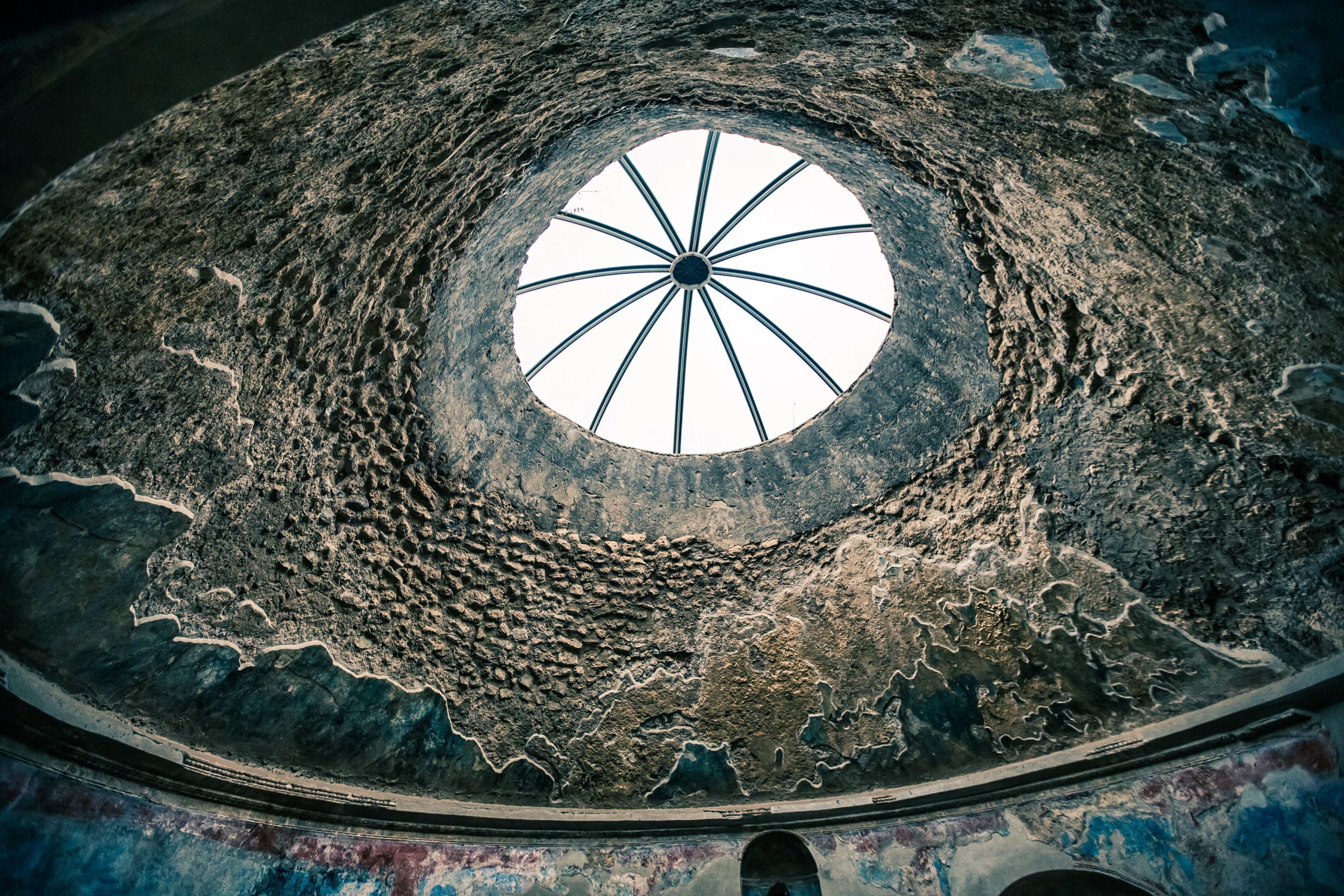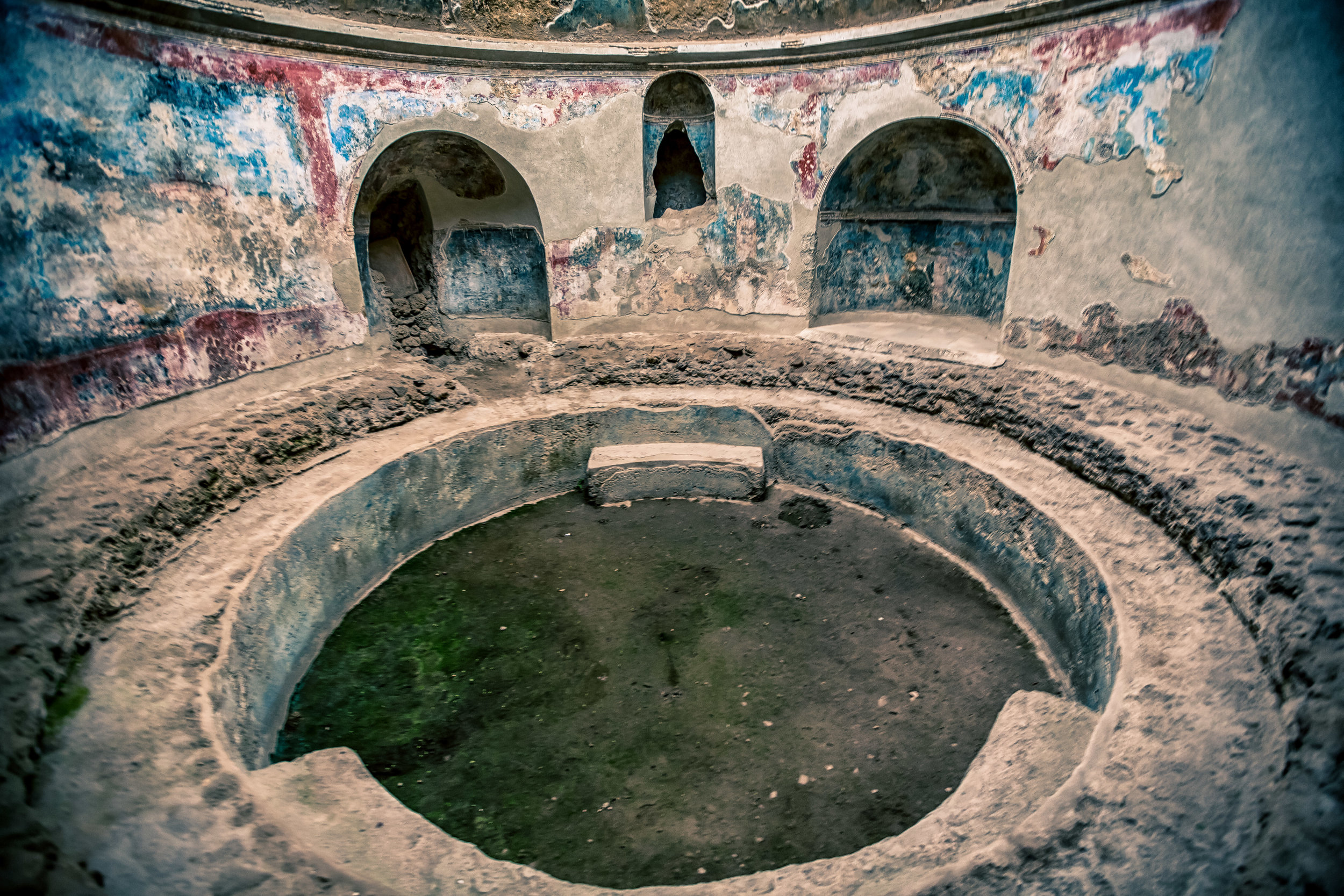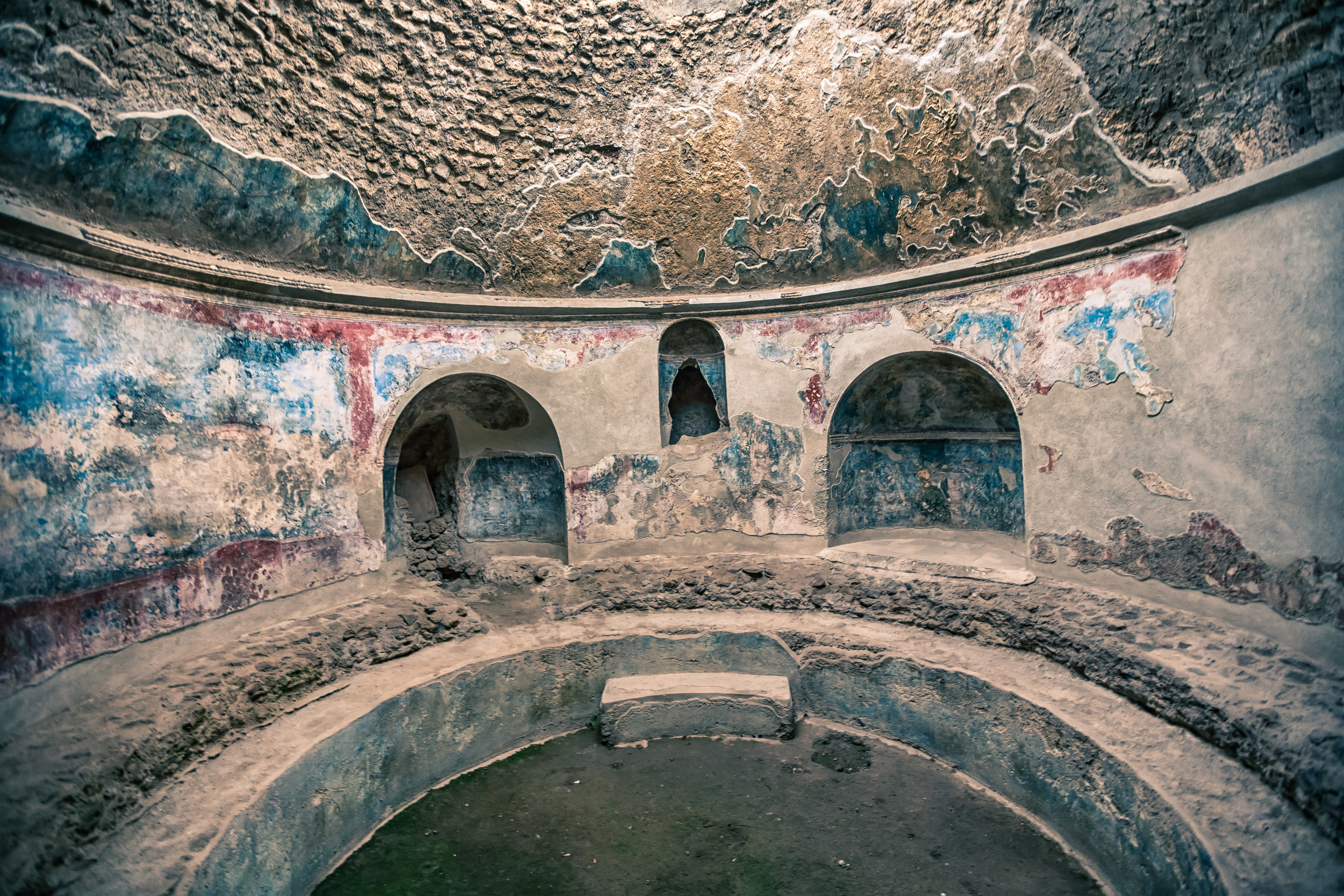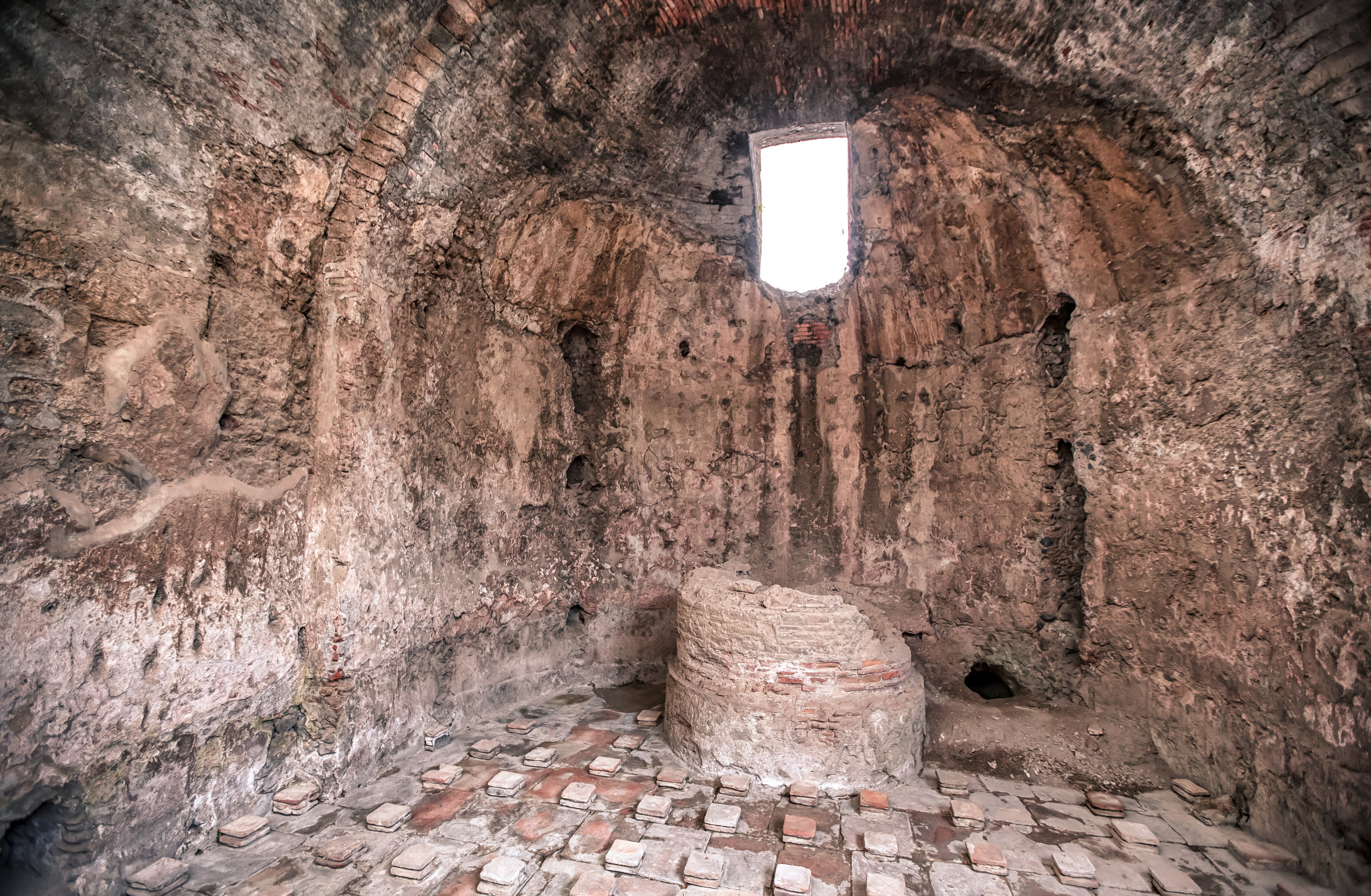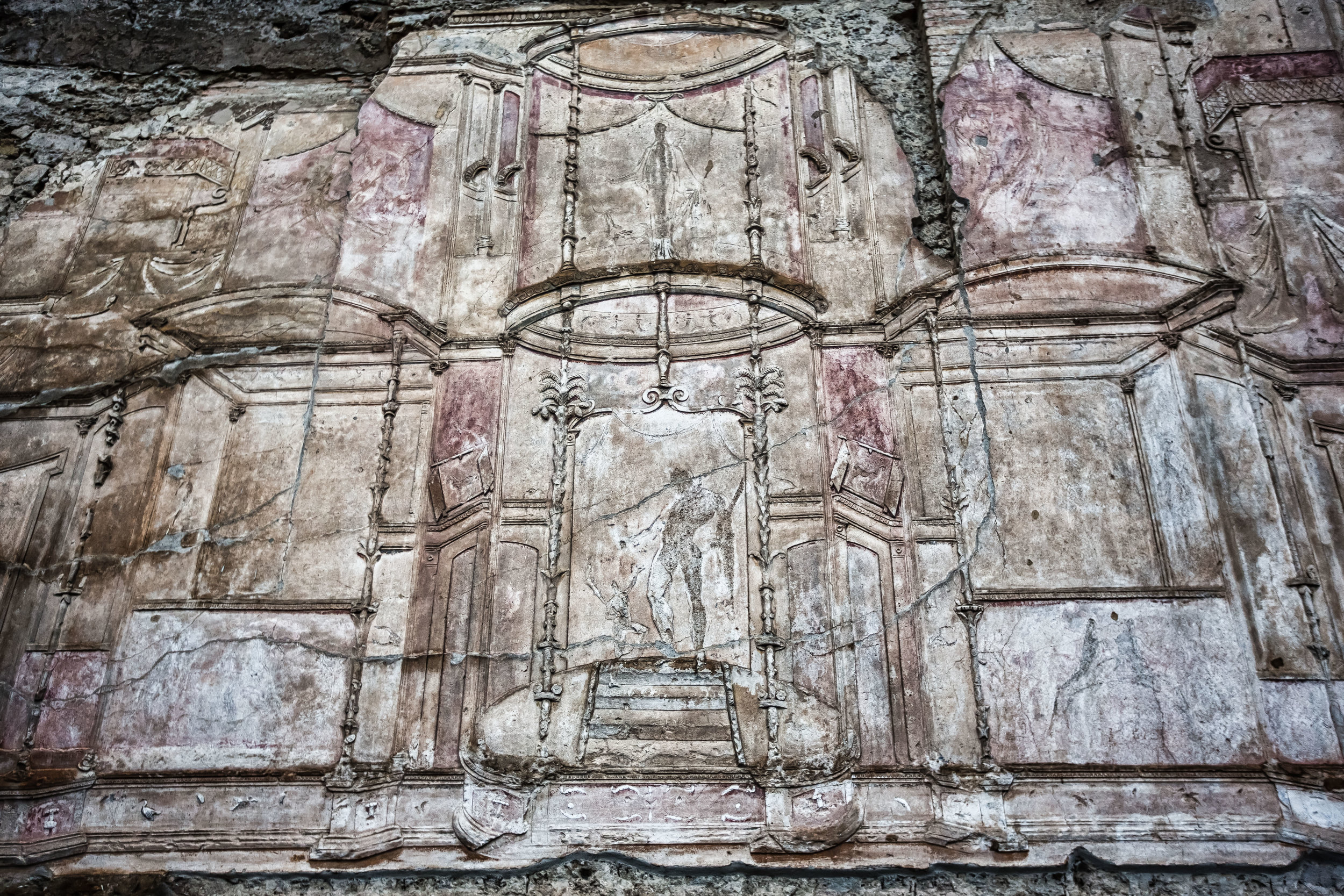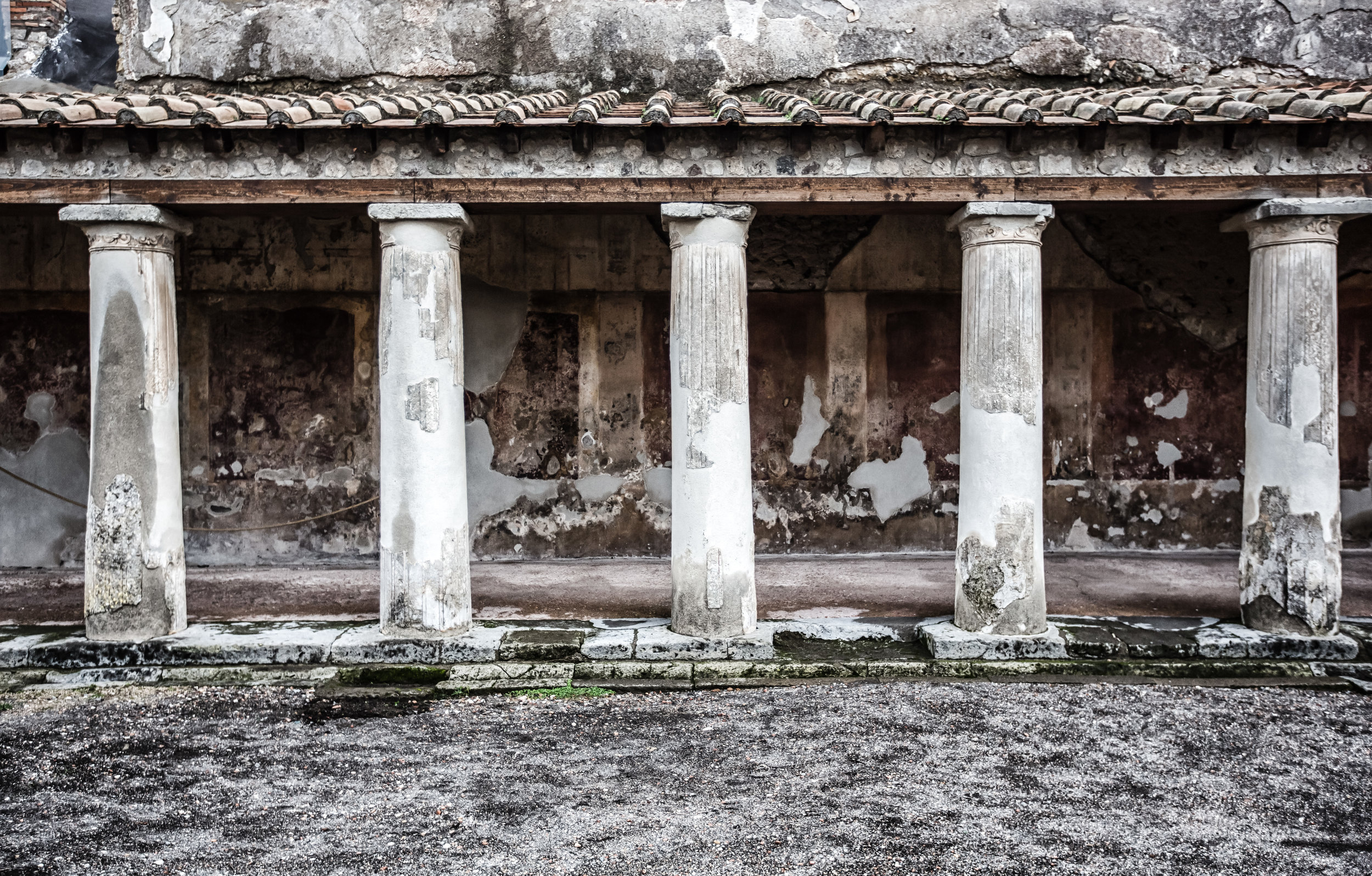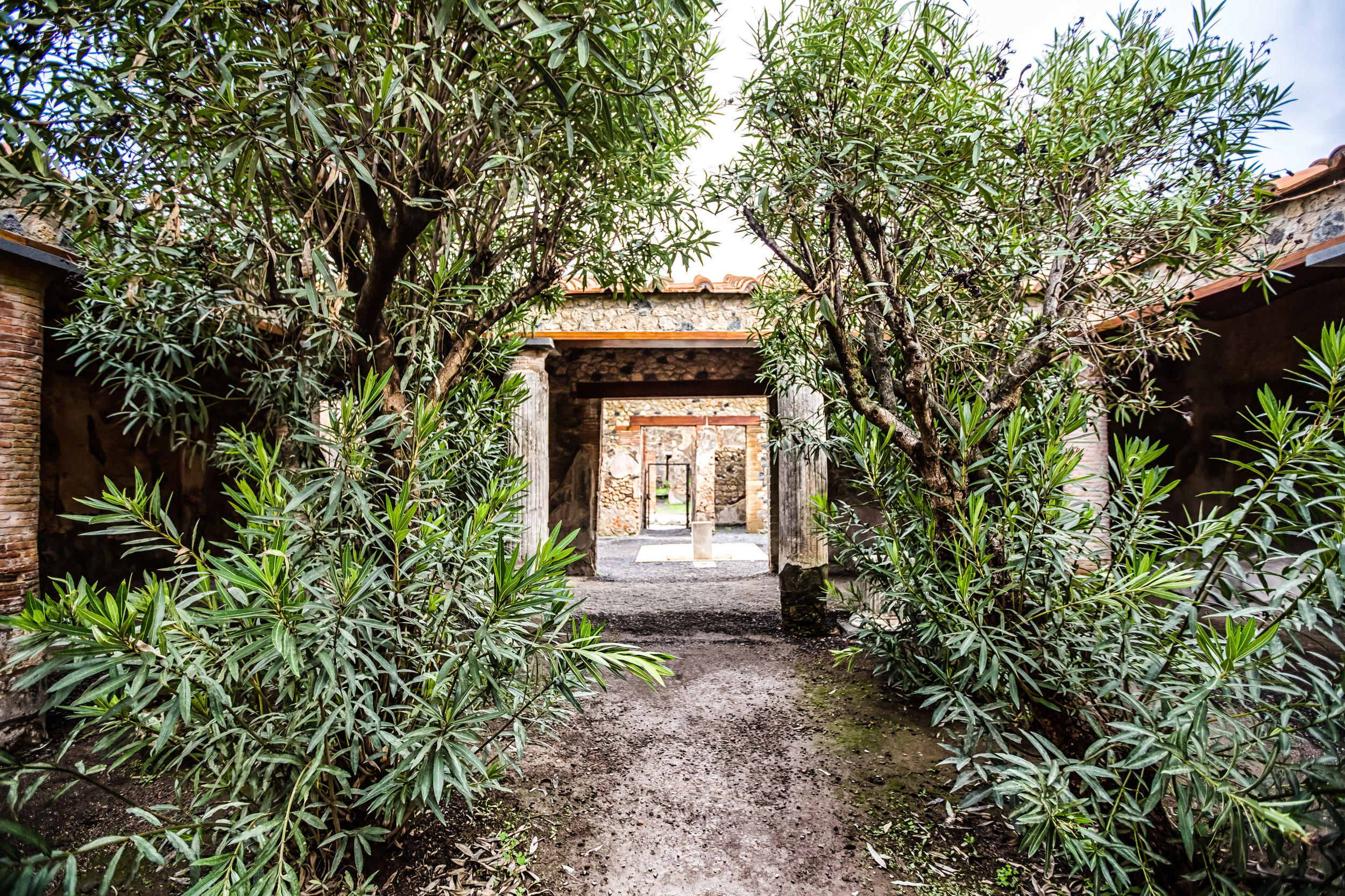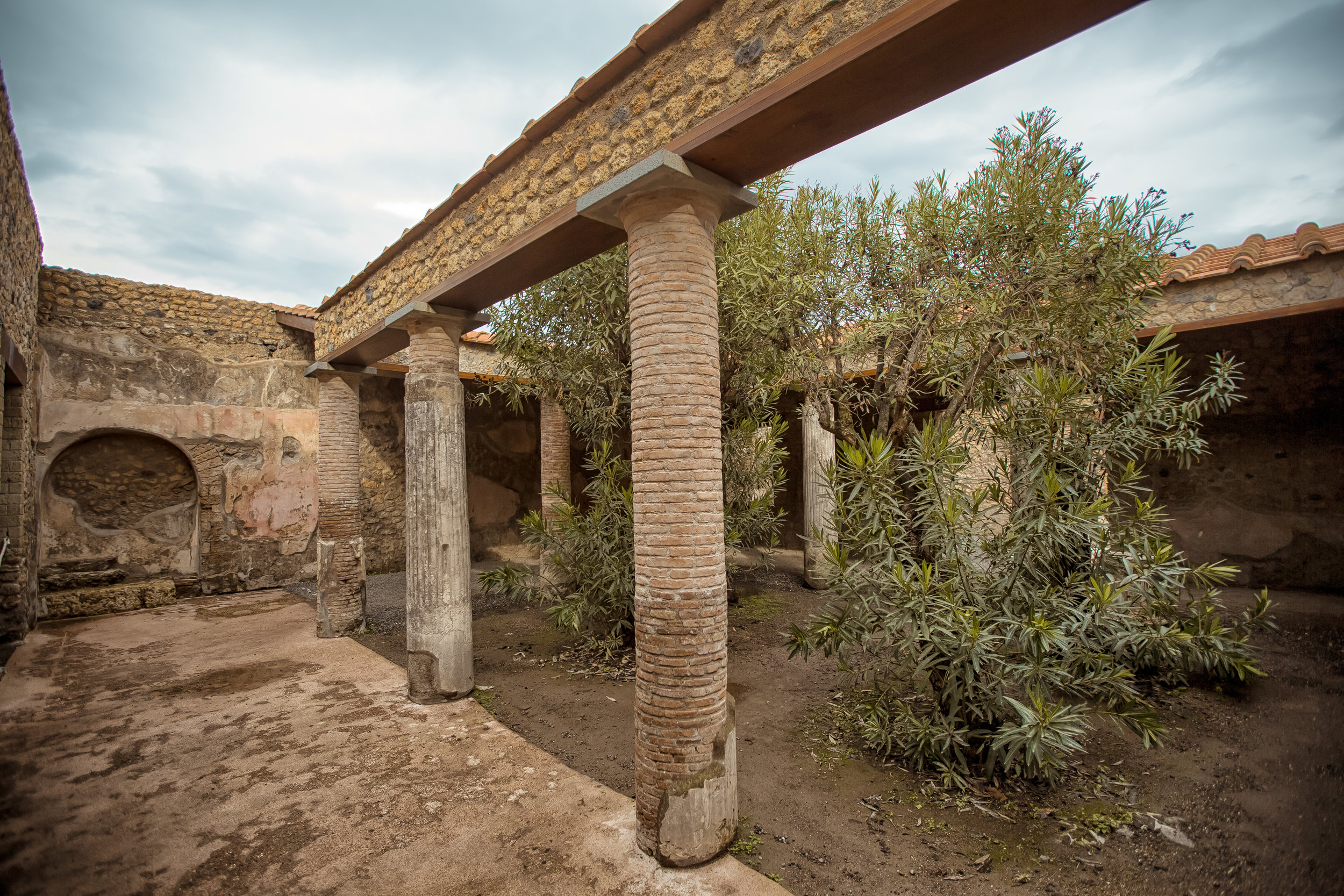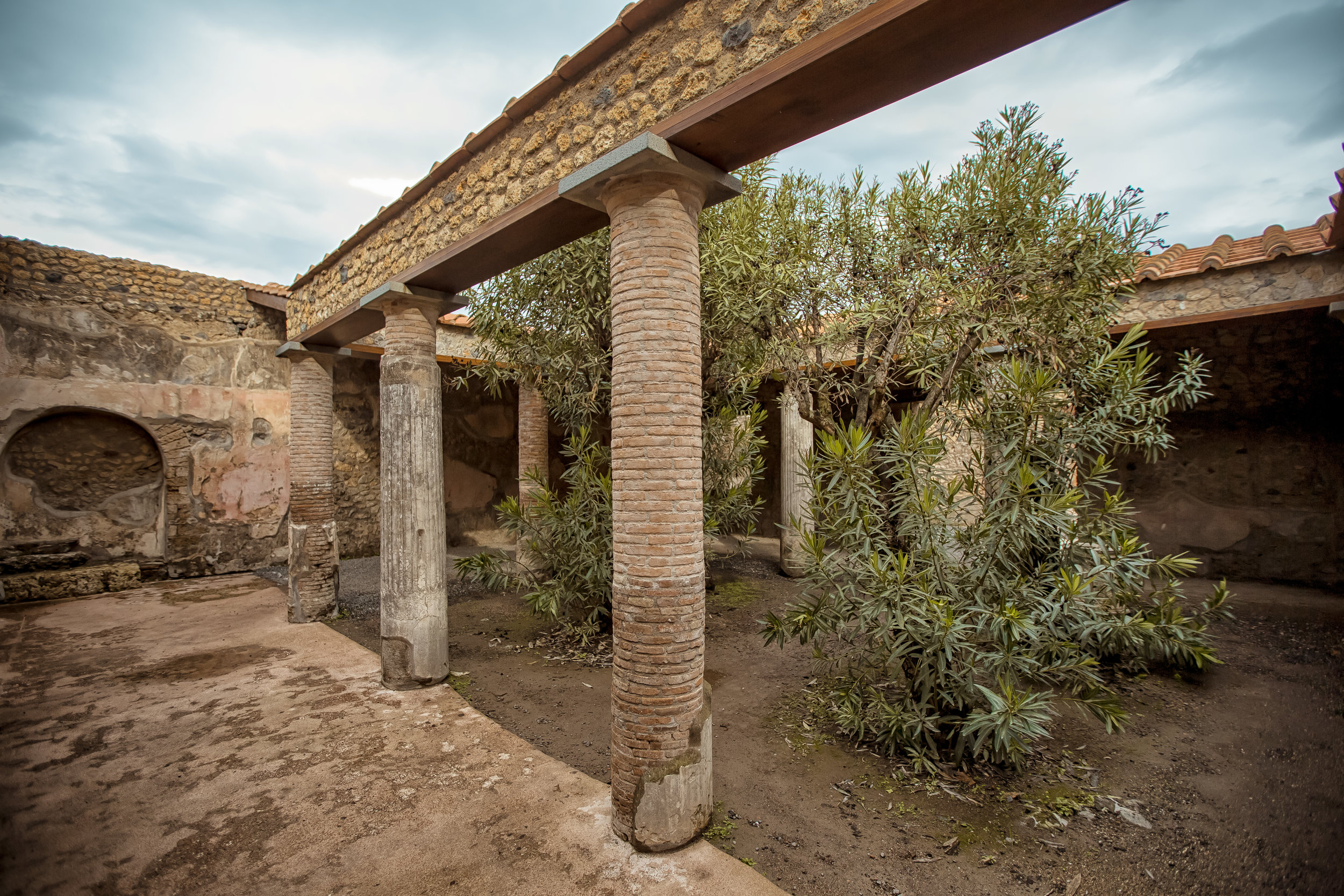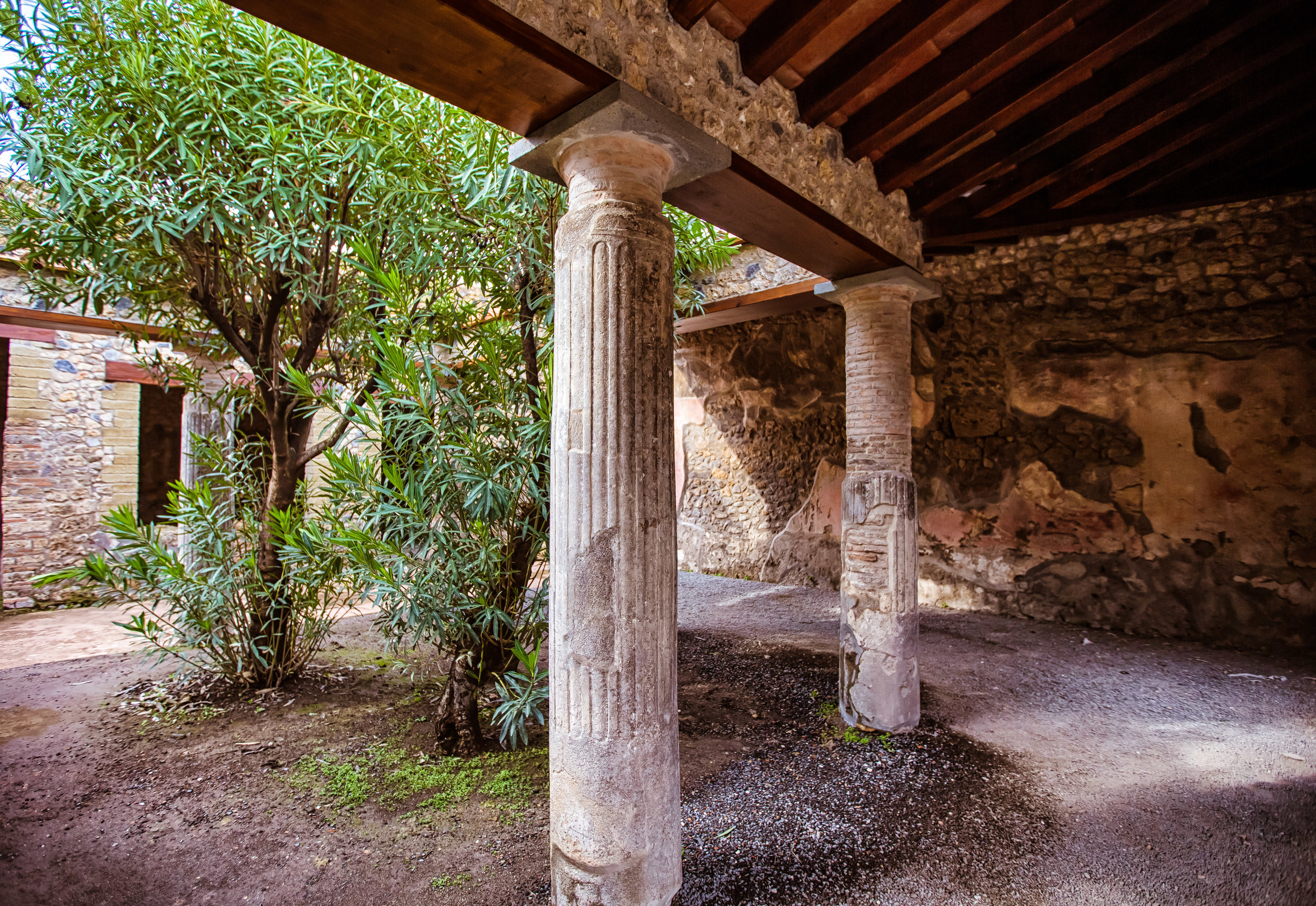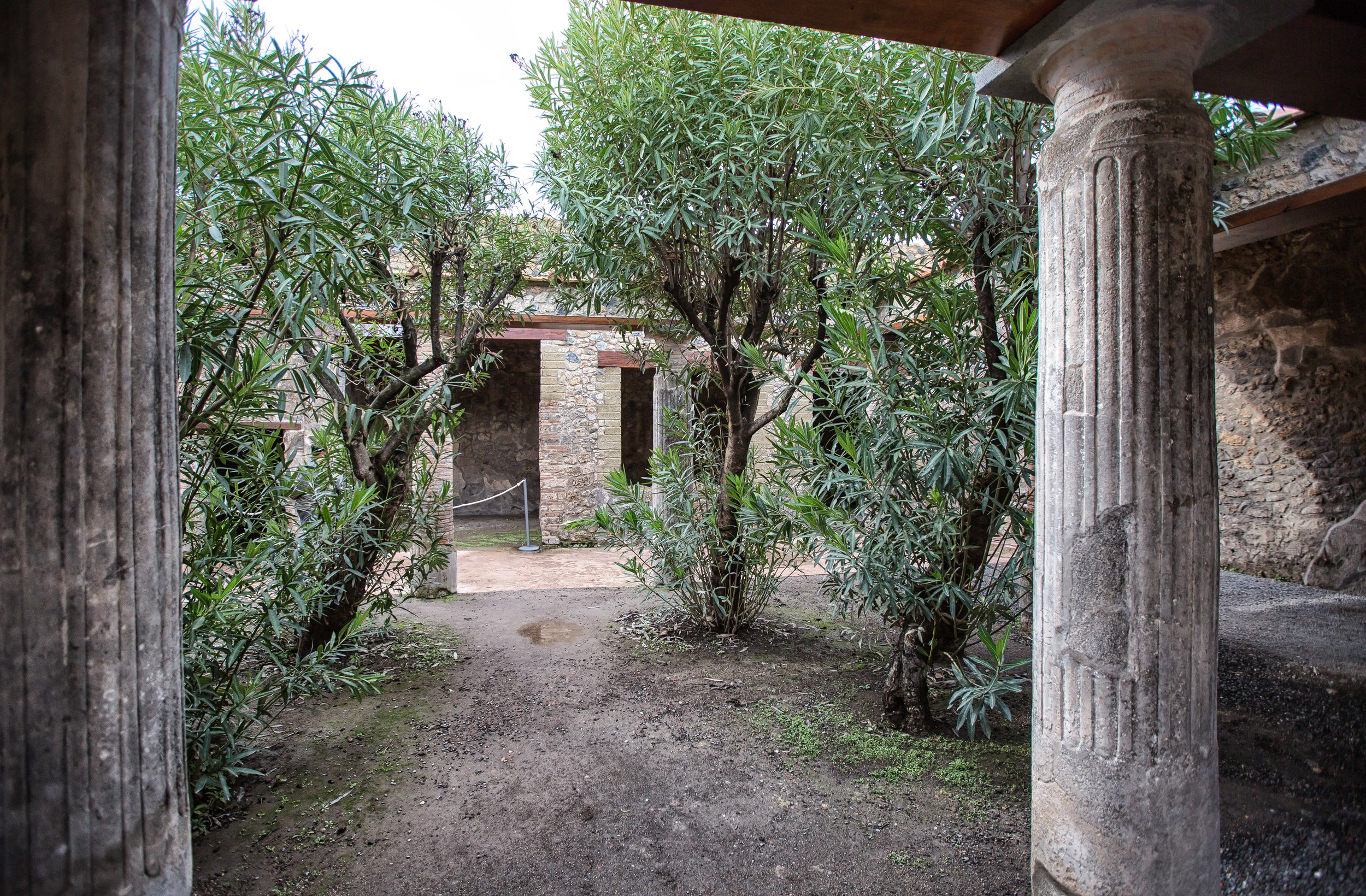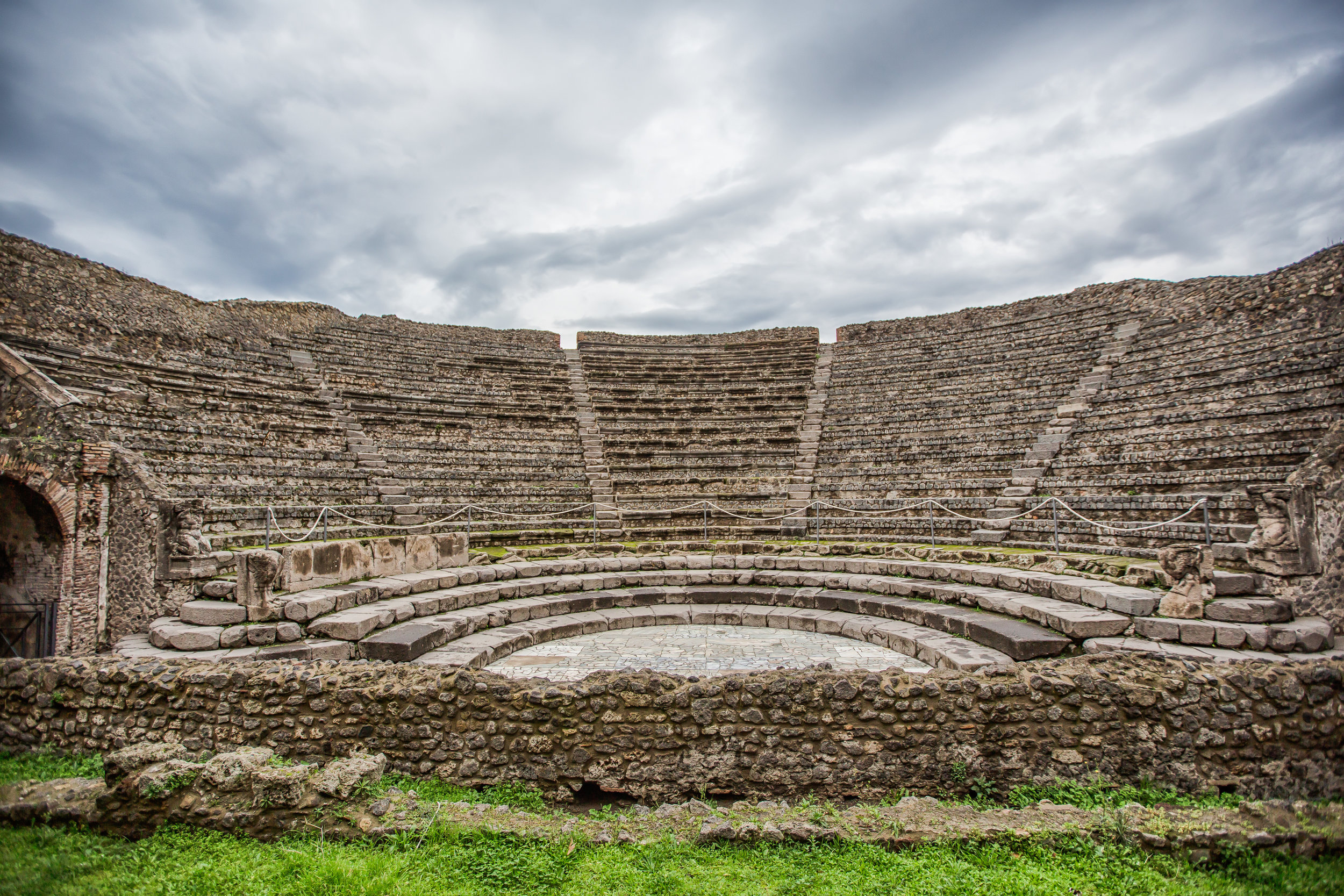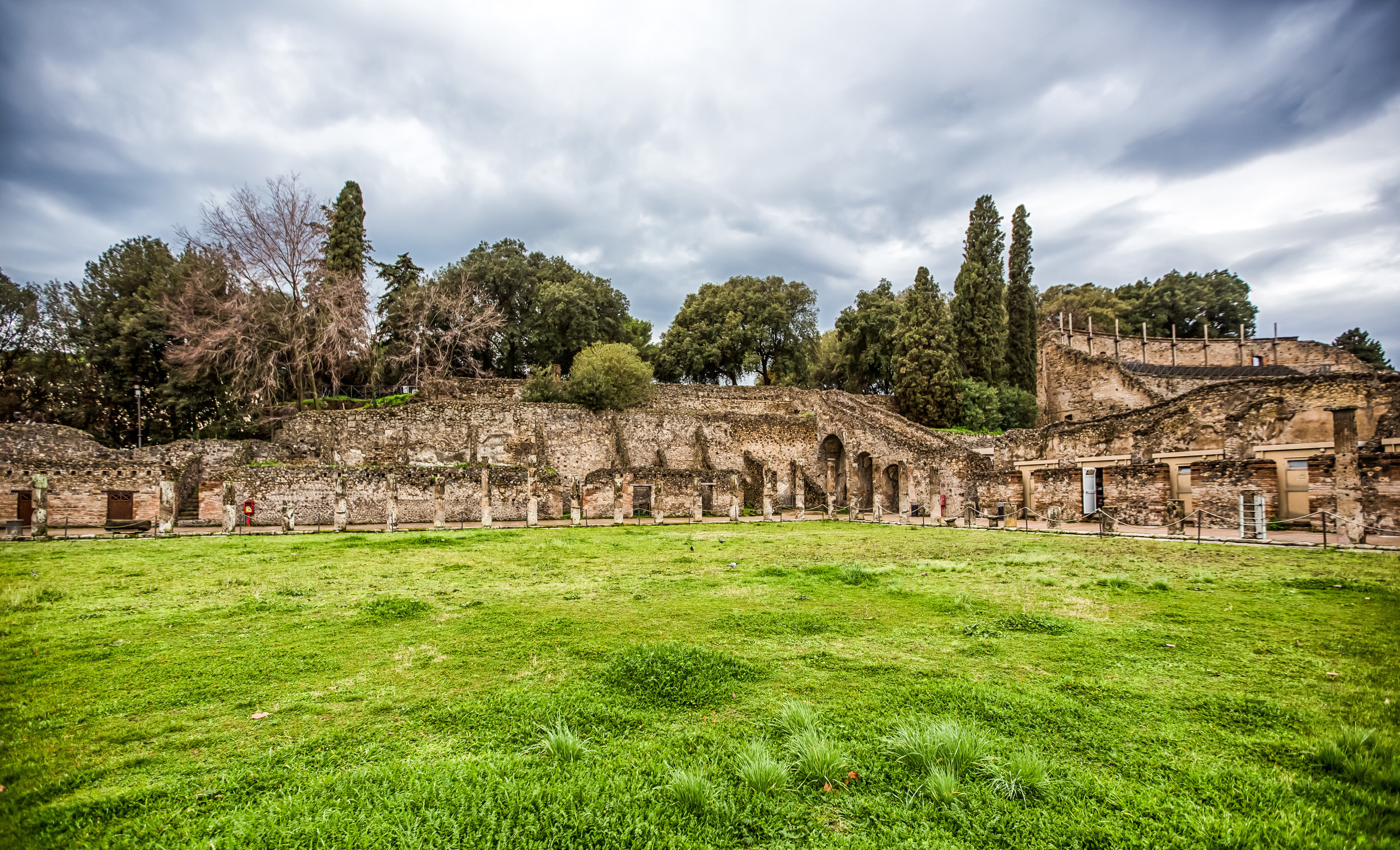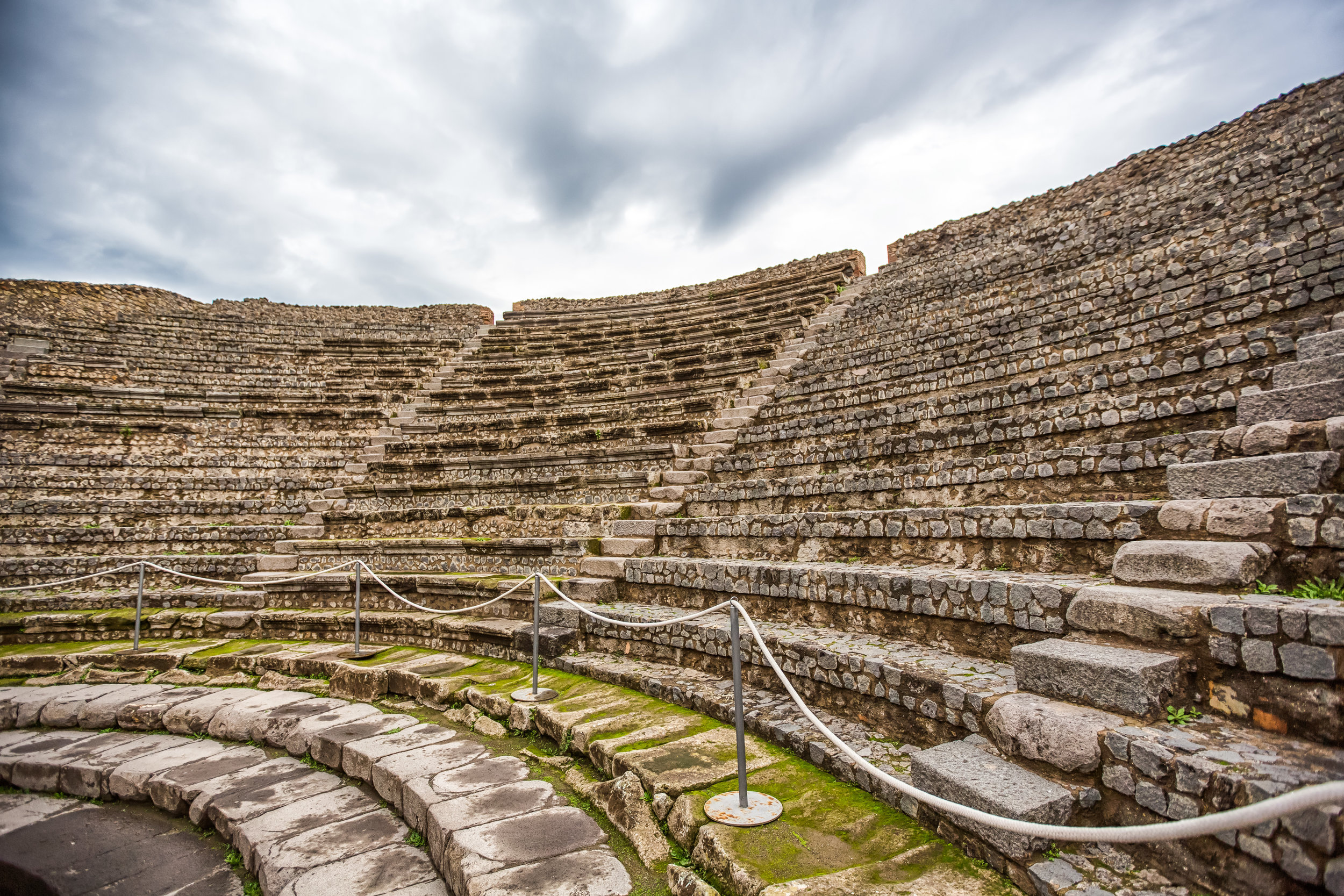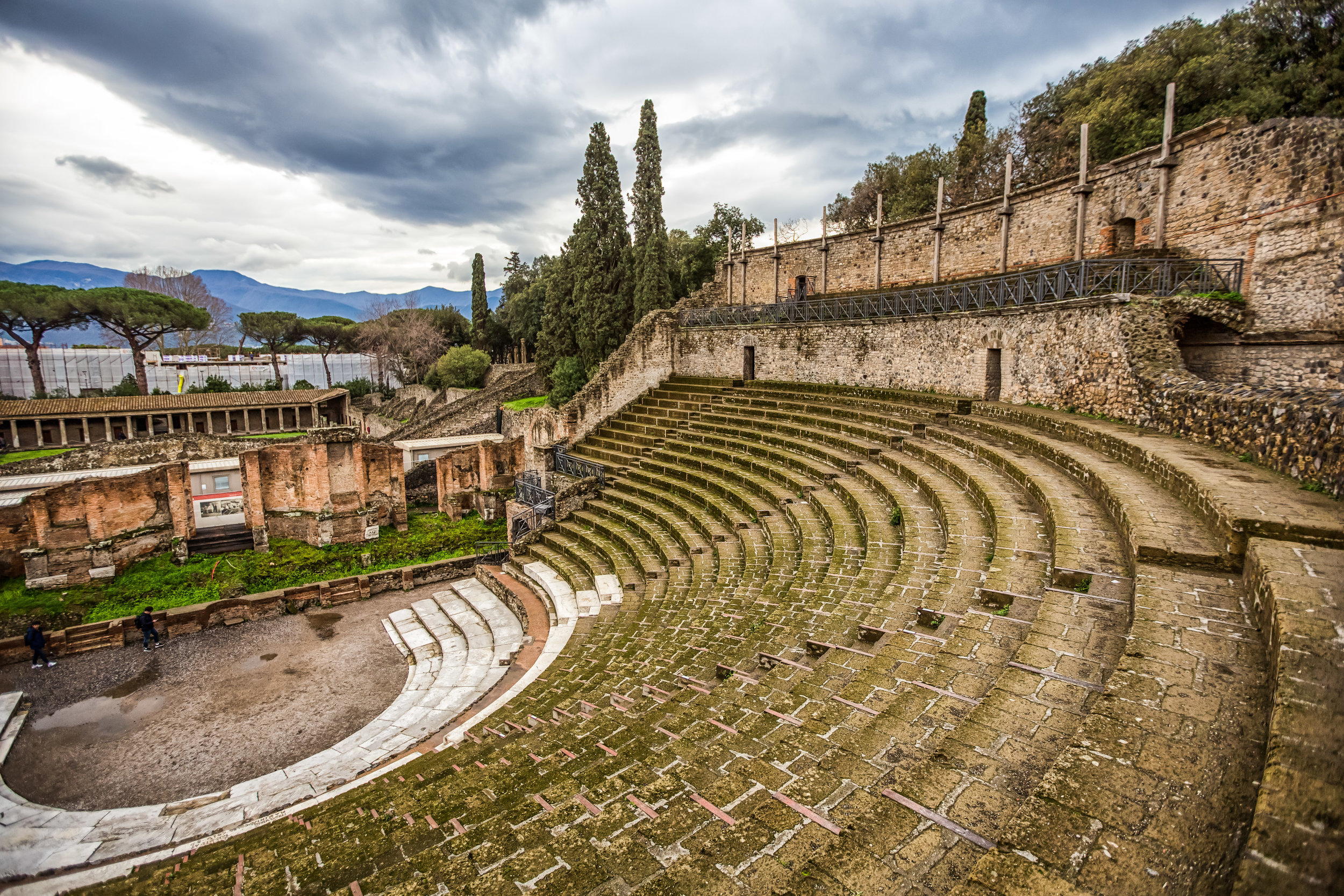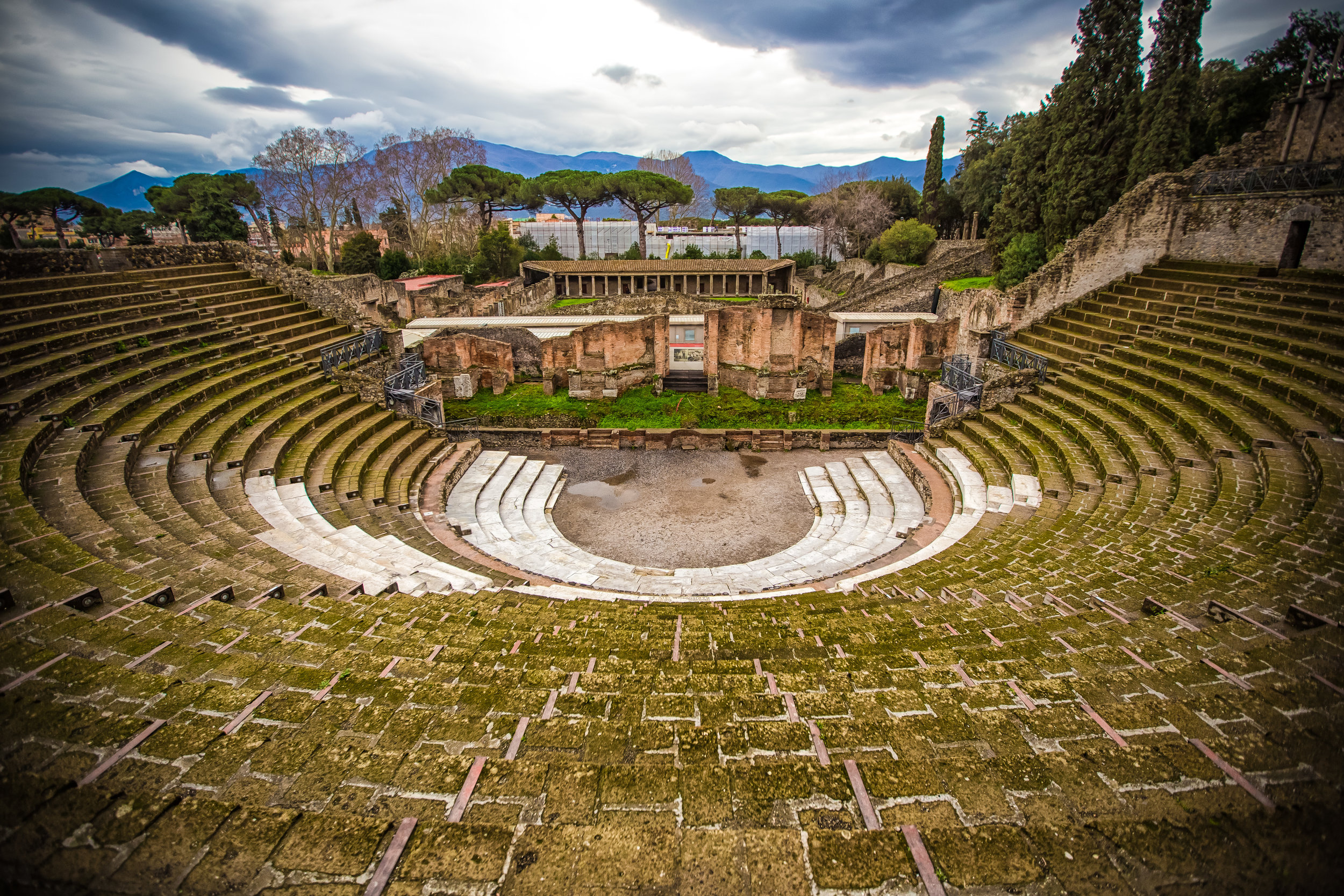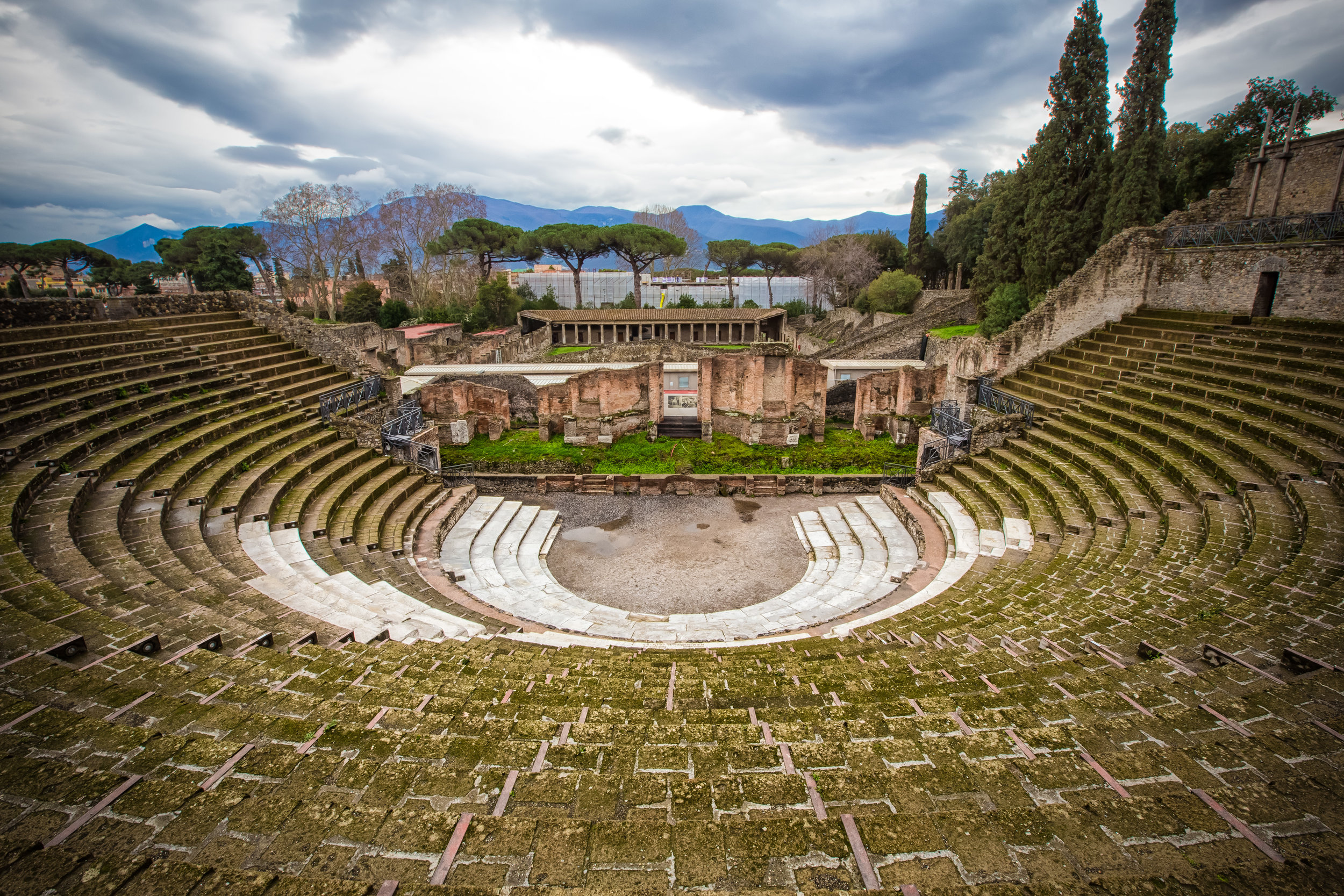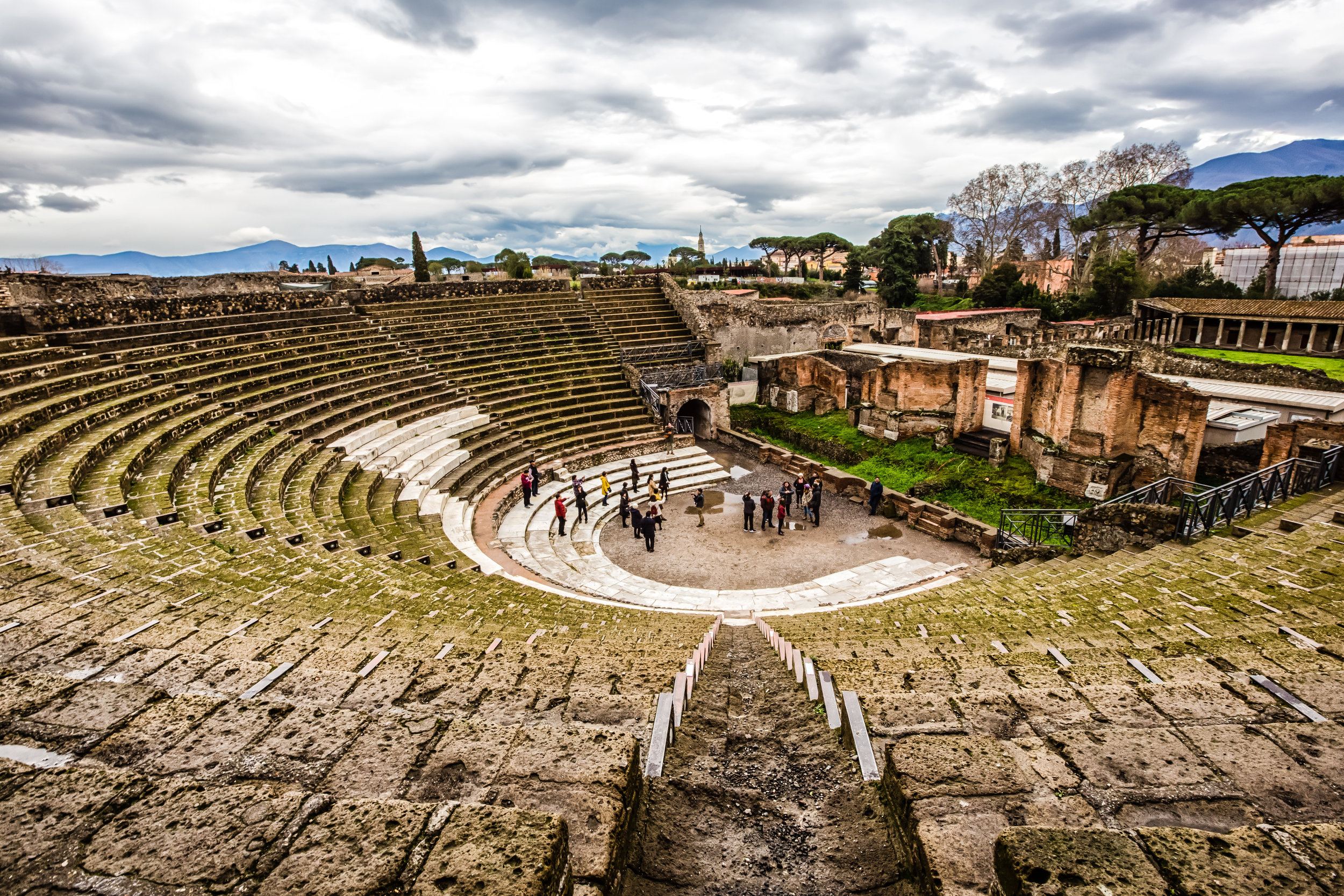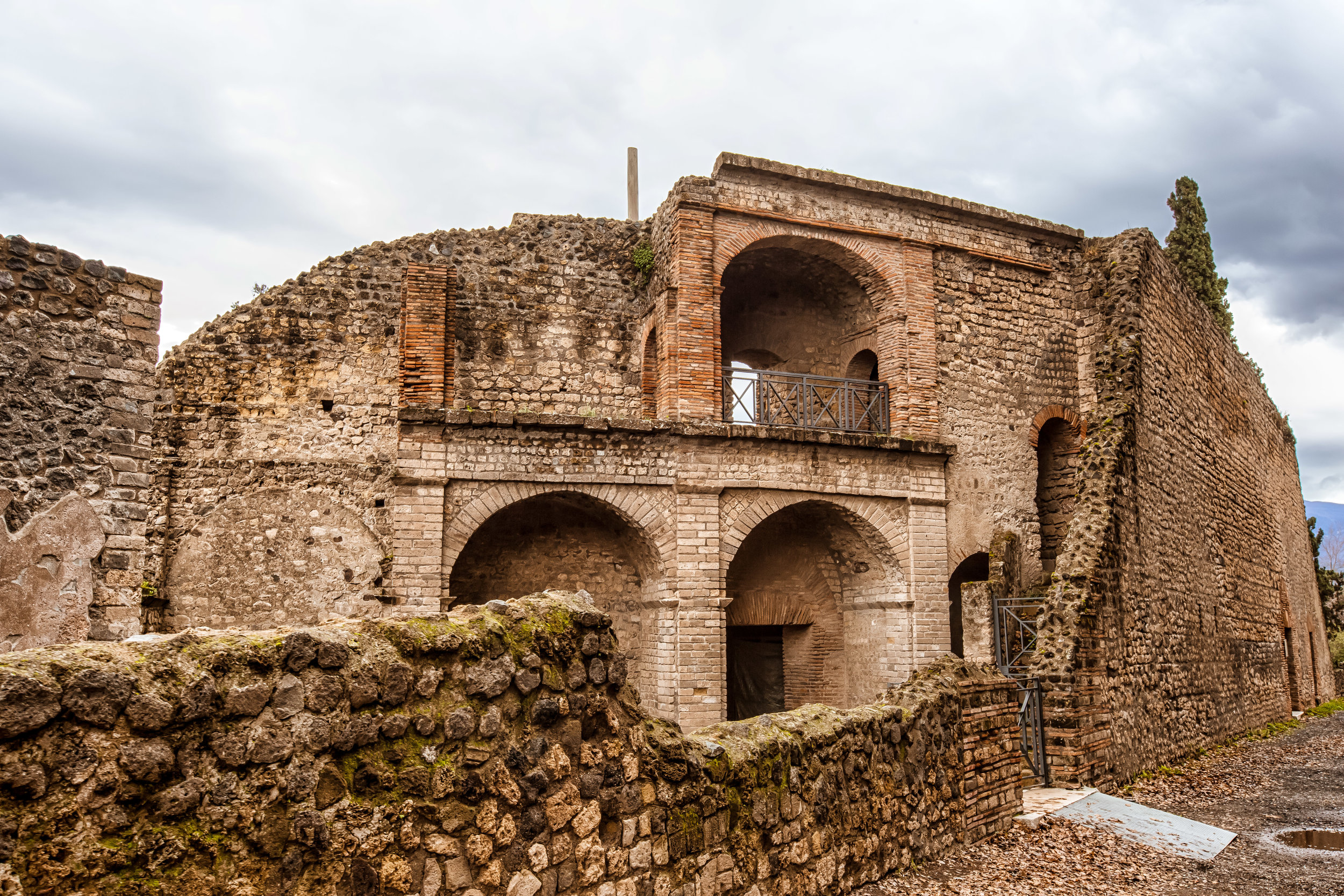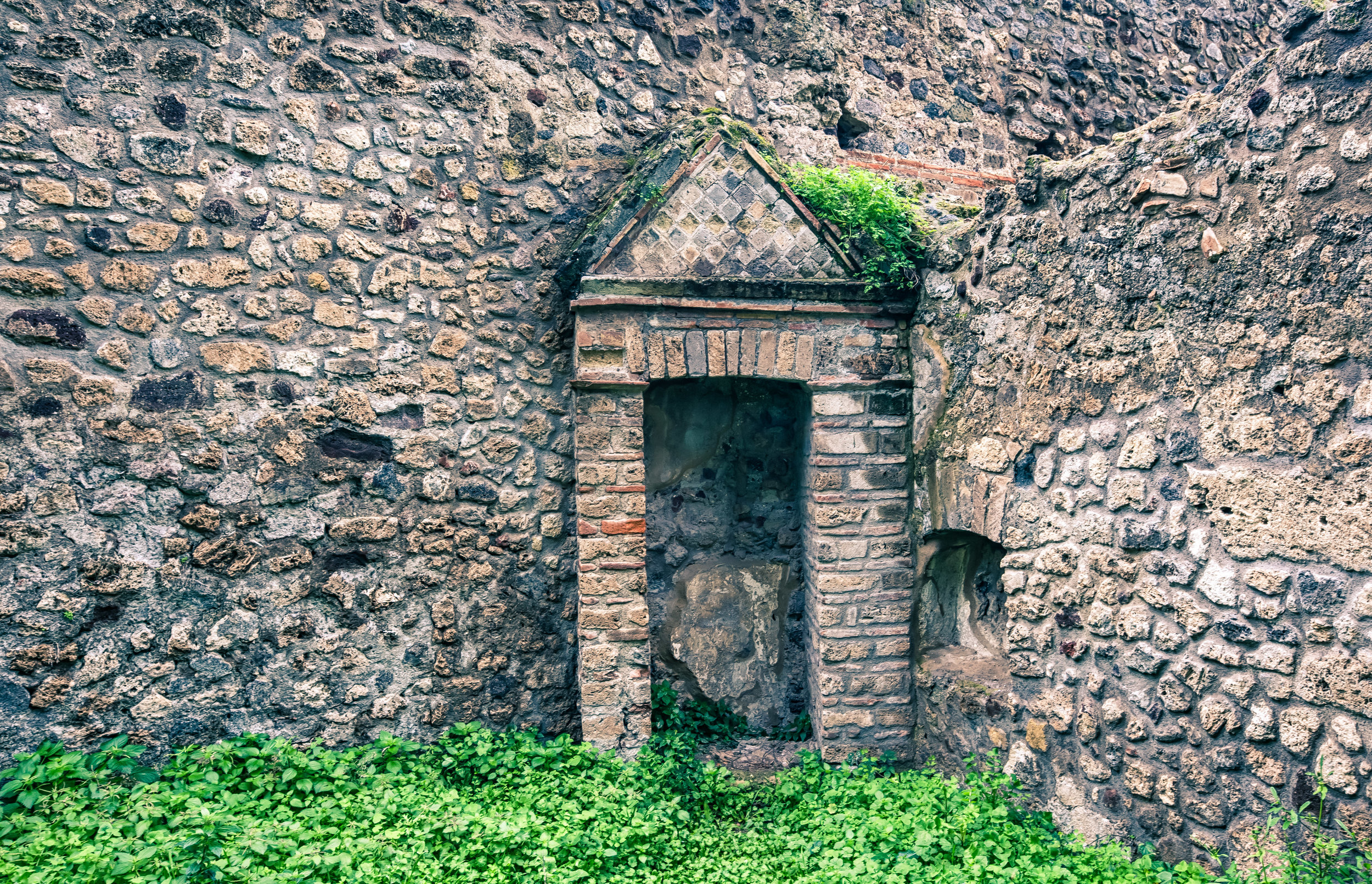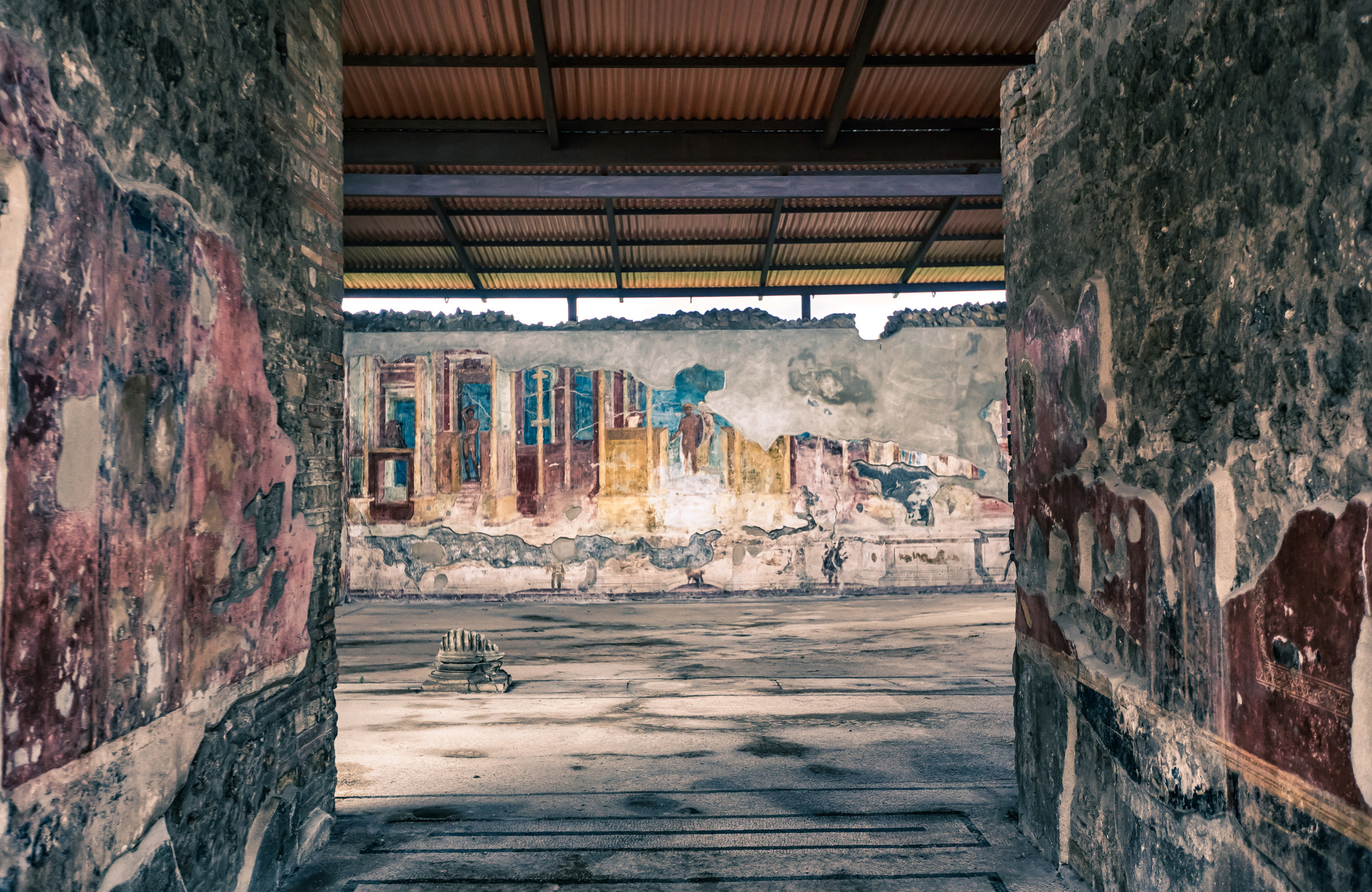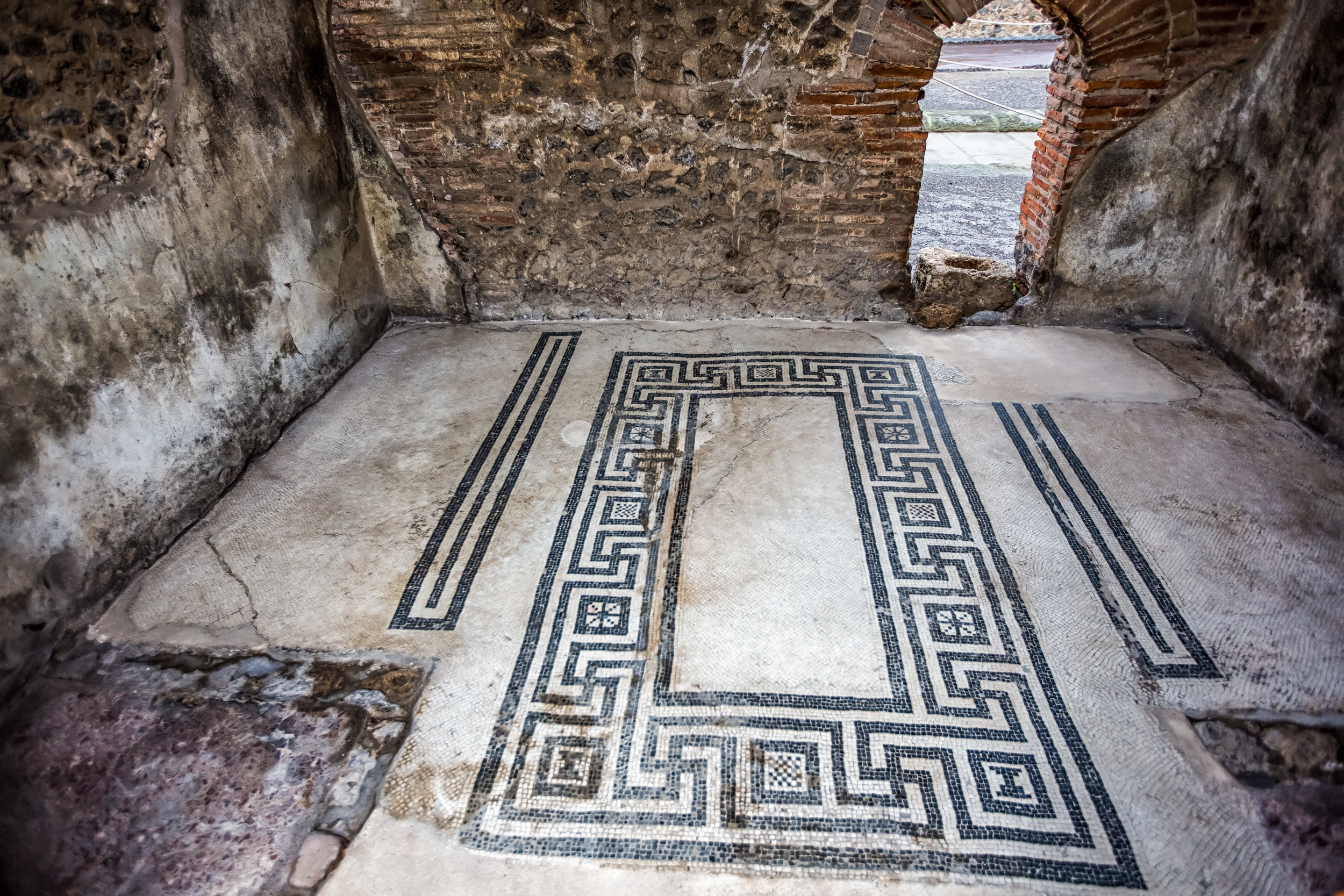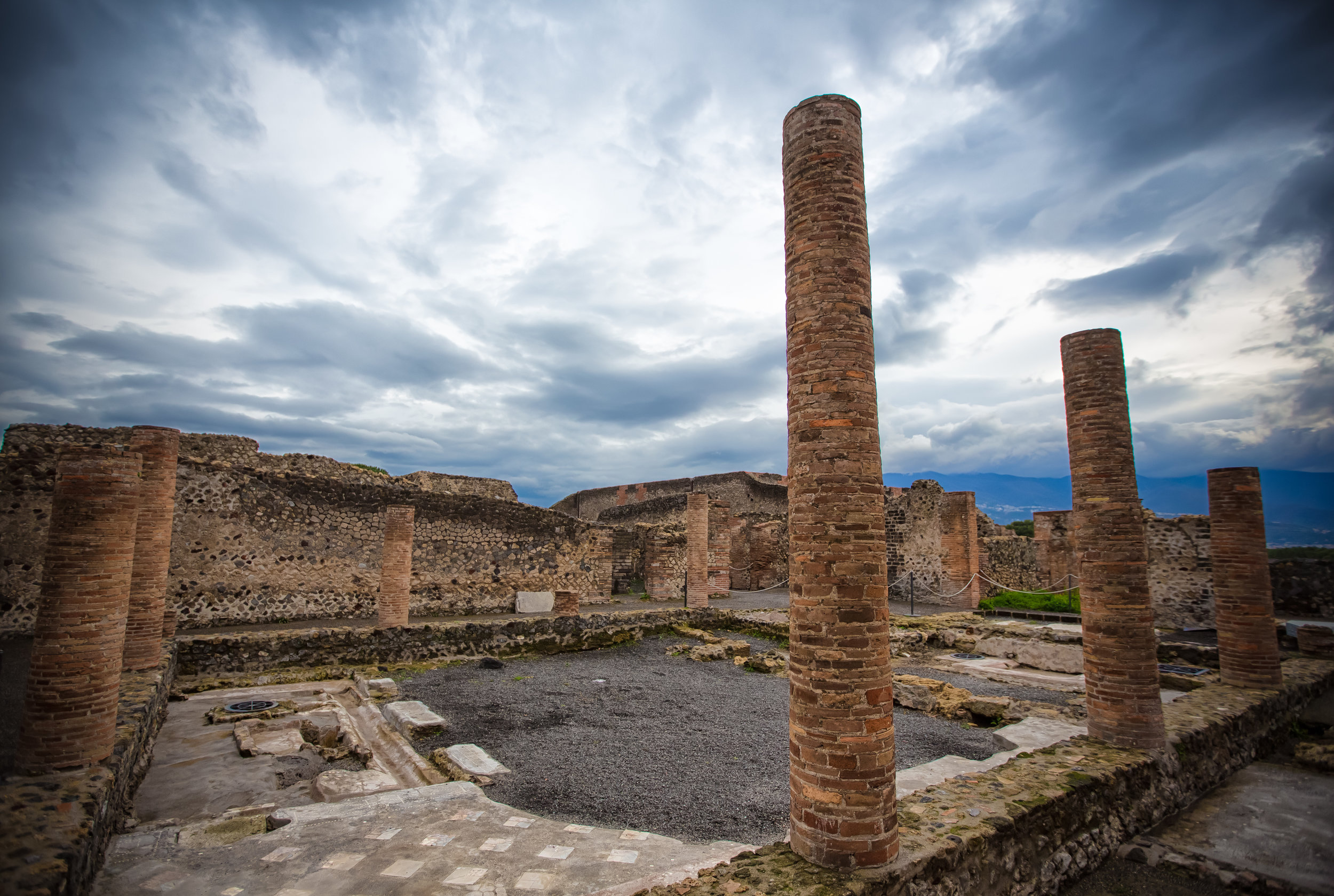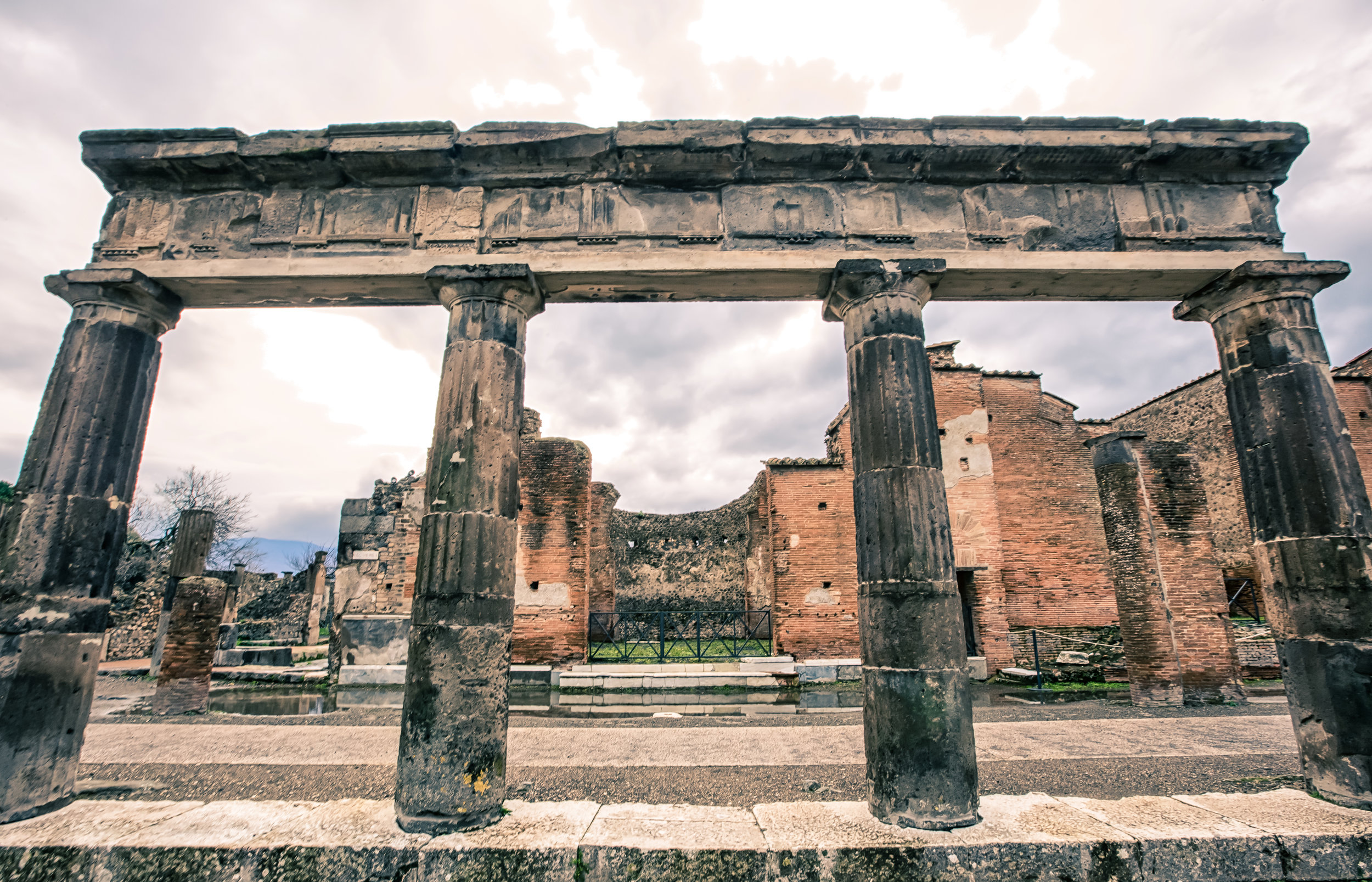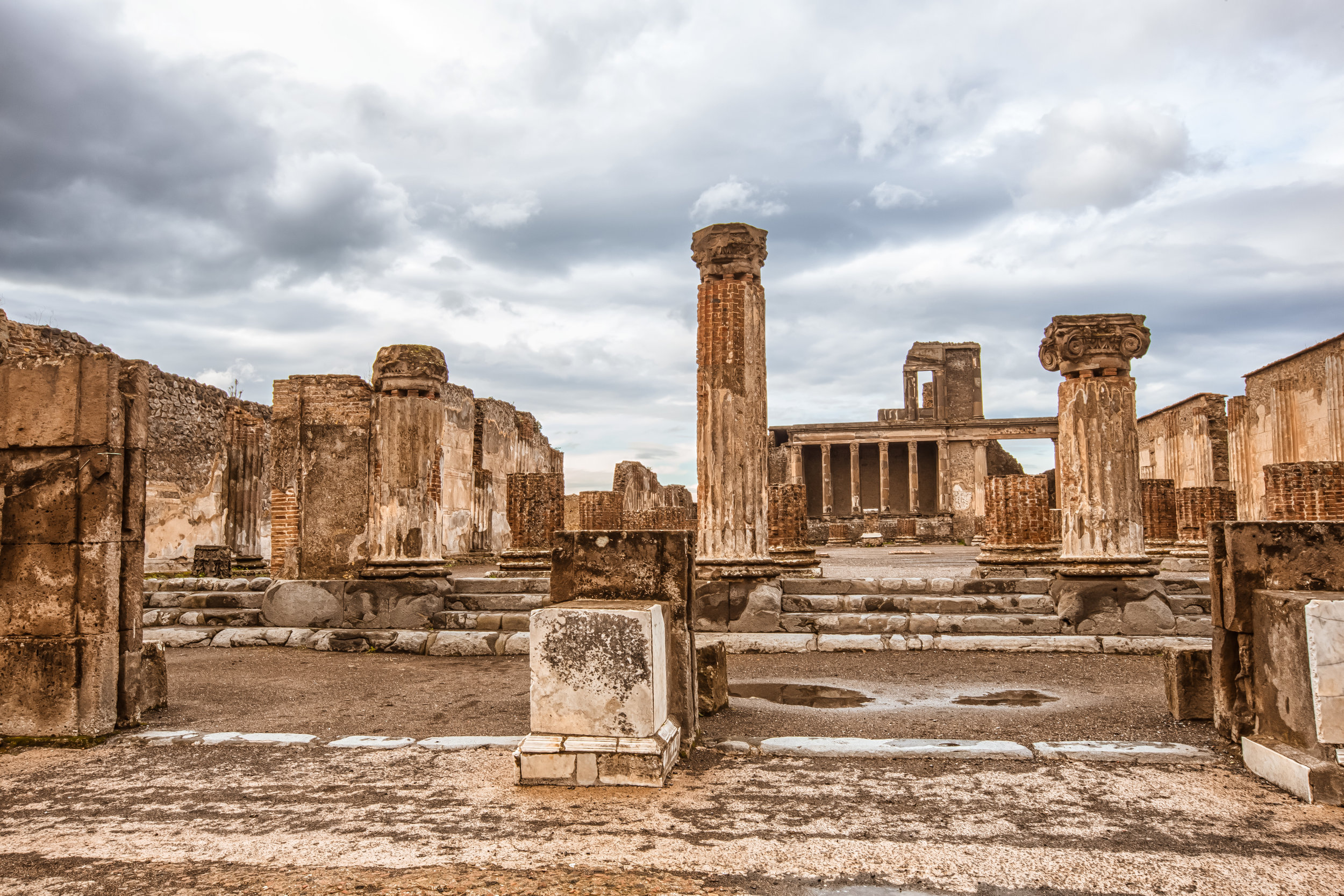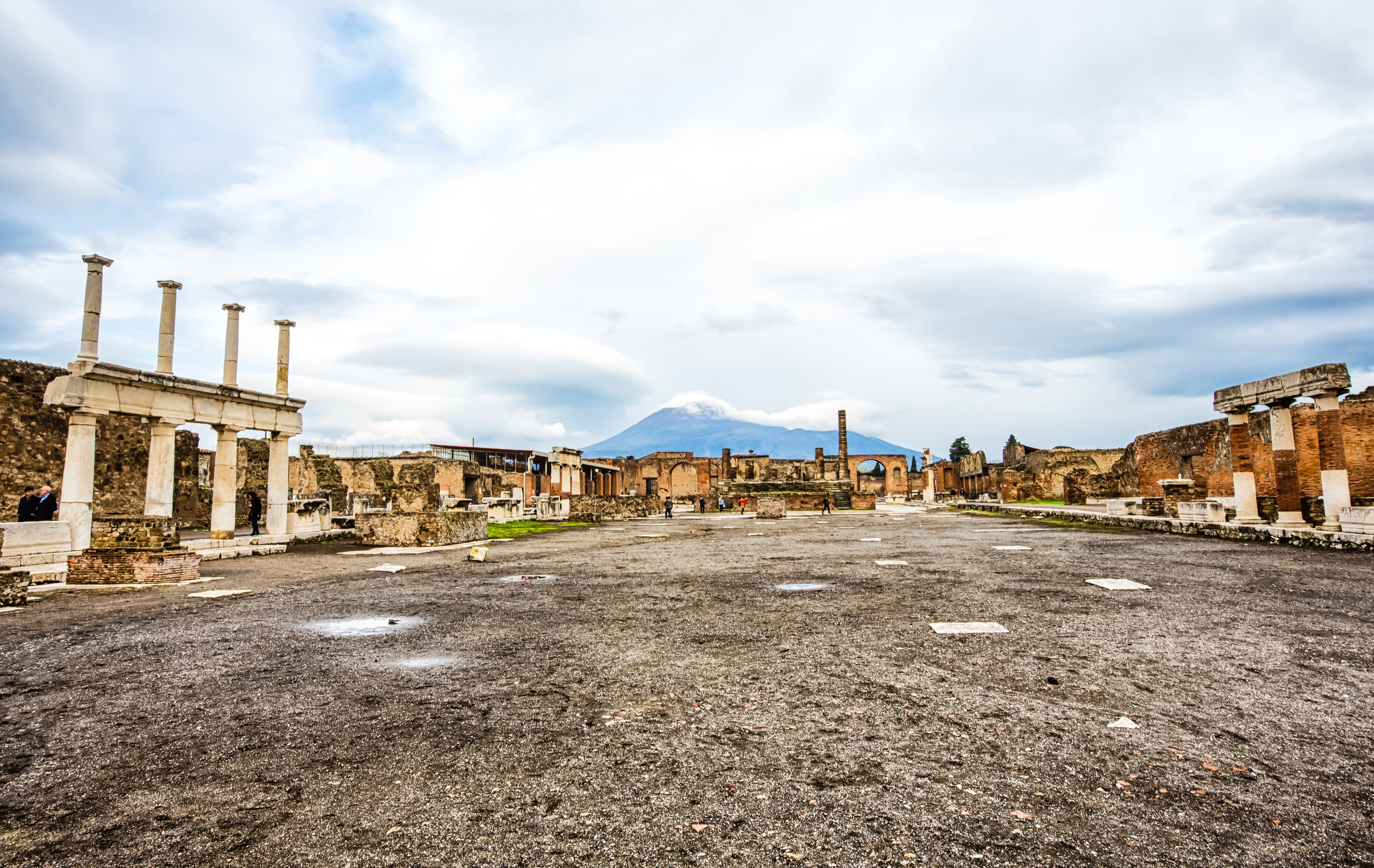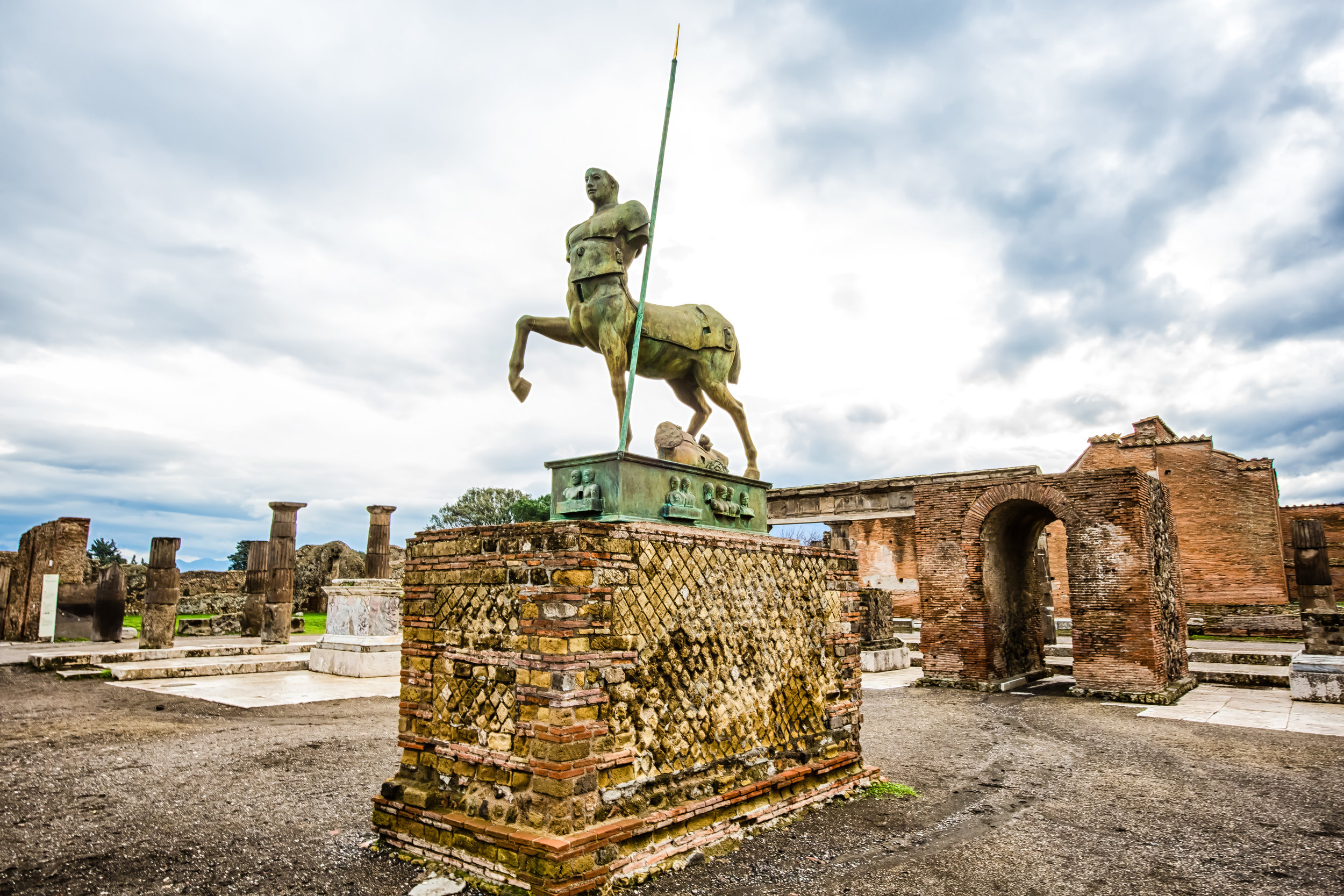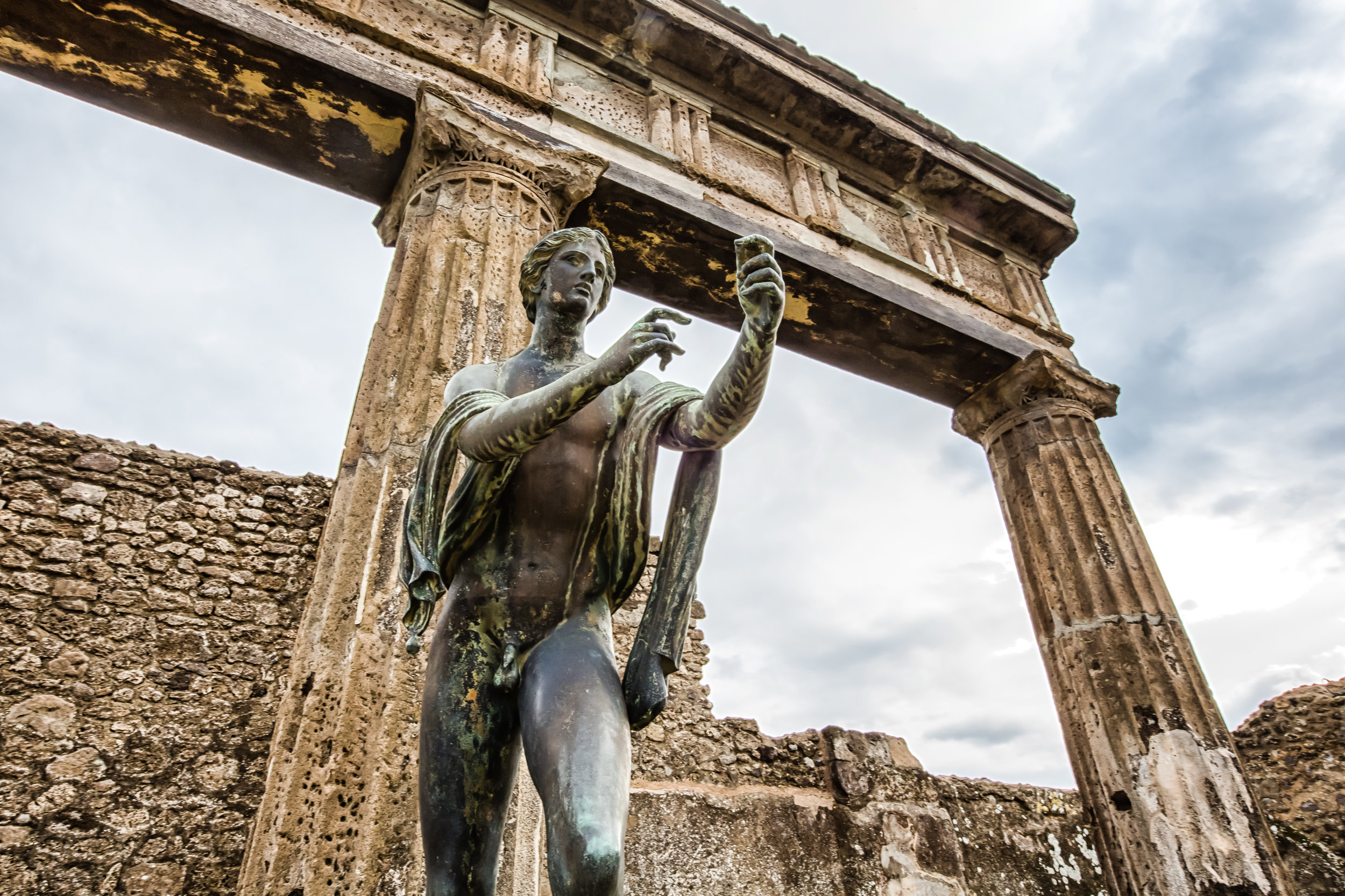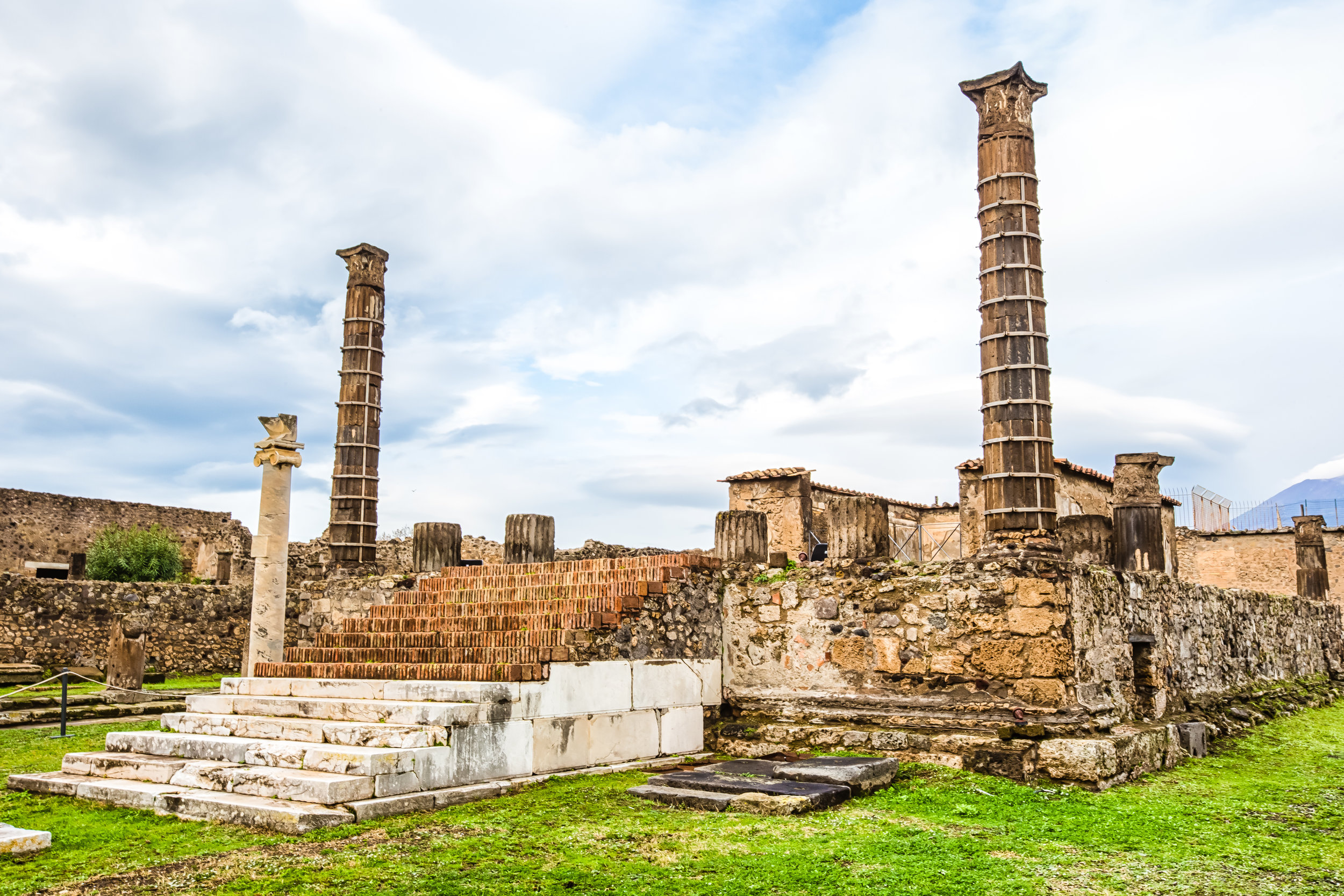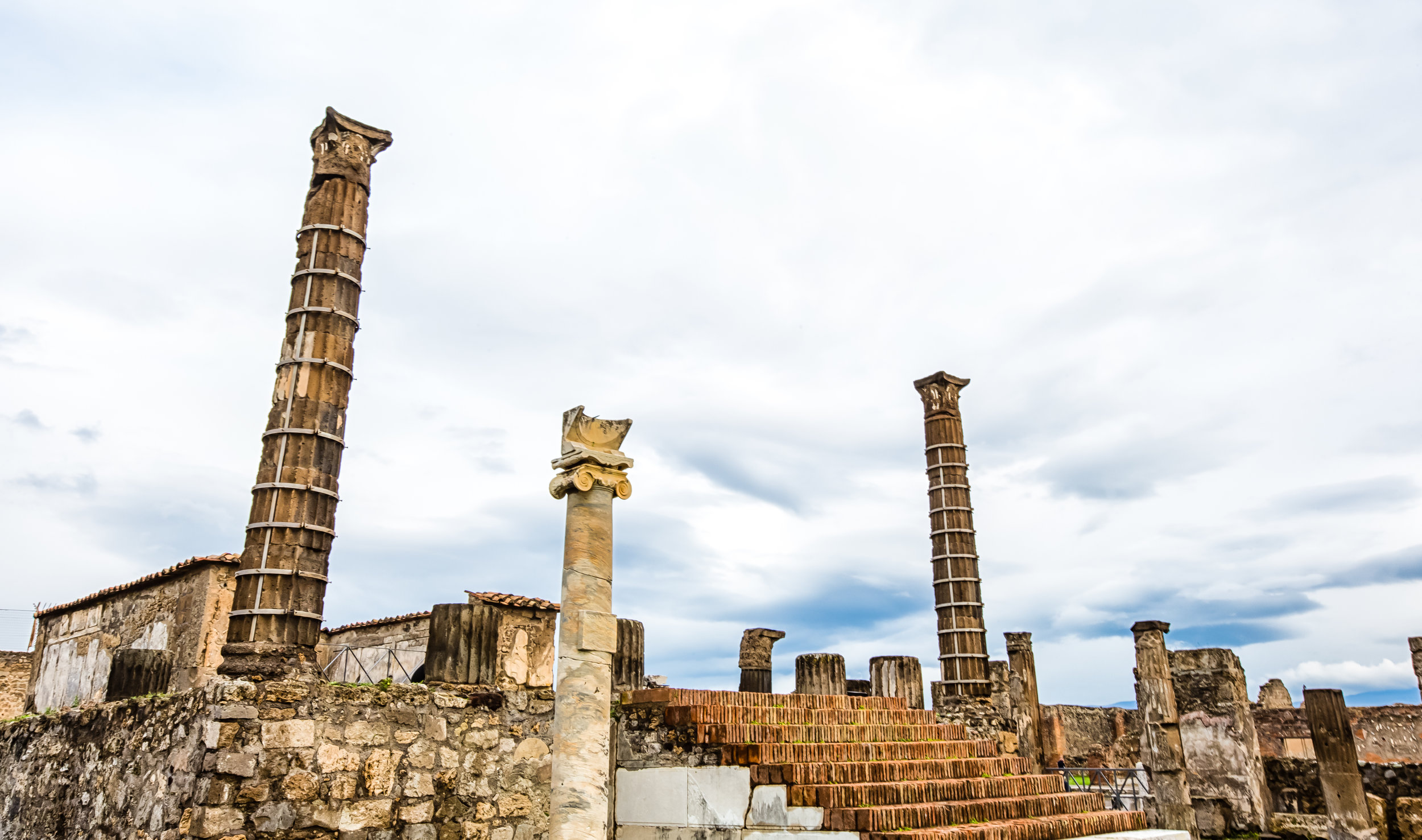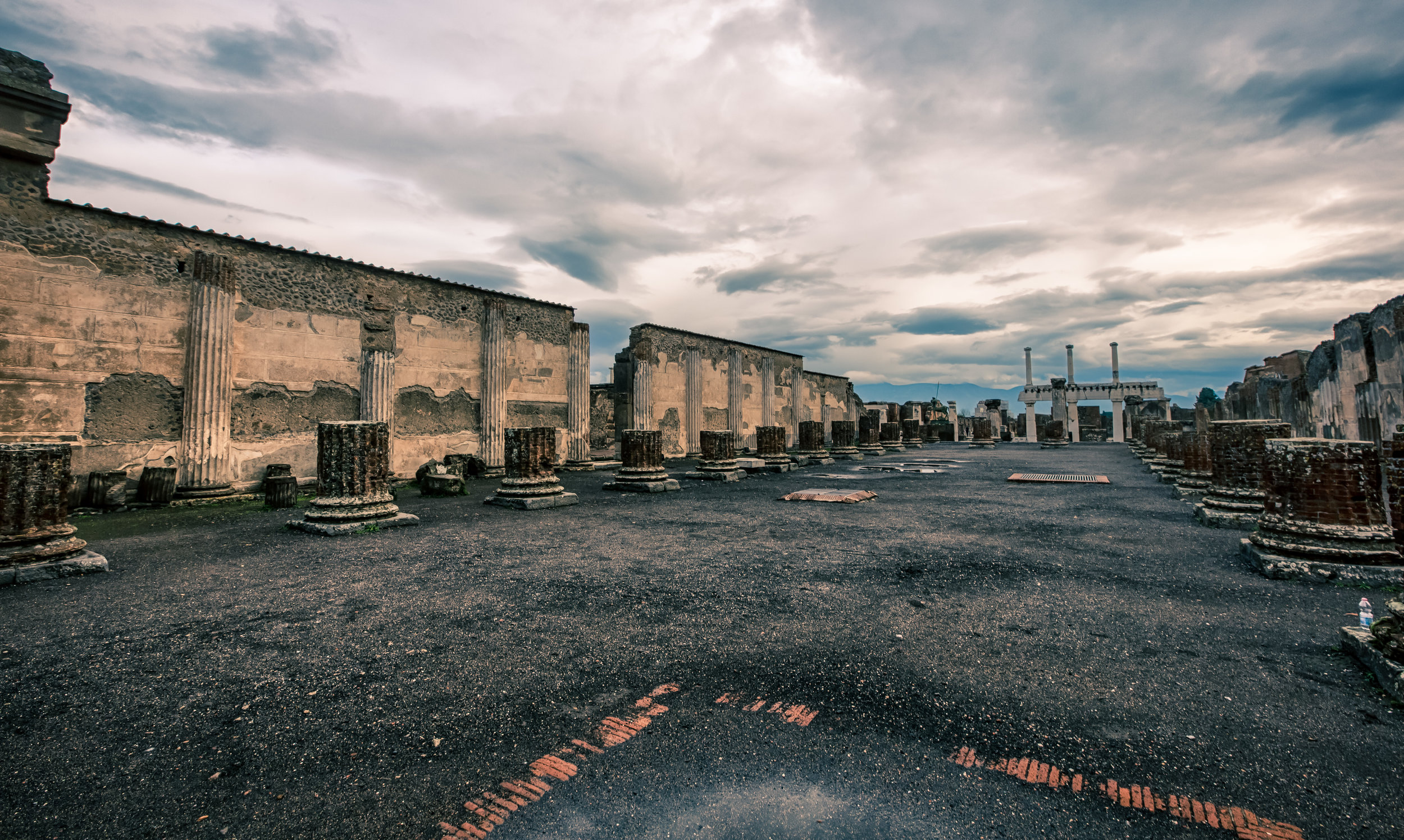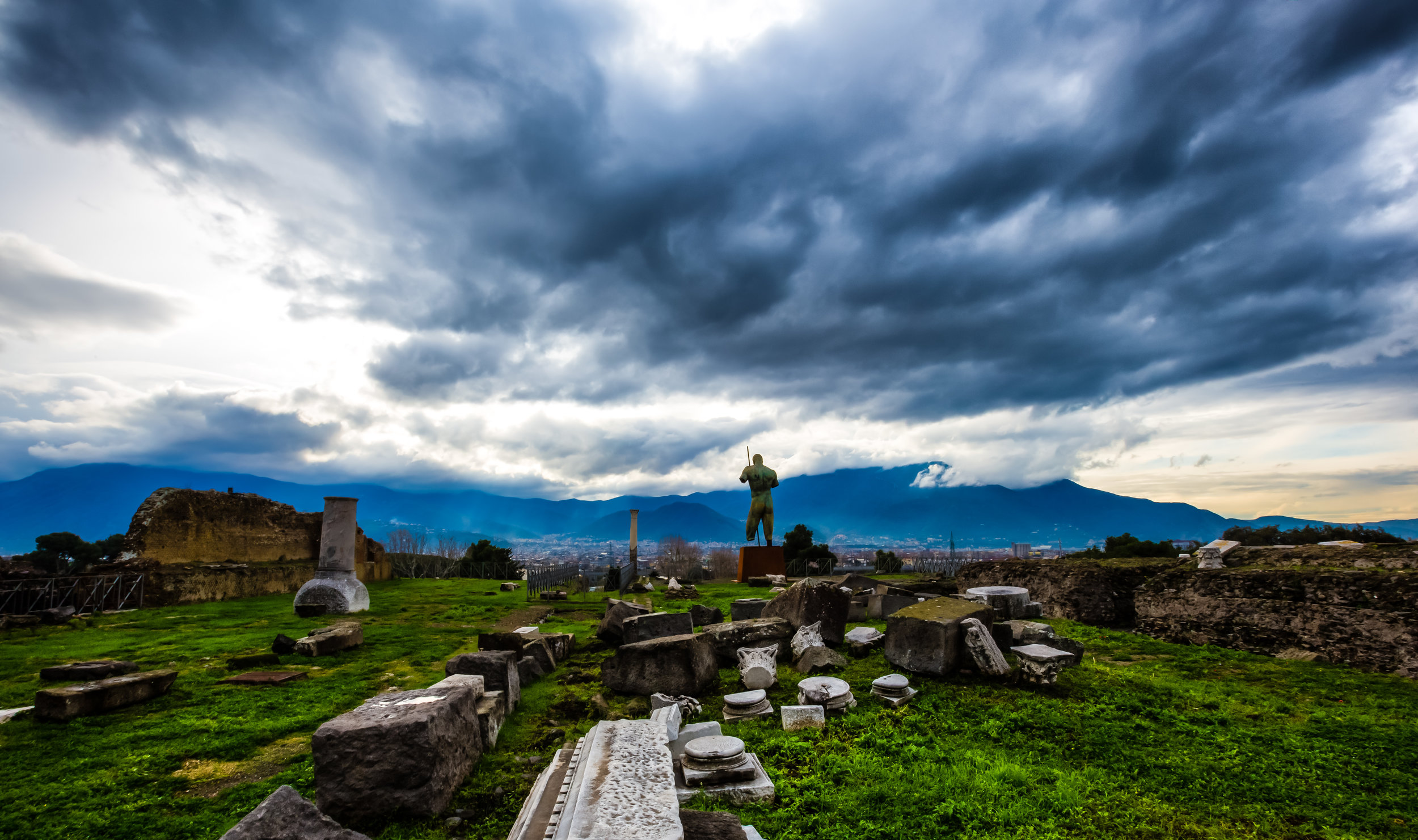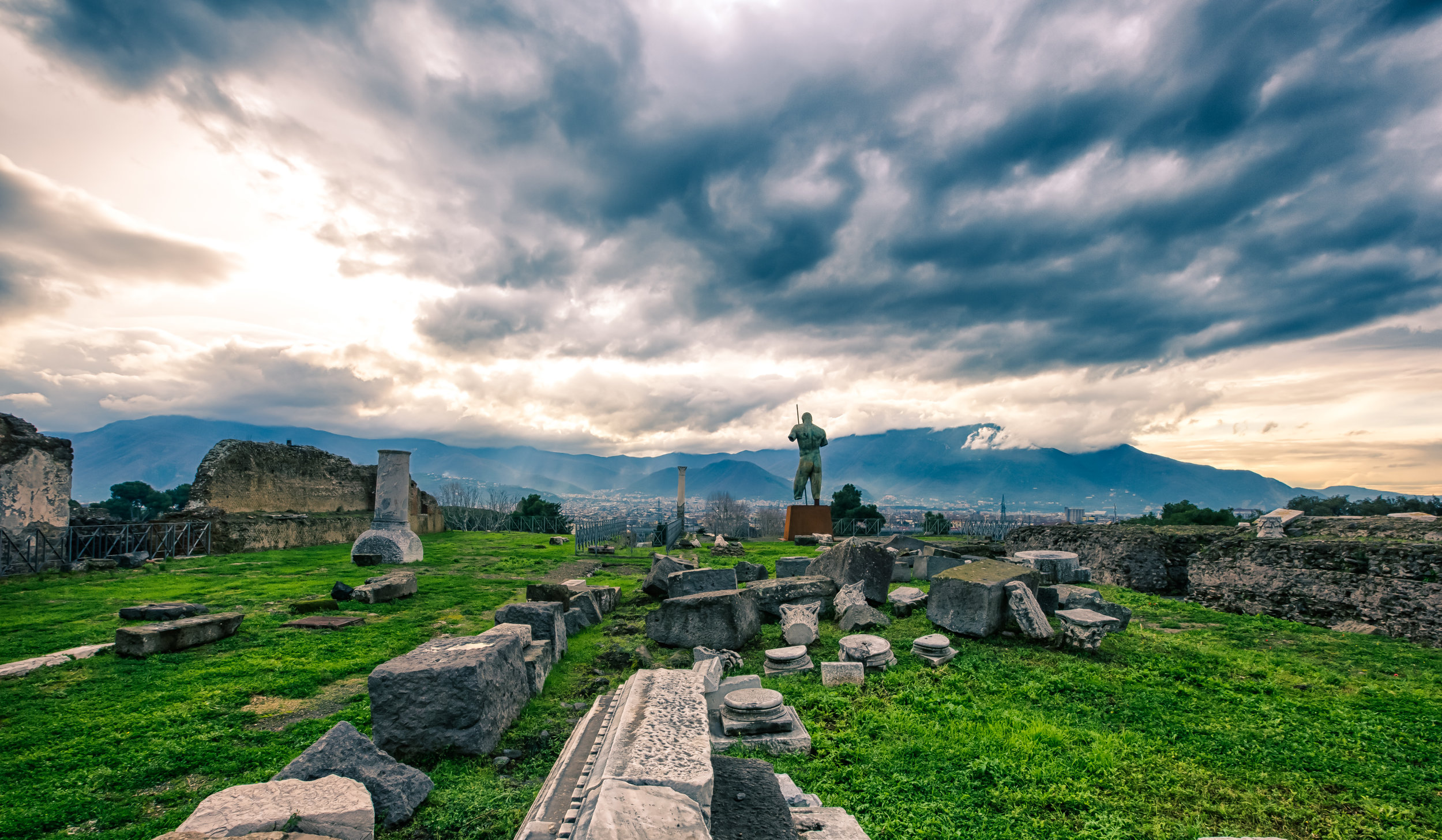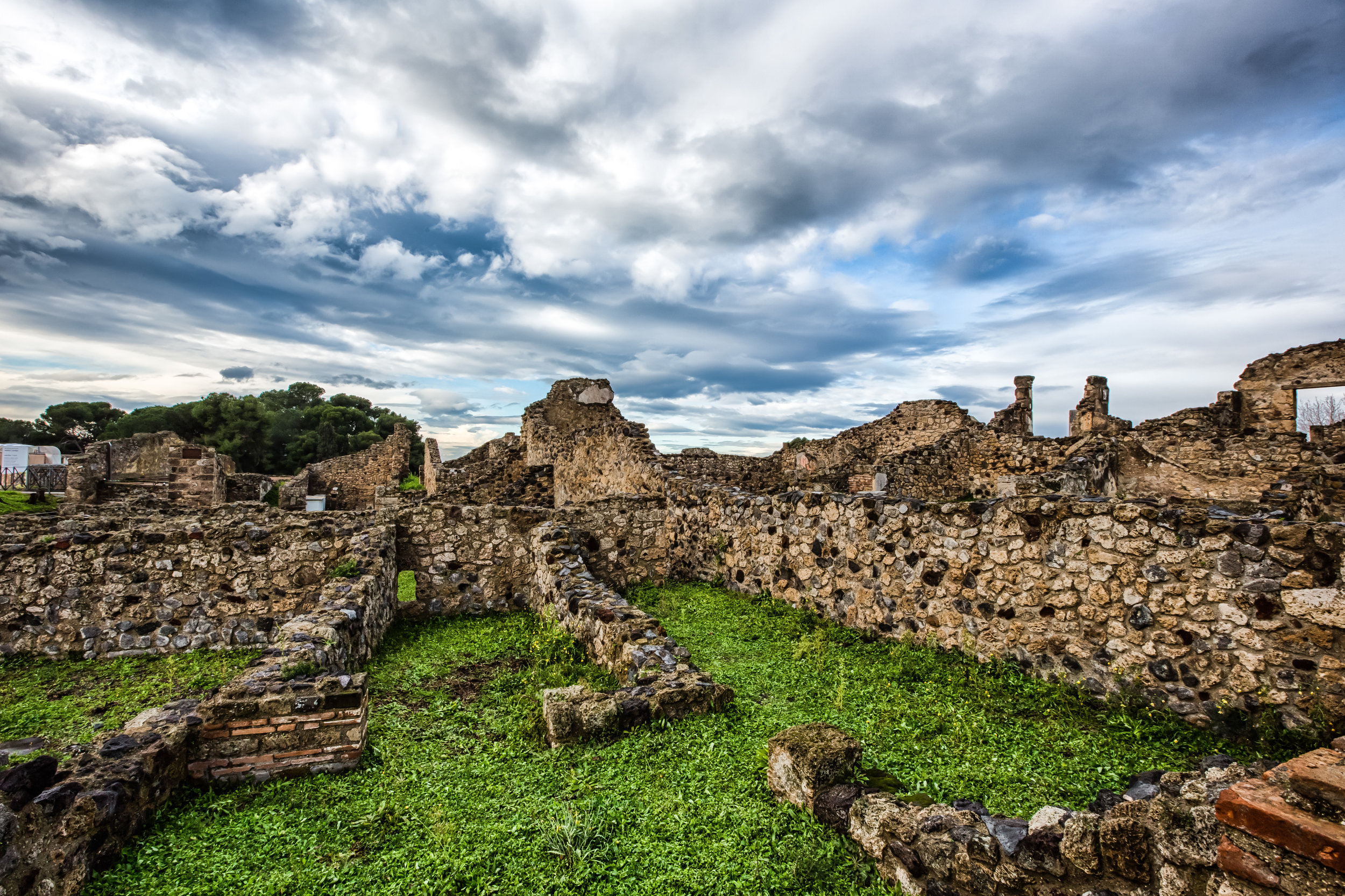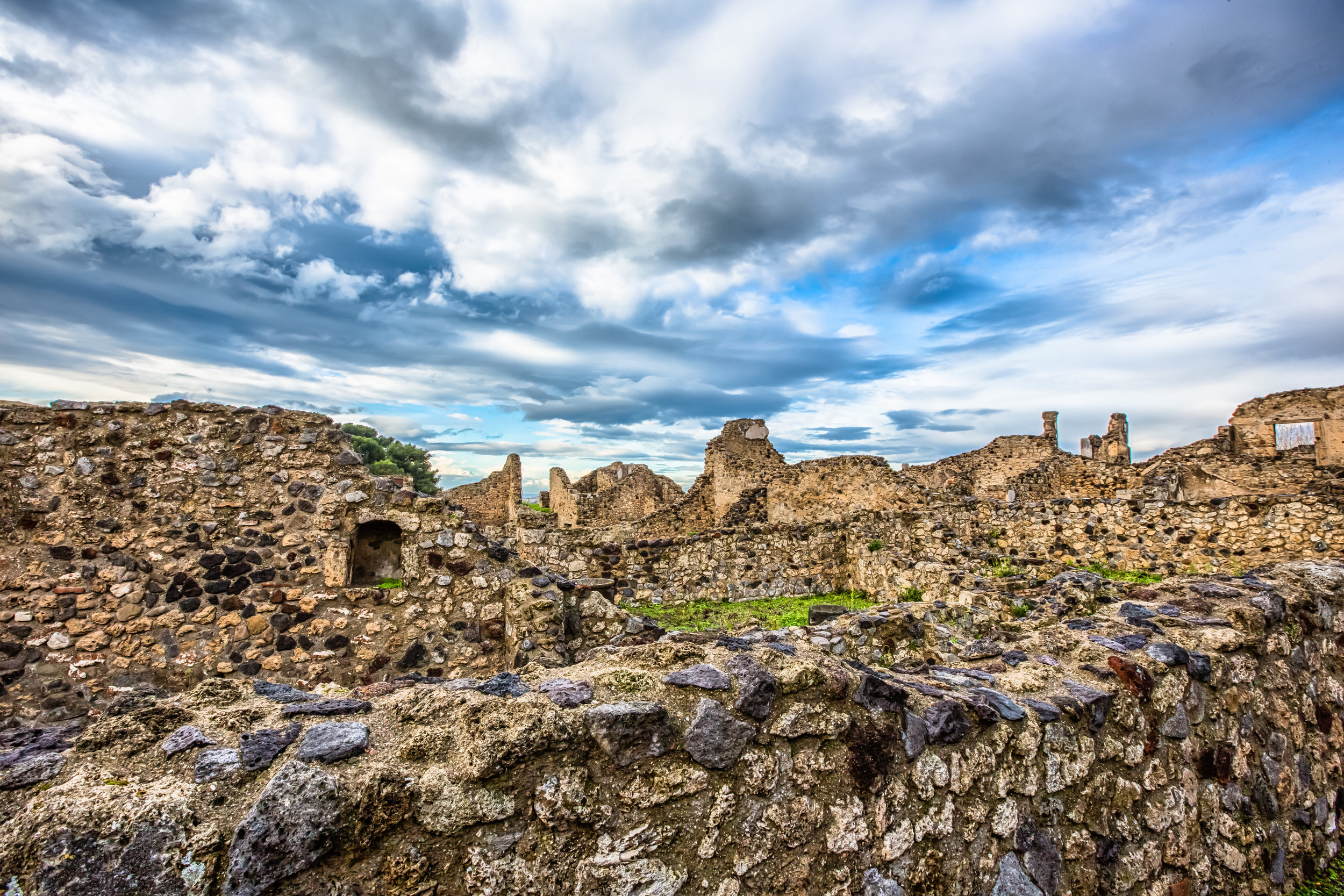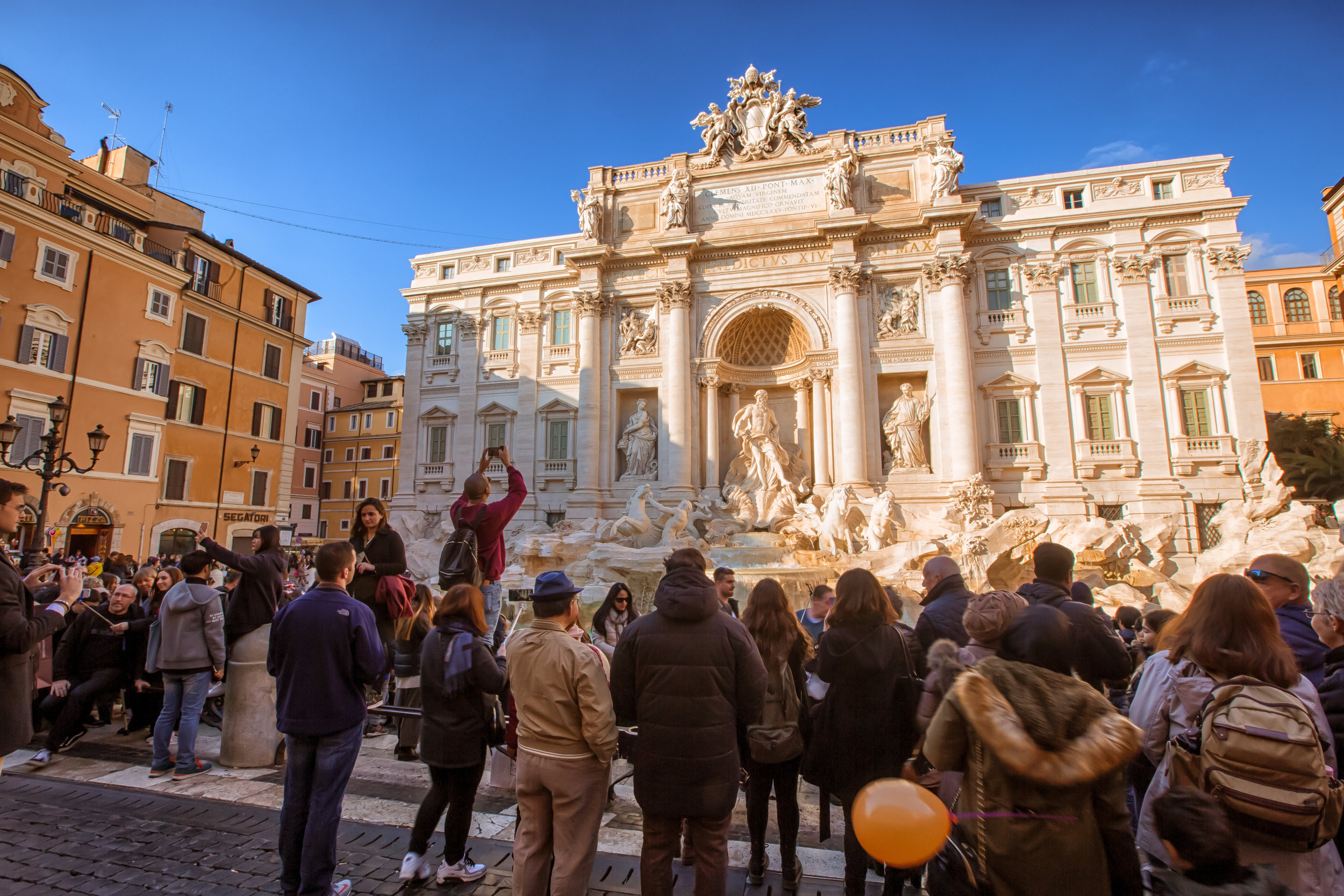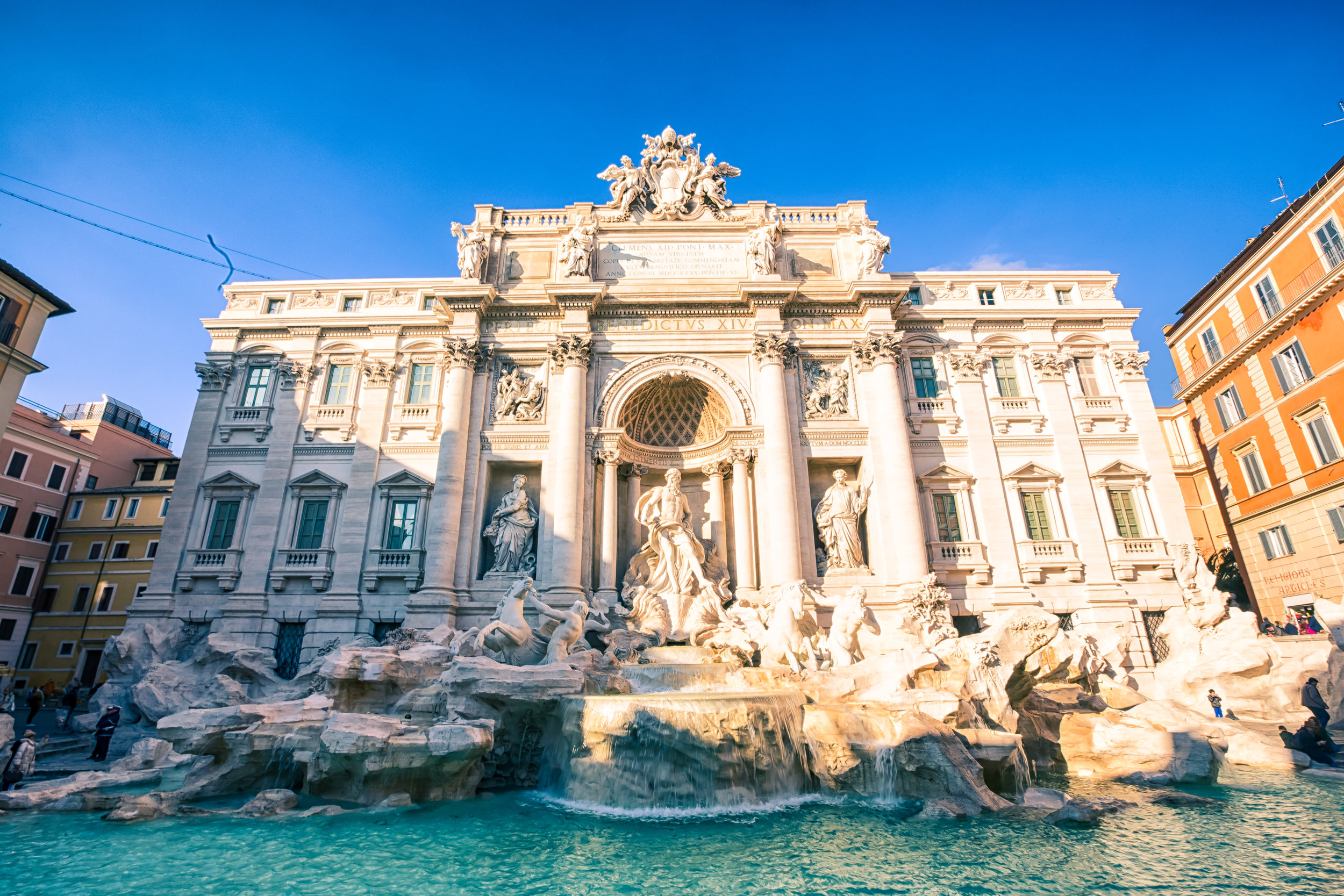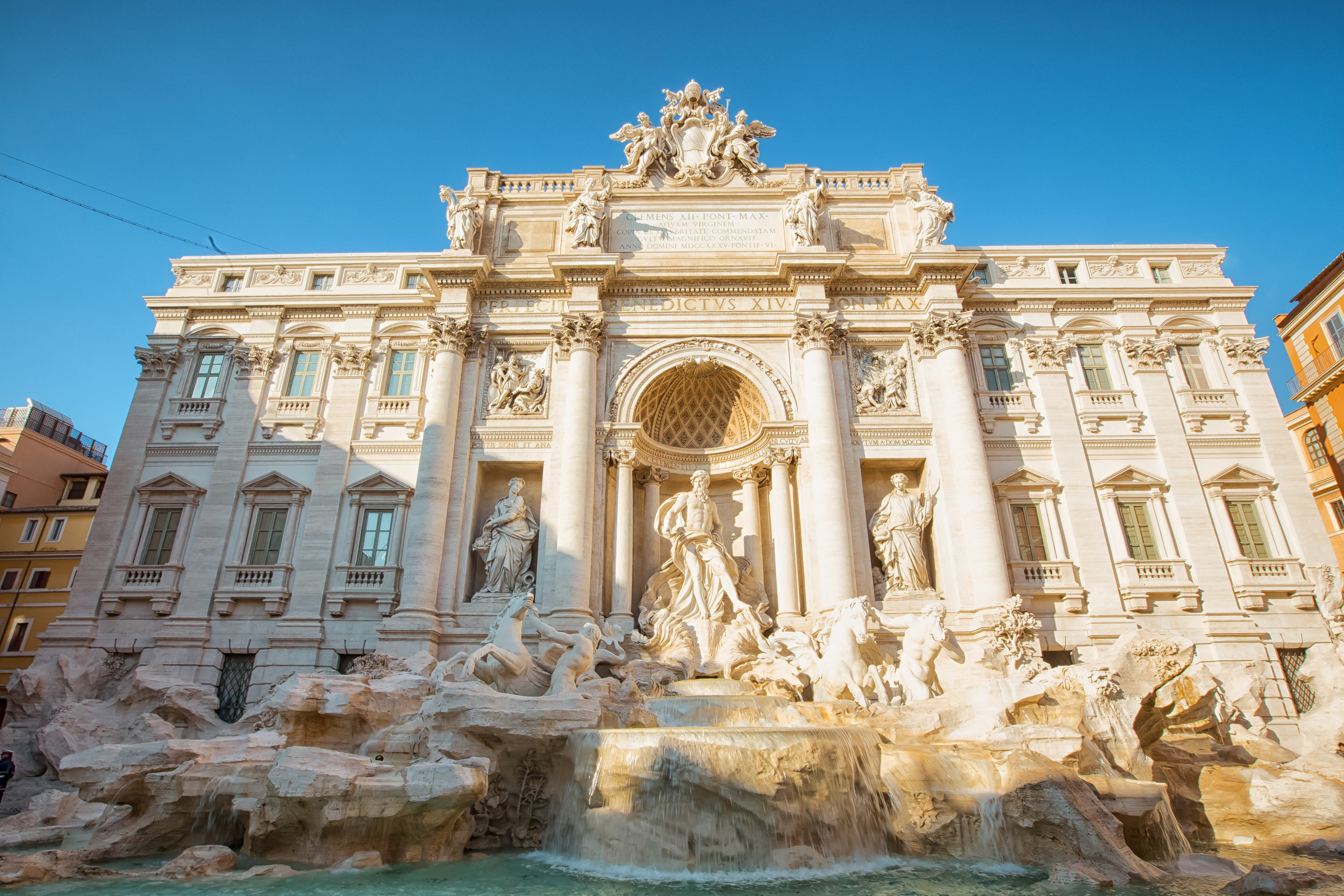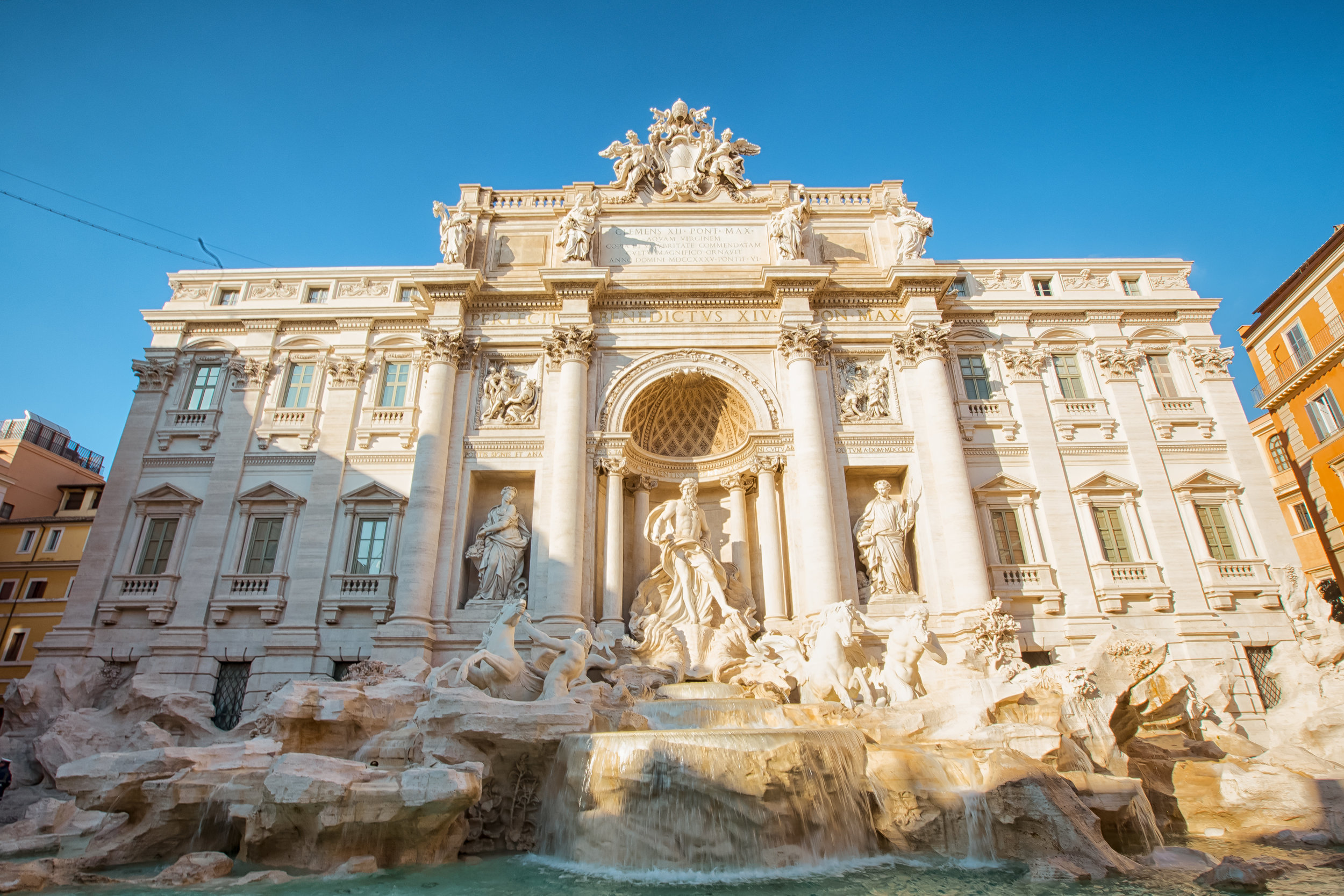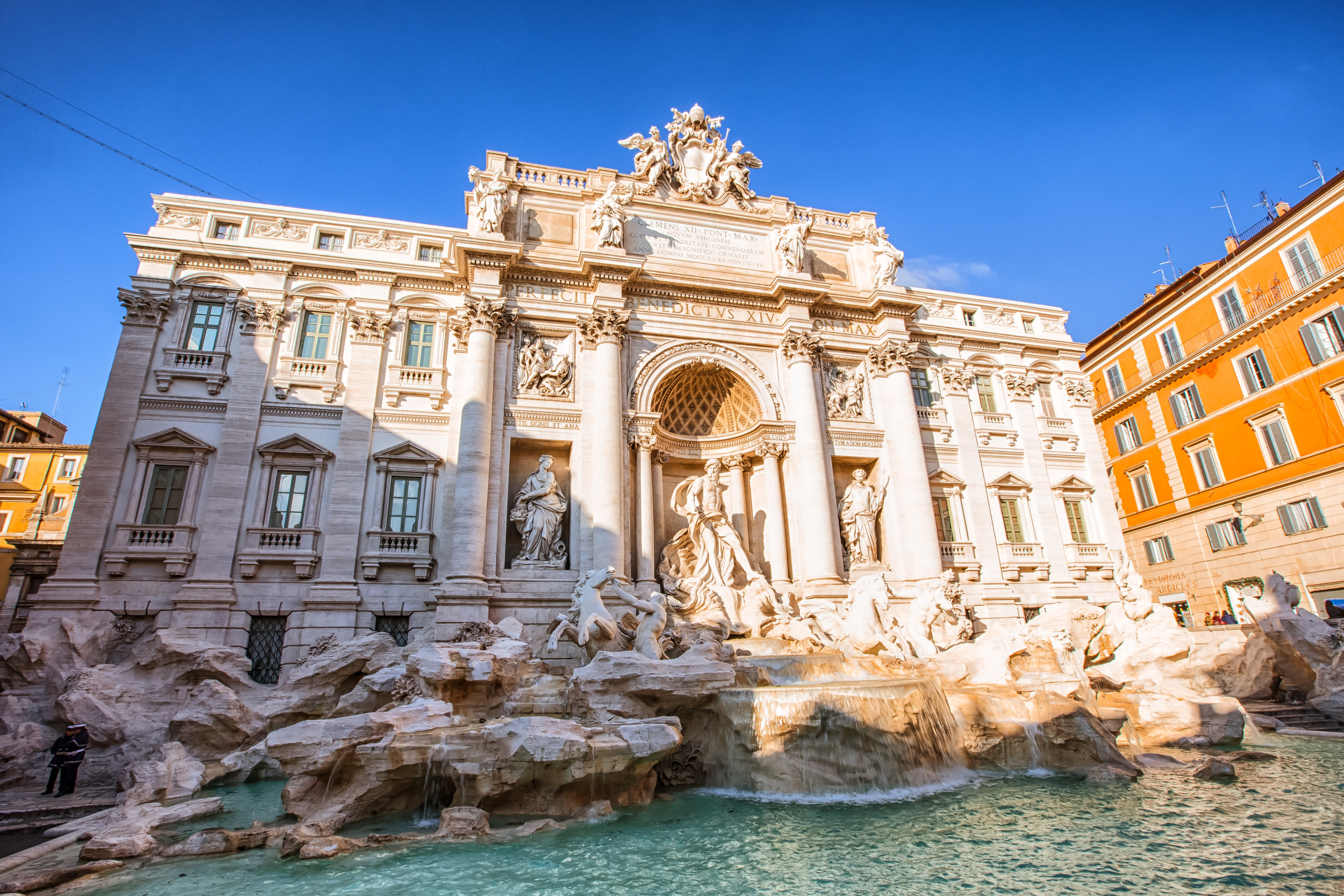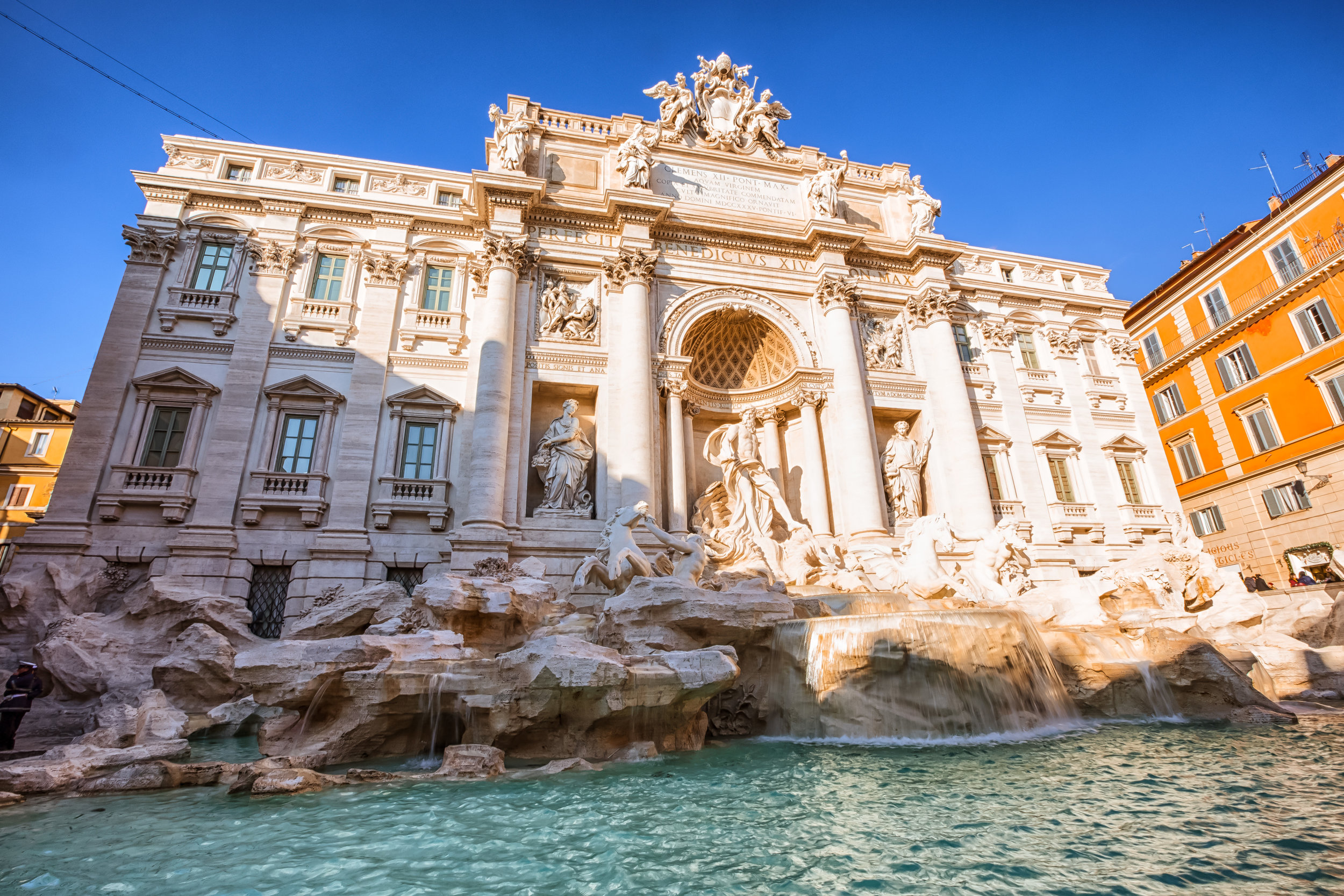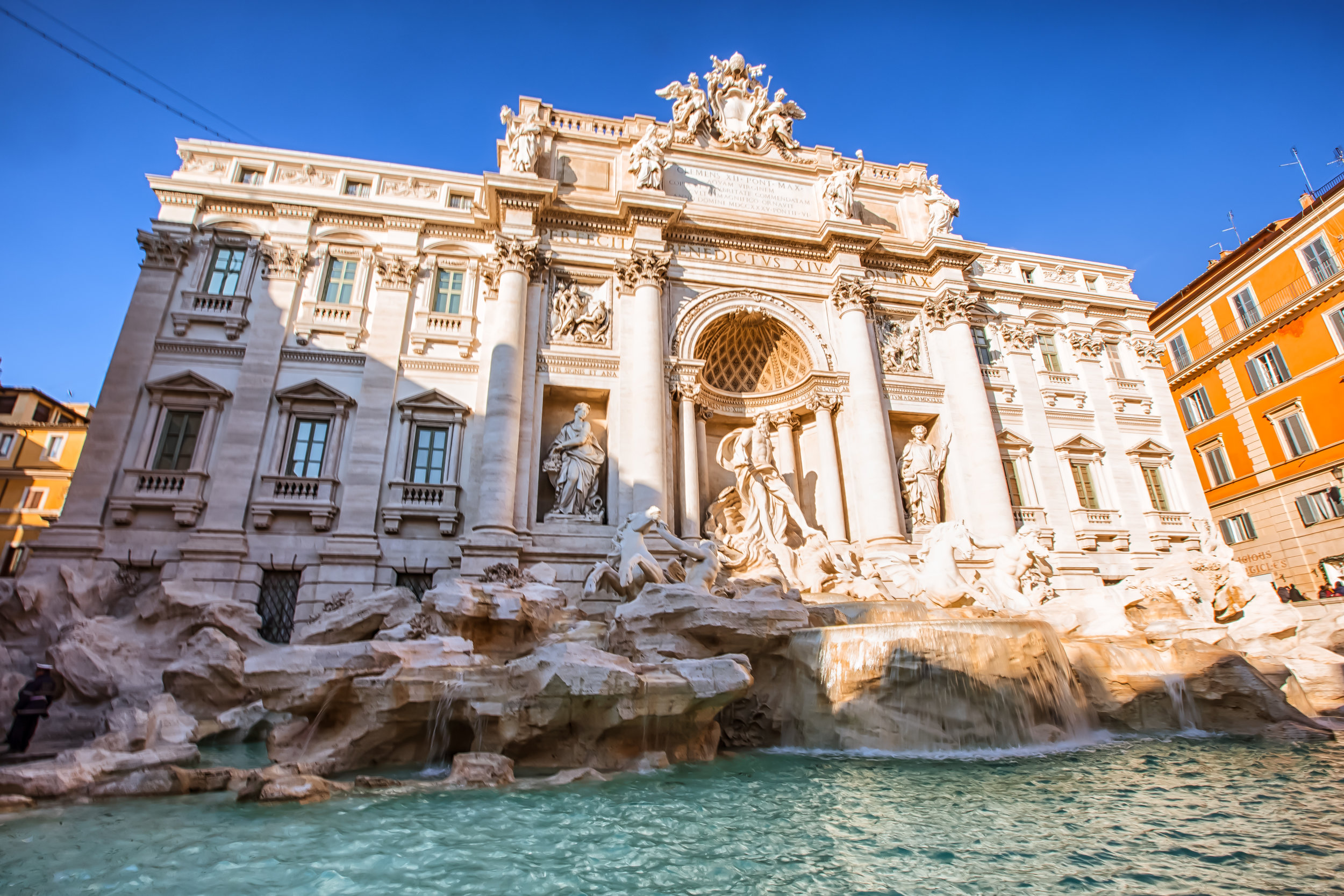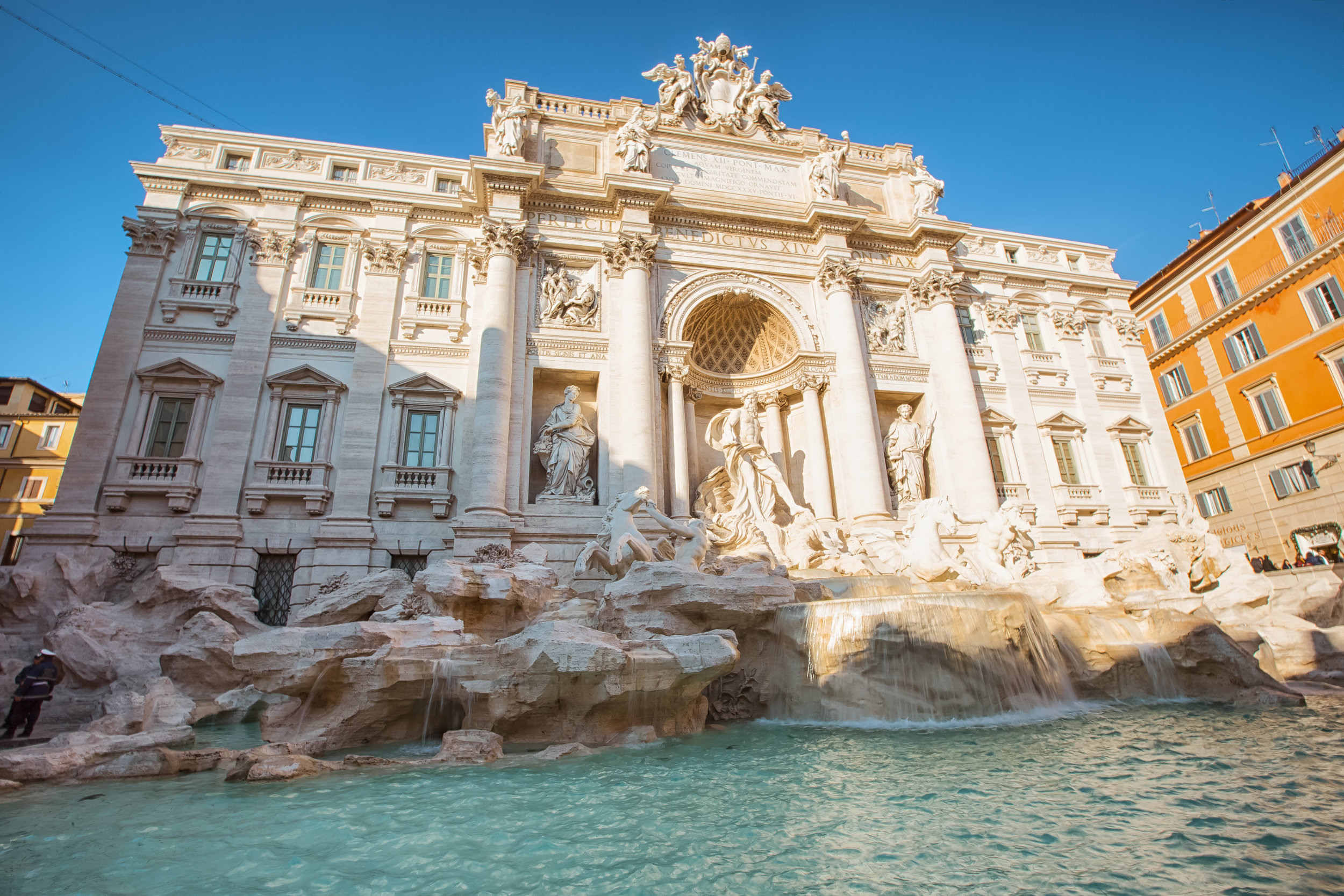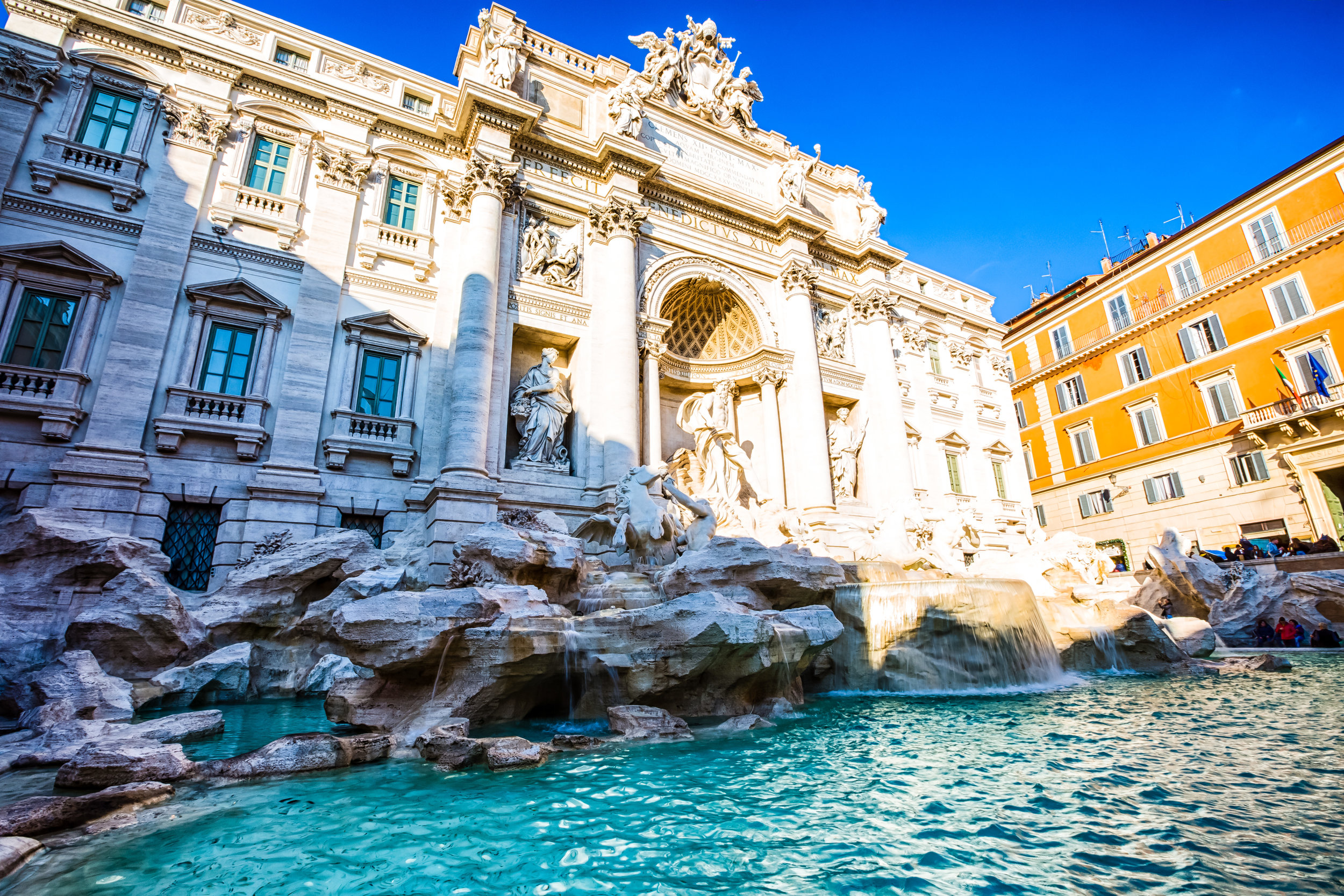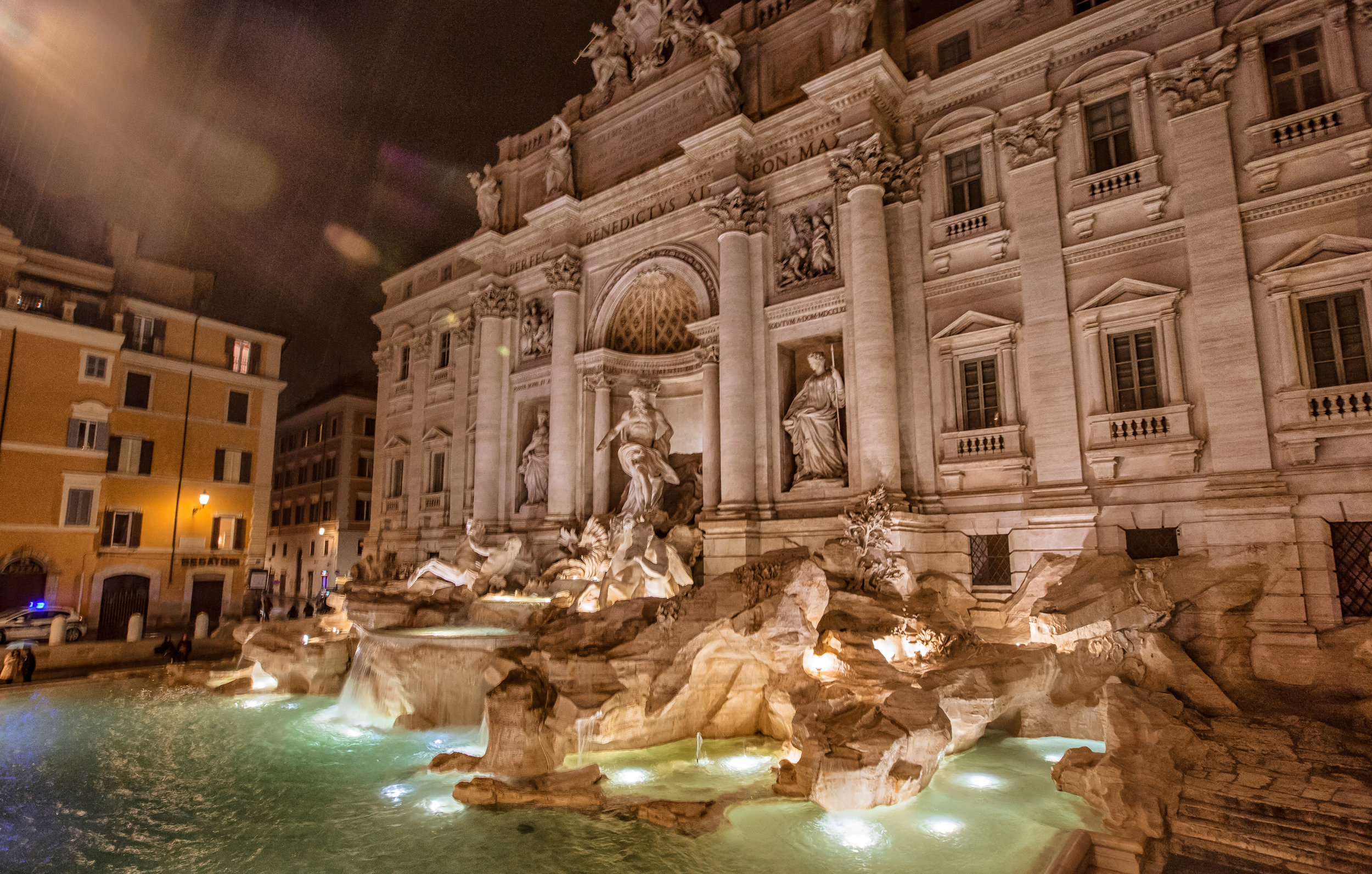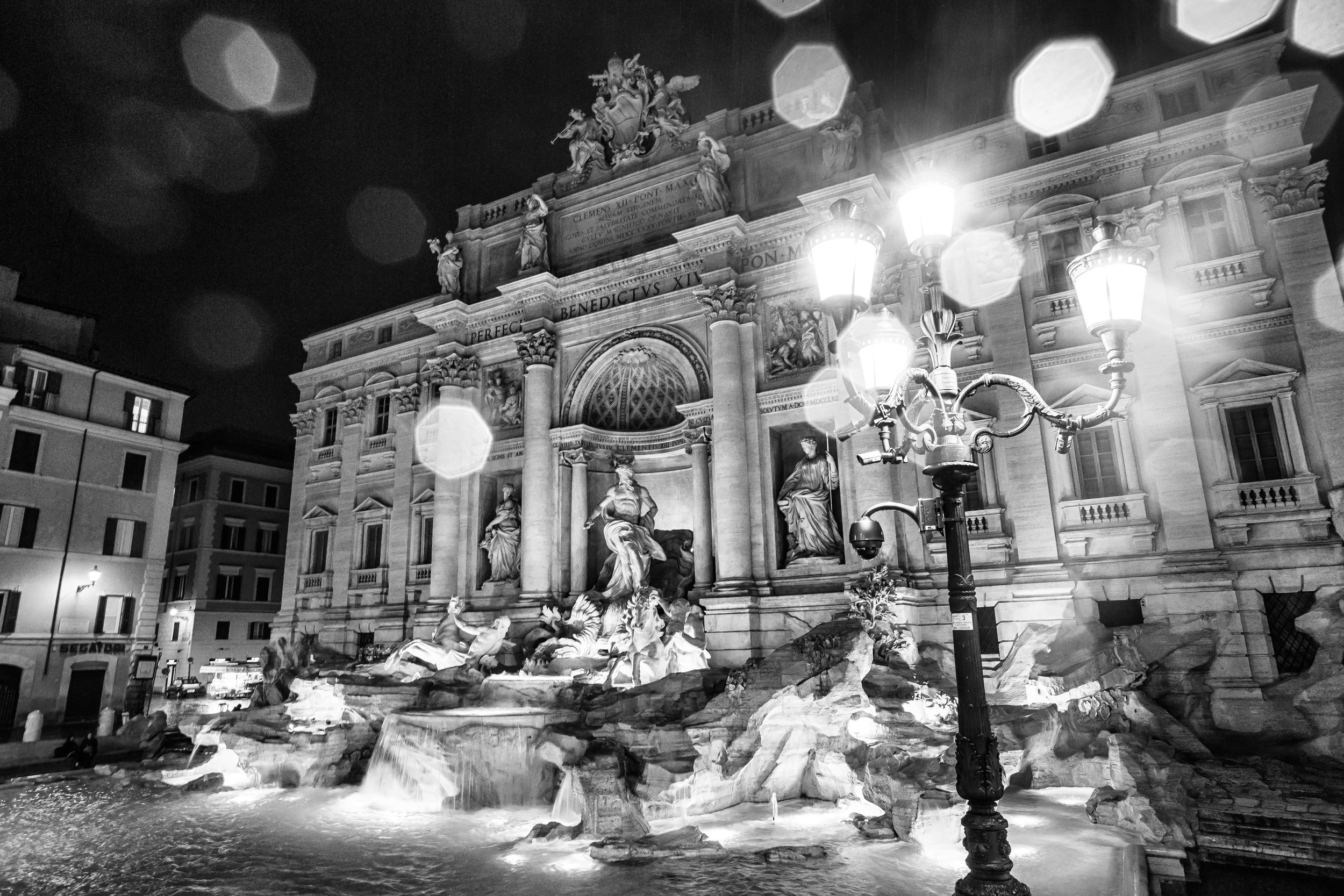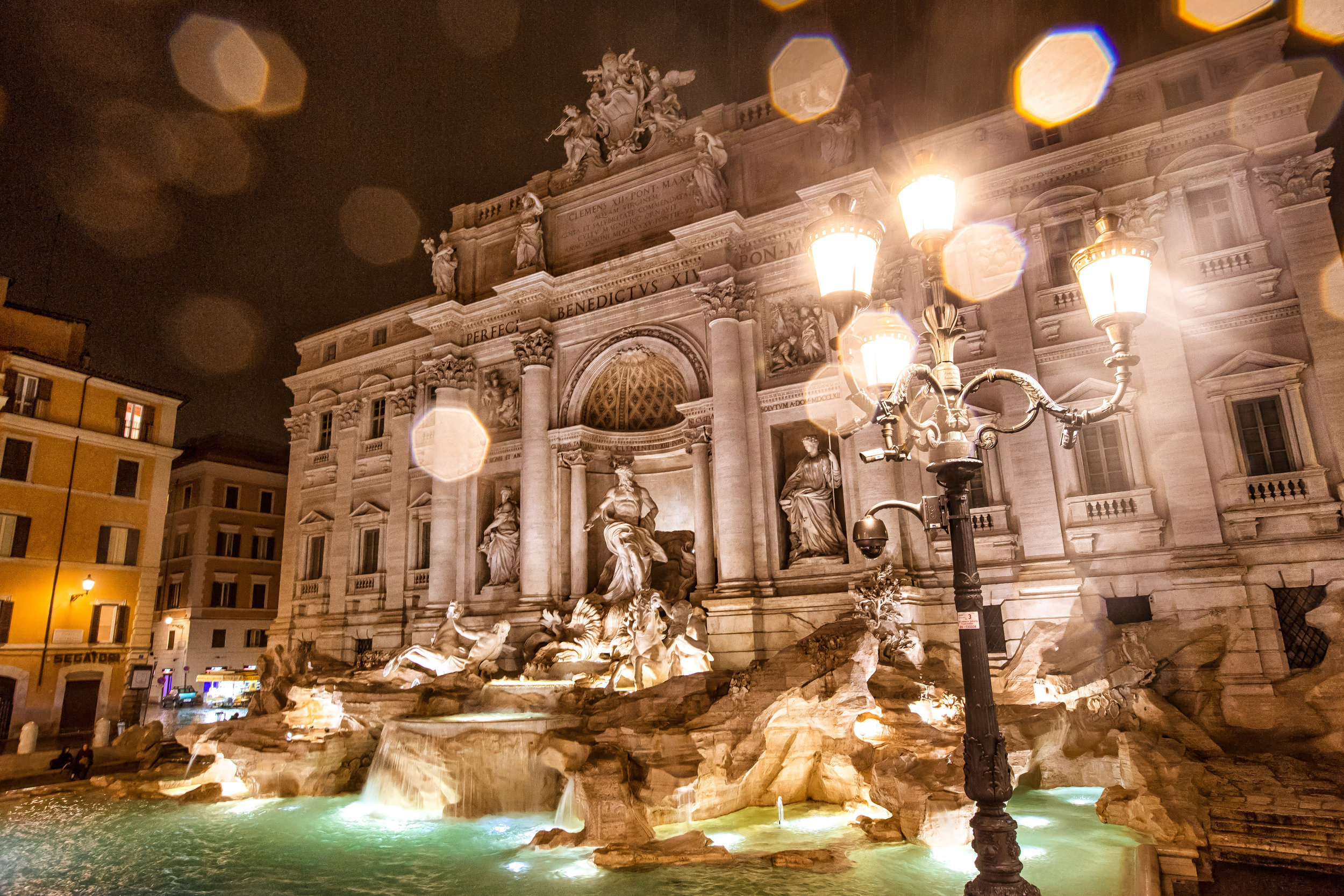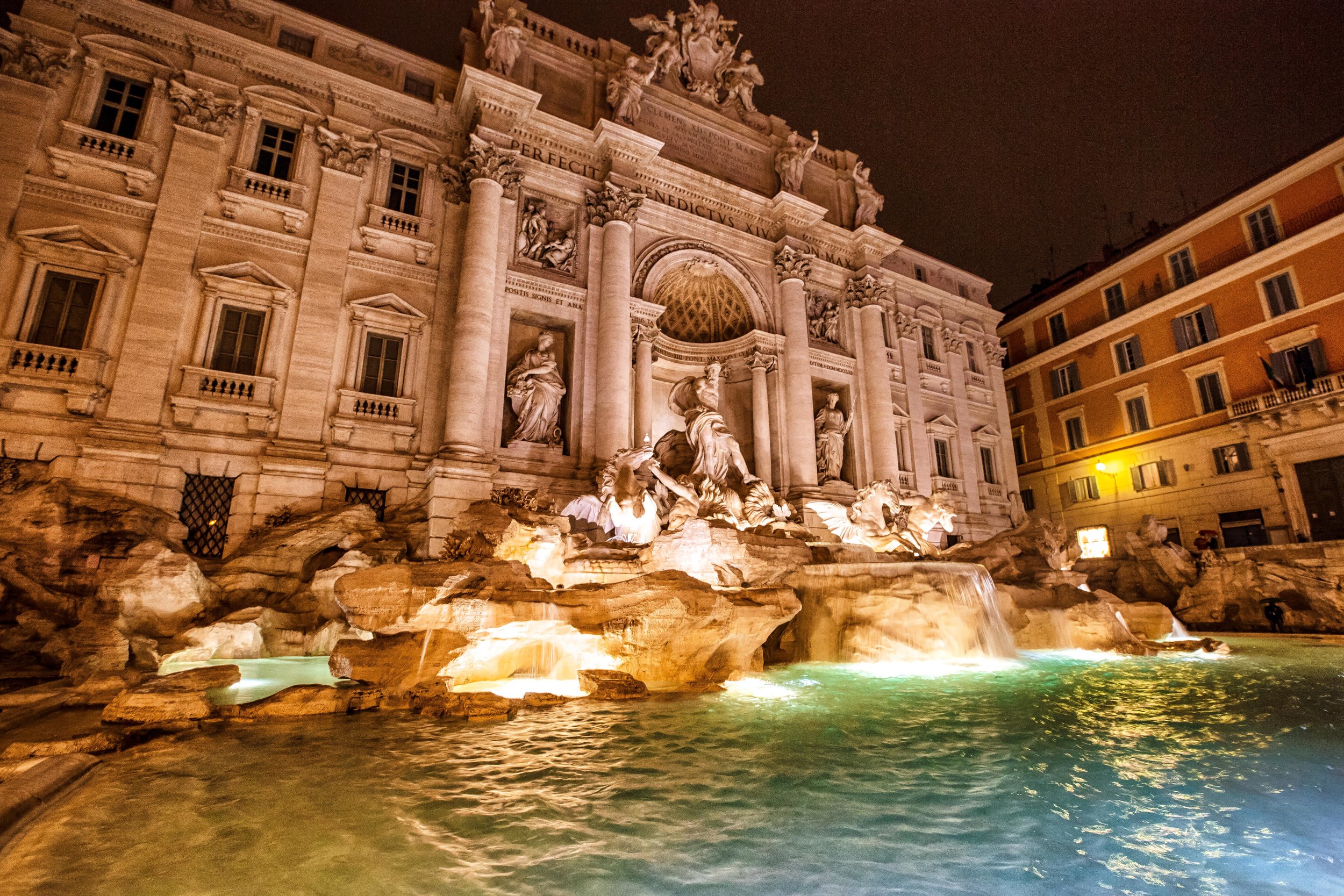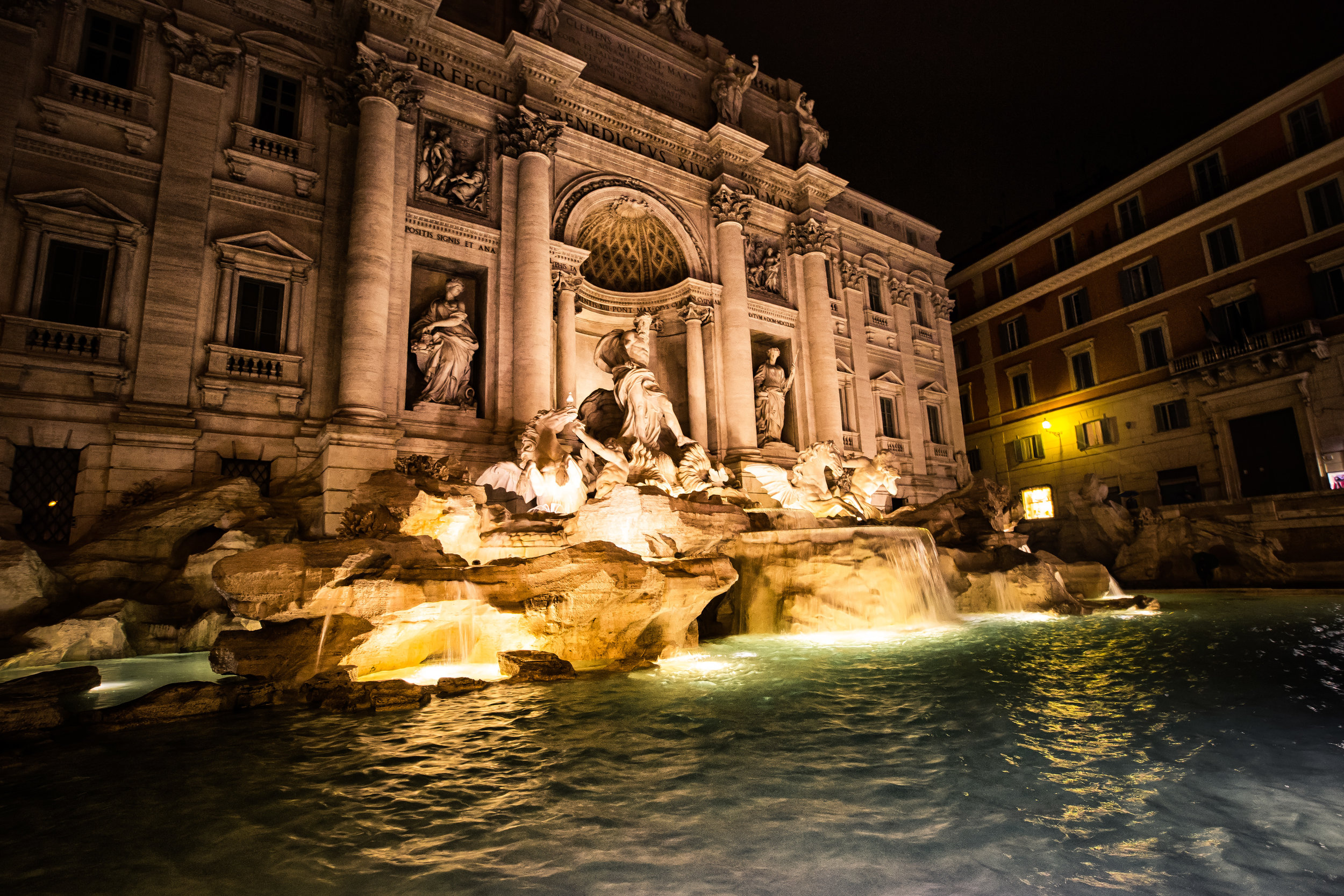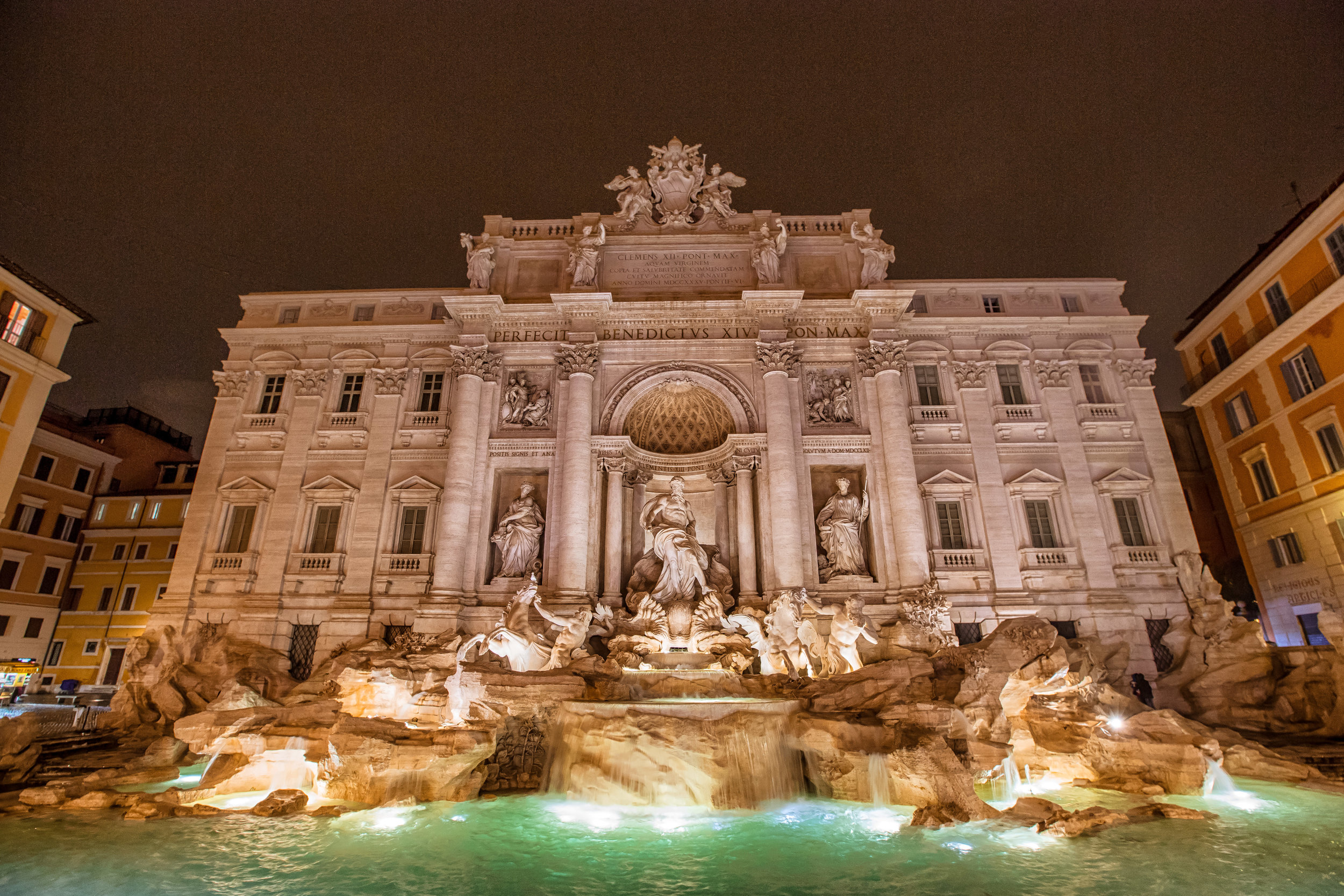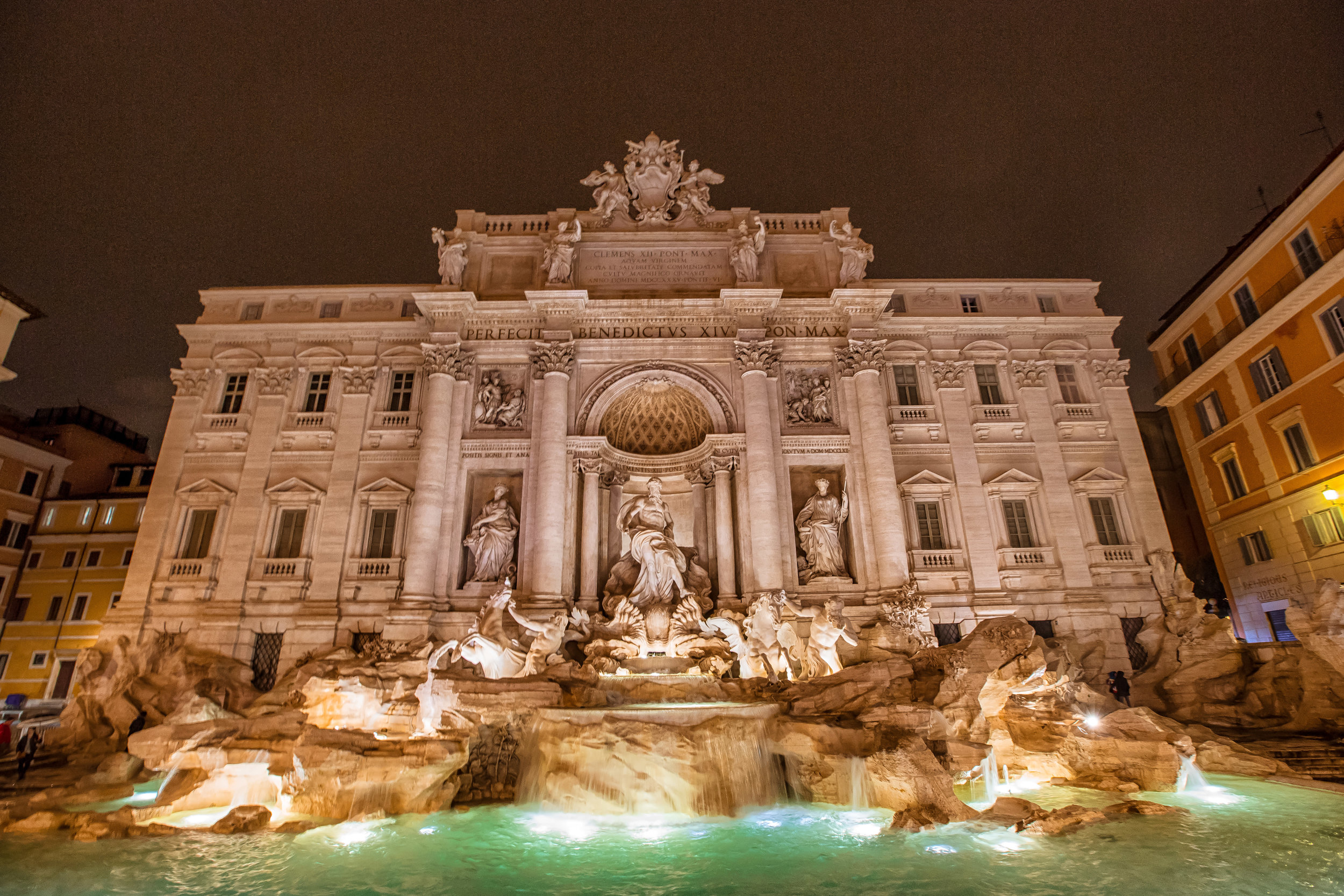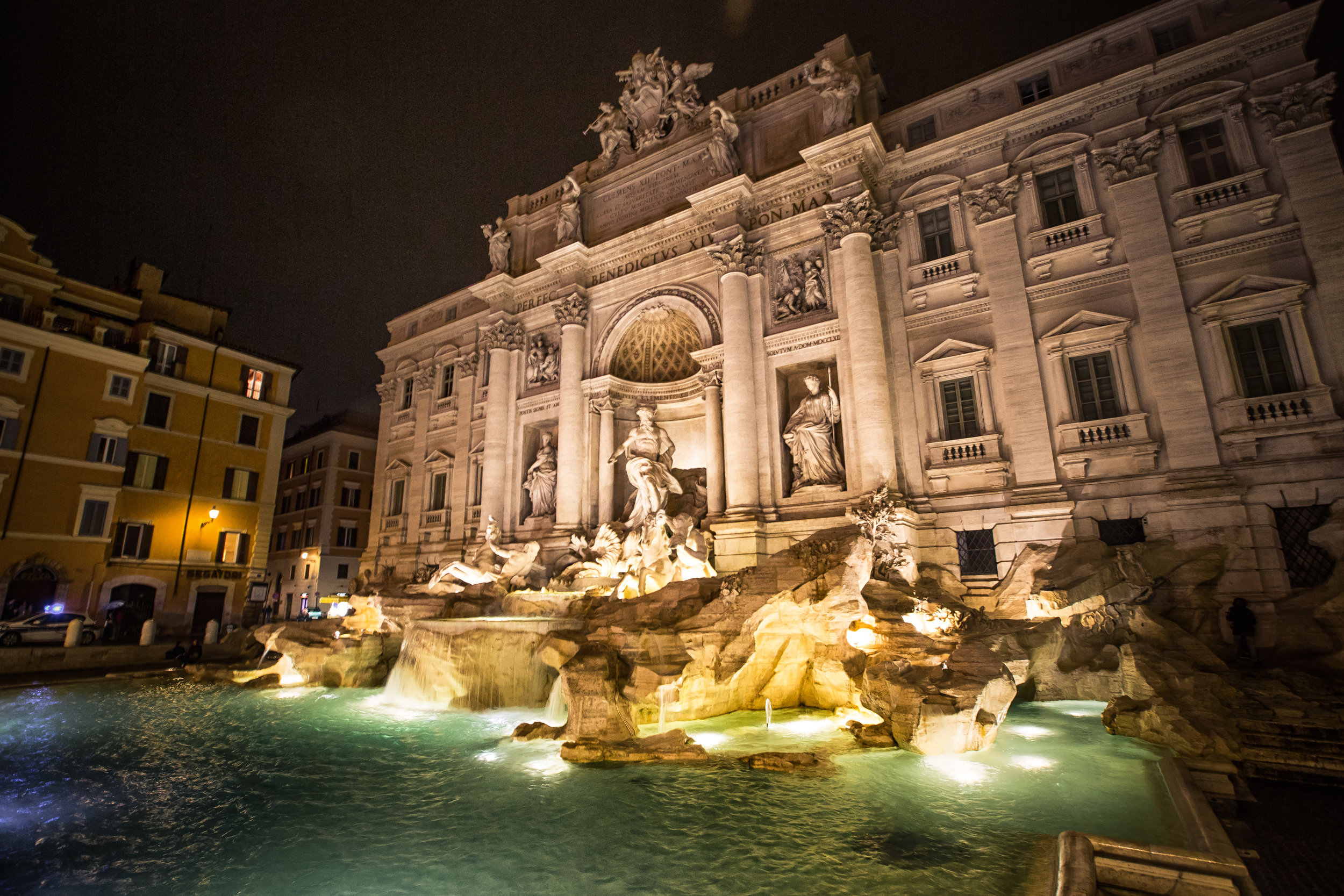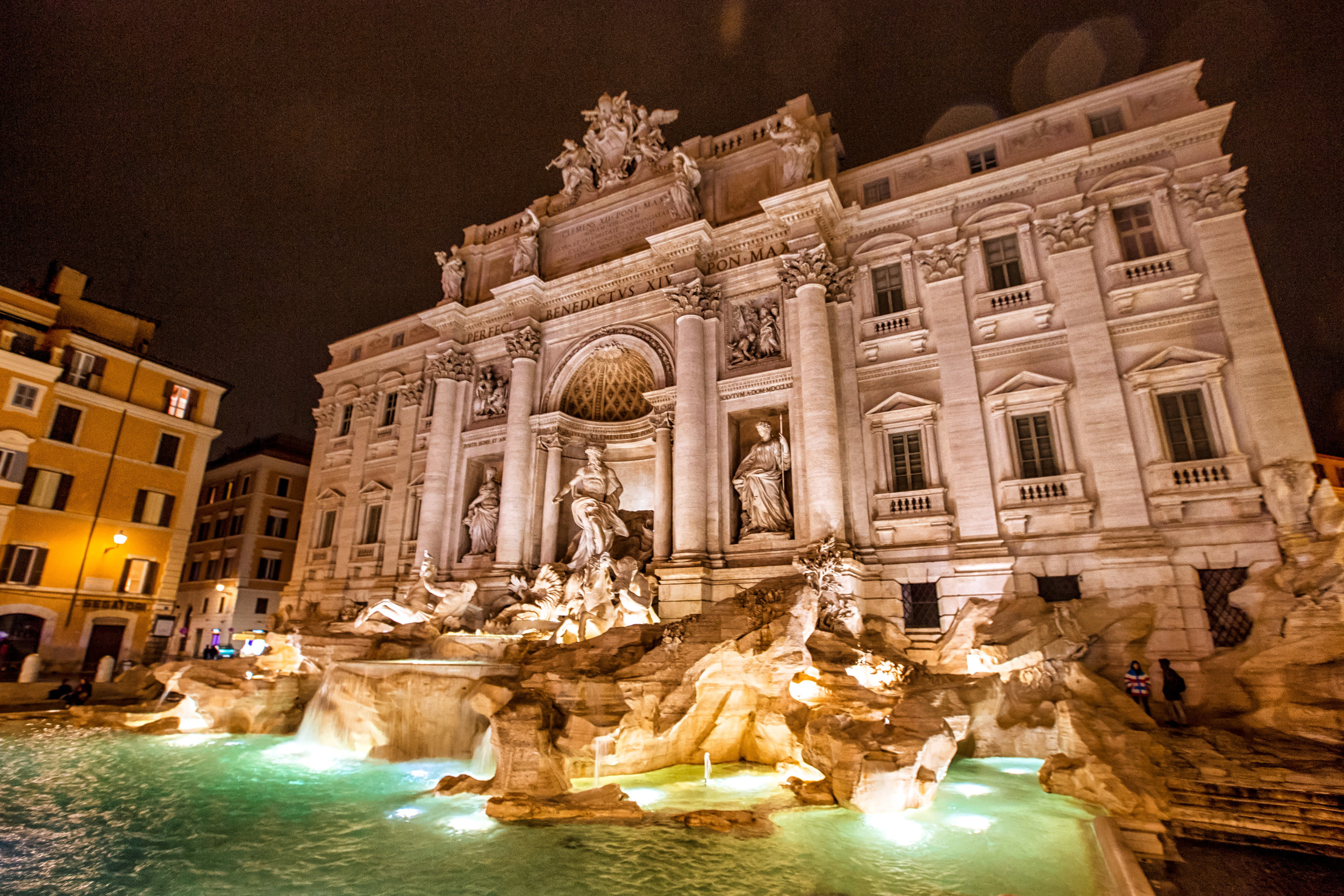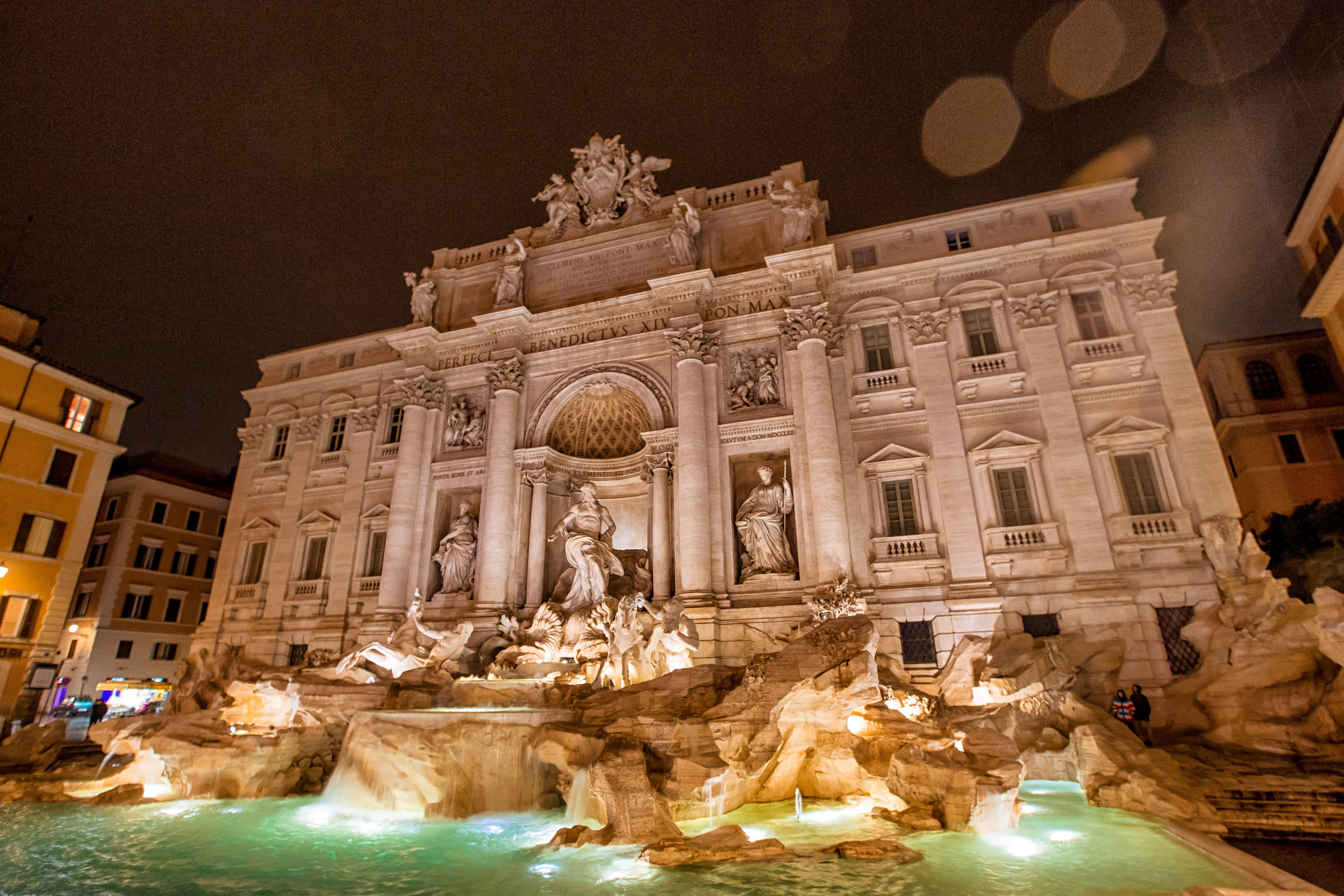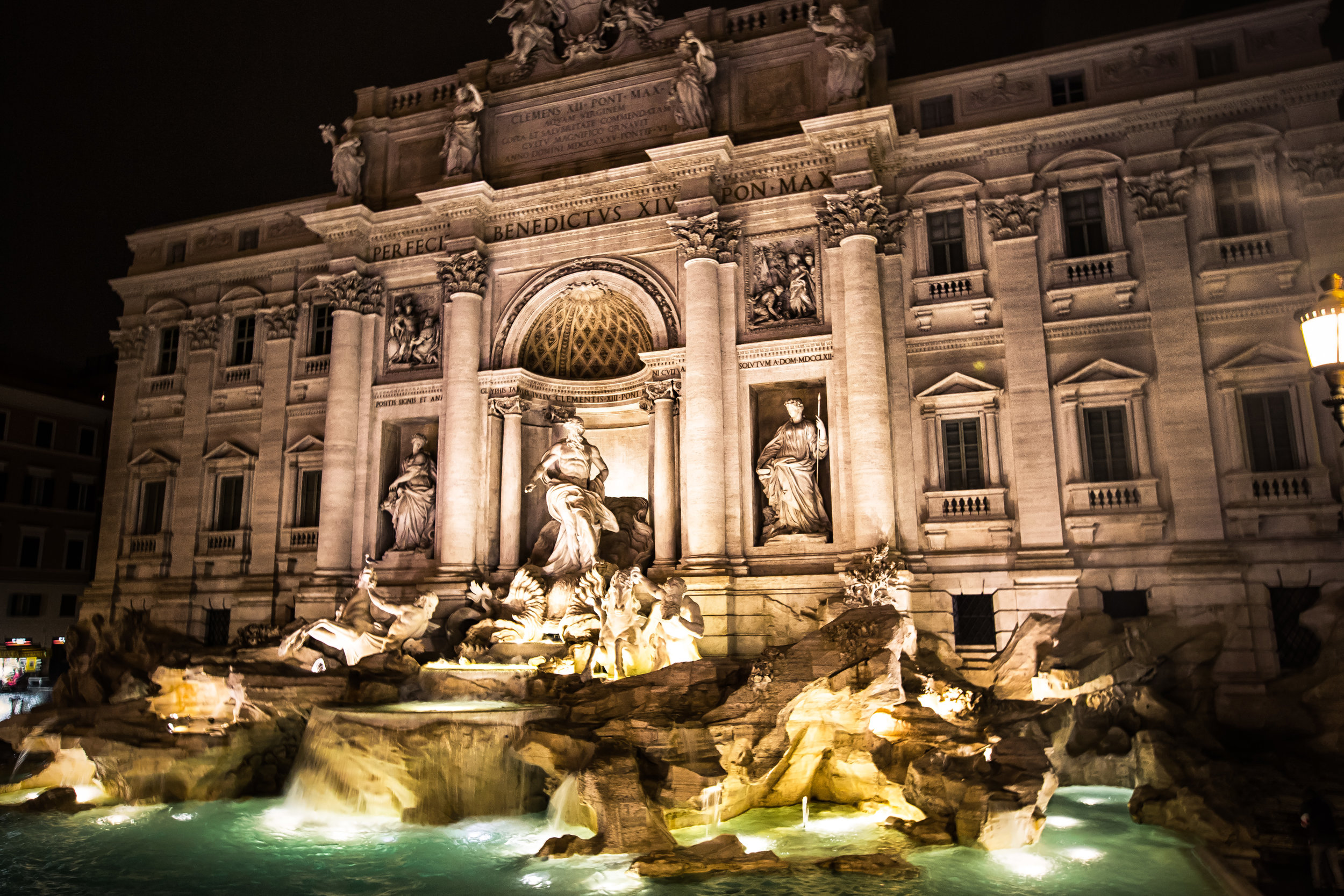The Ruins of Pompeii, an ancient Roman City in Southern Italy has piqued the interest of popular culture and the world’s travellers ever since it was rediscovered in the mid 18th century.
The story of Pompeii's destruction is one that has been told over and over again through art, literature, film, etc. What happened on that fateful day almost two thousand years ago when Mount Vesuvius erupted may have ended the lives of all of the city's inhabitants but the city lives on today as not only one of the top tourist attractions in Italy but one that is constantly the subject of archaeological study and discovery.
Pompeii's story is a sad one, but it is one that has given us so much knowledge about the art, customs and everyday life of an advanced society in the ancient world.
History
What happened in the ancient city of Pompeii was a tragedy that erased all life from a prosperous and developed Roman city. In tragedy however there is beauty as the disaster that destroyed an ancient city also preserved it and its culture for the modern world to marvel at.
As far as we can tell right now, it is believed that the city of Pompeii was founded about 2600-2700 years ago. Initially it was an independent city but came under Rome’s sphere of influence sometime in the 4th Century BC.
Before its destruction in 79AD, the city was home to a complex water system that provided water services to all of its inhabitants as well as having a giant amphitheatre, gymnasium, hot springs bath rooms, brothels, elegant houses, paved streets and a port.
Unfortunately, as most of us learned in school, in 79AD, nearby Mount Vesuvius erupted which resulted in the deaths of all of Pompeii’s inhabitants, burying them as well as the city under tons of volcanic ash.
Scientists have since discovered that the eruption released thermal energy more than 100,000 times that of the Hiroshima-Nagasaki Nuclear Bombs.
Even though most people today know about Pompeii’s destruction, it’s important to note that Pompeii was not the only victim of the eruption as several other towns in the area were also destroyed which notably includes the neighbouring city of Herculaneum.
The death toll caused by the eruption is still unknown, but the remains of about 1,500 people have so far been unearthed at both Pompeii and Herculaneum and just as I'm posting this blog the first body to be discovered in more than a decade was found in a bath house.
Link: Pompeii Archaeologists Unearth Child Skeleton from Ashes of Vesuvius (4/25/18)
After the destruction of the city, all memory of its existence disappeared for well over 1500 years before being rediscovered in 1748 by Spanish engineer Rocque Joaquin de Alcubierre. The ruins of the city of Pompeii and its residents have since been an archaeologists dream job with efforts to unearth the entire city ongoing for well over 250 years.
Thanks to the lack of air and moisture, the artefacts that have been found have helped to provide an extraordinary look into the life of an ancient Roman city.
Today almost three million people live near Mount Vesuvius and even though it has not erupted since 1944, it is still considered one of the most dangerous volcanoes in the world.
Experts agree that the next big eruption could come any day which would once again spell disaster for the people living in the region.
Travelling Tips
One of the most frustrating aspects of planning my trip to Pompeii was that (unless I planned to take part in an expensive guided tour from Rome) almost all of the information about how to get there was confusing and in most cases every article that I read contradicted the others.
I hope that if you take away anything from this blog post, it would be from my travel experience and the tips I’m about to share.
- The first tip I’m going to give probably won’t be a popular one with those in the tourist industry in the area, but you seriously don’t need to join a tour group to go to Pompeii. You can hire a tour guide when you arrive if you like, but the insanely priced tour packages out of Rome are just tourist traps and you’d be silly to fall for them.
- The next tip is that Pompeii is definitely doable as a day trip out of Rome - We took a high speed train from Termini Station to Napoli Centrale Station and from there took a local train from Naples to Pompeii. This may seem like one of the most confusing and contradicting aspects of planning your trip to Pompeii thanks to online literature, but trust me, its simple.
- There are a number of articles online that use scare tactics to warn travellers about the 'dangers' of walking around Napoli Centrale Station. Let me tell you, as a major transportation hub in Italy, Naples train station is well protected with not only armed security, police and an army presence. Travellers should take normal precaution, but don’t be afraid, you’re more than safe in Naples.
- You are going to save a lot of money on your trip to Pompeii if you book your train tickets to Naples well in advance. Don’t leave getting a seat on the train to the last minute as you’ll end up paying a considerable amount more if you wait. I used the Rail Europe website to book my tickets which allowed me to search for the cheapest prices on all of Italy’s rail services.
- One of the most confusing aspects of taking the train to Pompeii is that once you arrive at Napoli Centrale, you have to switch to a local train that will take you down the coast to Pompeii. You cannot pre-order tickets for this leg of your trip, but getting train tickets is simple and hopping on the train to Pompeii is not only a scenic ride down the coast but an interesting in terms of people watching as you get to see a side of the Italian people that you won’t see in Rome.
- Pompeii is a major tourist attraction, it is very important to buy your entrance tickets in advance. Pre-ordering your tickets means you won’t have to wait in a long line and can enter the park as soon as you arrive. Make sure to either have the advance tickets printed out or available as a PDF that can be scanned on your smart phone. I purchased by tickets online through Musement which allows you to skip-the-line and gives you full access to the site for the day you purchased the tickets. Advance tickets should cost around €13 per person and if you want to add an audio guide, it is €8 per person. There are also discount rates available for children and students.
- The UNESCO World Heritage Site of Pompeii is not something you are going to be able to see in an hour or two. You are going to need the better part of a day to really see the place and even then, you’re still going to leave with the feeling that you could have seen more. Remember, Pompeii was once a large city and the archaeological site is opening up more and more of that former city each and every year. Try your best to see and learn as much as possible.
- When you are at the admissions gate, you need to be absolutely sure to take a map of the area. If you don’t get one you are either going to miss out on some of the most important areas to visit or end up getting lost. Maps are free with admission, so be sure to grab one. The people at the admissions counter are not always that forthcoming with passing them out.
- If you are leaving from Rome, make sure you have a filling Italian breakfast that includes not only food but an espresso that will give you enough energy for the day. You should also consider purchasing water (Pompeii is a wide open space and it gets very hot) as well as something to snack on while you are in the park as you’re likely to get hungry.
- Be wary of the weather conditions on the day of your visit. If the forecast is calling for sun, make sure you dress appropriately. Likewise, if its going to rain make sure you have a rain coat and umbrella. There are few places where you can take shelter from the elements in Pompeii, so the weather can be a major factor in whether or not you enjoy your trip. Make sure to also wear comfortable footwear as well - The two thousand year old stone road isn’t easy to walk on.
- You’ll see warnings online that you are not permitted to take in bags with you when you visit Pompeii. This rule isn’t explained well, but what they mean isn’t a day pack or a camera bag, it means you can’t take your luggage in with you and drag it along the old stone roads. I was originally afraid I was going to have to put my camera bag in a locker, but no one even bothered to look at it - although there may be a security check during high season.
- When you’re done checking out Pompeii be sure to check out a little bit of Naples when you take the local train back into town. Naples is a cool city and is the birthplace of pizza, so if you’re there, make sure to at least try some of it. There is a large selection of famous pizzerias offering up traditional Napoli pizza but as I was visiting during the off-season I figured I could be bold and visit one of the most famous - L’Antica Pizzeria da Michele. Let me tell you, once you try the pizza at this quaint little pizzeria, you’ll never look at the dish in the same way again. It’s a taste of heaven and even better, its only a short walk from the train station.
Getting There
So the big question is how do you get to Pompeii? Well, if you have loads of money and want to be led around by some guy with a microphone and a flag, then arrange a day-tour from one of the many tour companies in Rome.
If you however are travelling on a budget, it is still quite easy to get yourself to Pompeii to enjoy a great day walking around the old city. As I mentioned above, the information that you find online about getting to Pompeii, especially on travel sites like TripAdvisor, tends to be outdated, contradicting and is full of scare tactics to keep you away.
When I first started planning my day trip to Pompeii, the information I was reading ended up almost scaring me out of visiting. Not only did it seem like getting from Rome to Naples was a pain in the ass, but getting from Naples to Pompeii was extremely dangerous and difficult.
Better leave it to the professionals, right?
Let me dispel a bit of these online rumours - Getting to Pompeii is simple, inexpensive and safe!
As I mentioned above though there is a bit of preparation involved in getting to Pompeii before you even leave home, so I can only imagine people running into difficulties if they leave everything to the last minute.
Step 1: Pre-order your admission tickets.
This is important as it’ll allow you to skip the lines, which can be quite long in summer.
Step 2: Pre-order your train tickets from Rome to Naples.
To ensure that you not only get a seat but also one at the cheapest price. Remember, the earlier your book your tickets, the cheaper they are going to be. If you use the Euro Rail website, you’ll be able to compare prices between the various high speed rail carriers. I used Trenitalia on my way to Naples and Italotreno on my way back to Rome and found both High Speed Train carriers to offer extremely comfortable seating at comparable prices.
Step 3: Transfer to Circumvesuviana Train
Now, I guess this is what is considered the “difficult” part of the whole trip - When you arrive at Napoli Centrale, what do you do next? Online literature makes it out to be extremely difficult and dangerous. It’s not - You walk into the interior of Napoli Centrale station, exit the turnstiles and turn right looking for a set of escalators that take you downstairs to Napoli Garibaldi Station.
Part of the confusion for people is that Naples Central Station is major transport hub for not only the national High Speed Rail Network, but also the Terminal Station for the regional Circumvesuviana Network and the Napoli Metro - All of which are in the same building. Don't get confused by the names. Napoli Centrale and Napoli Garibaldi are part of the same complex!
When you take the escalator downstairs you will see signage that points you in the direction of Garibaldi and the Naples Metro. Follow the overhead signs until you get to the turnstiles at Garibaldi. When you arrive there walk up to the ticket booth and request return tickets to Pompeii Scavi.
Step 4: Naples - Sorrento (Southbound) Train
Once you buy the tickets, walk through the turnstiles and walk downstairs to the platform to wait for your train. The train usually comes every fifteen-thirty minutes with the ride to Pompeii-Scavi taking anywhere between forty minutes to an hour.
Timetable for the Naples - Sorrento (Southbound) line!
You may ask why I’m not recommending readers take a bus from Naples to Pompeii. It’s quite simple actually, not only is the train service fast and cheap, it drops you off at Pompeii-Scavi Station, which is a two minute walk to the entrance of the site.
I can’t think of anything more convenient than taking this train.
Once you’re done in Pompeii, all you have to do is walk out of the park and with your return ticket hop back onto the train to Naples to have some pizza before heading back to Rome or wherever your next destination is!
Don’t let the logistics of planning a day trip to Pompeii frustrate you to the point of not visiting. You will most definitely enjoy a day trip outside of Rome to both Pompeii and Naples. The well-preserved yet ruined ancient Roman city is one of those things that will fascinate tourists of all ages and is highly recommended. Where else can you walk around a two thousand year old abandoned city and end your day in the birthplace of pizza?
Gallery / Flickr (High Res Shots)

